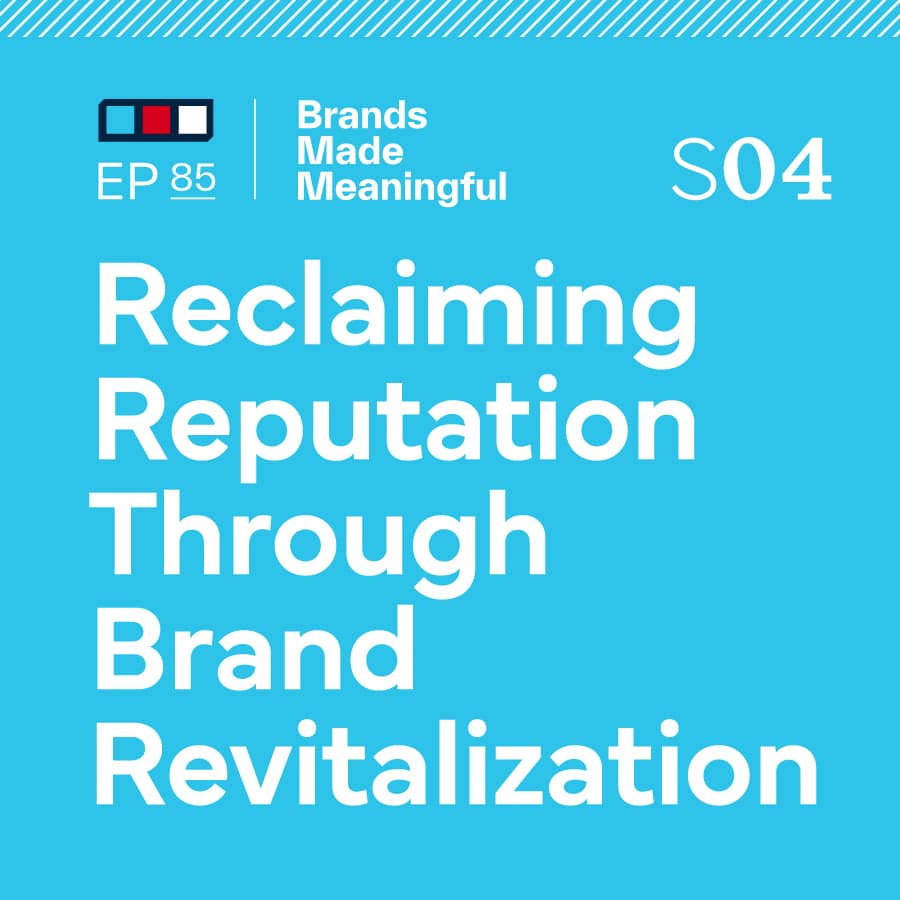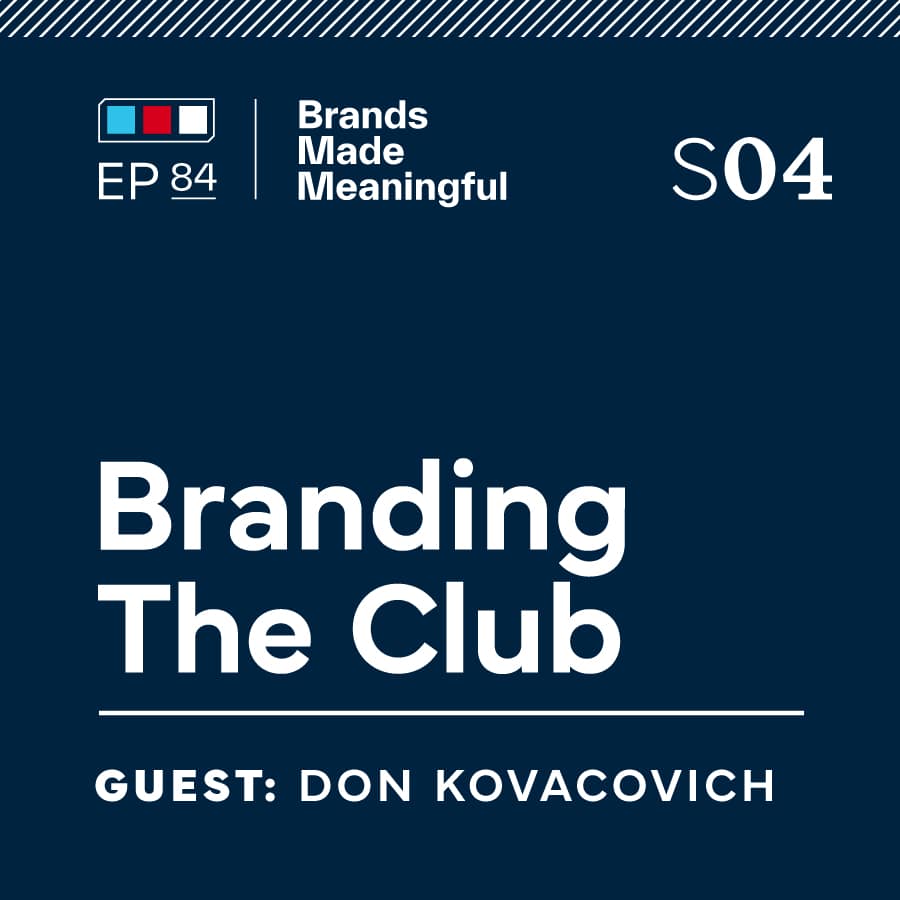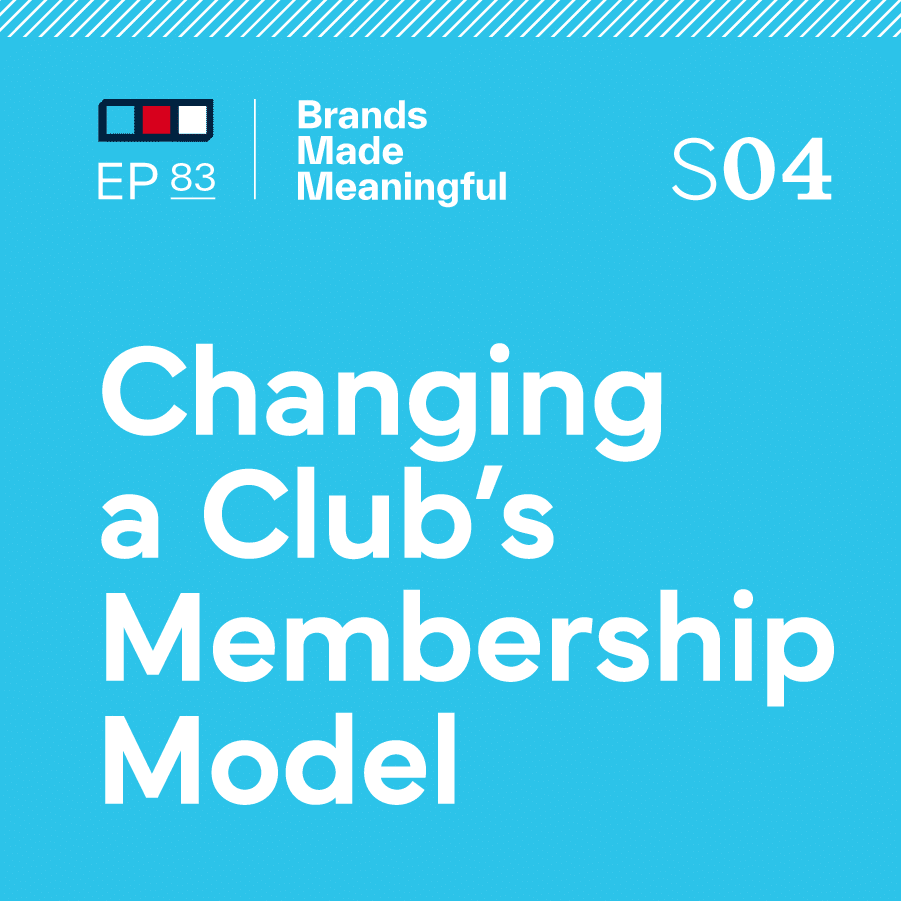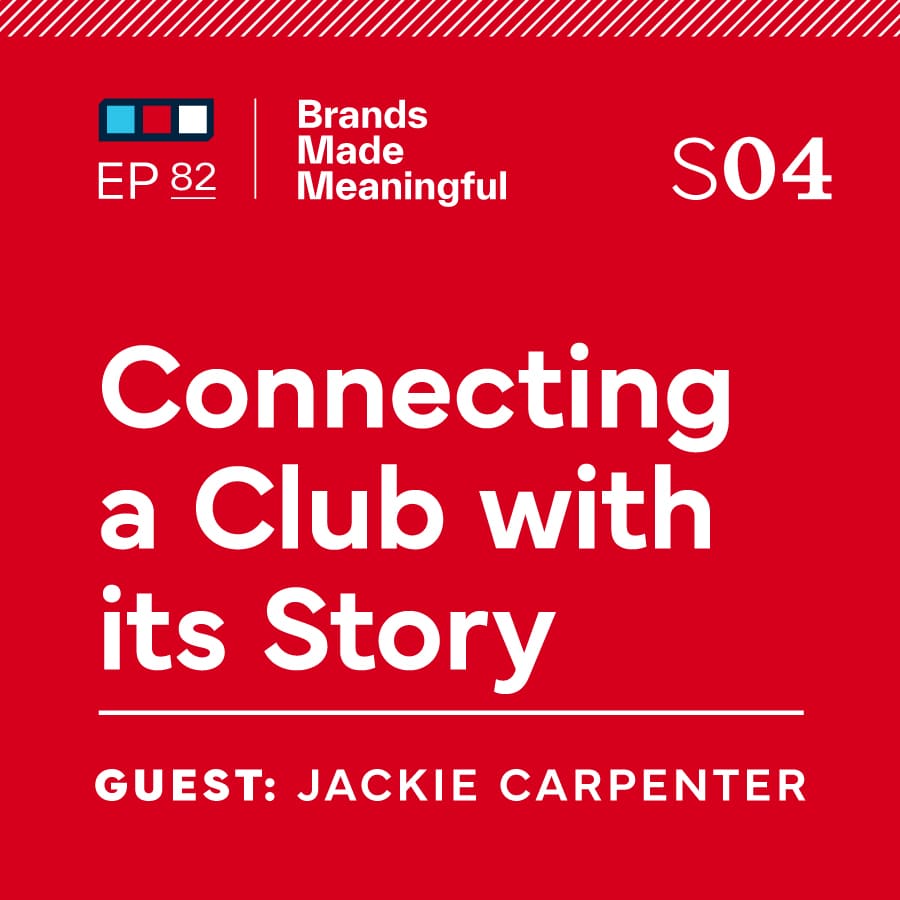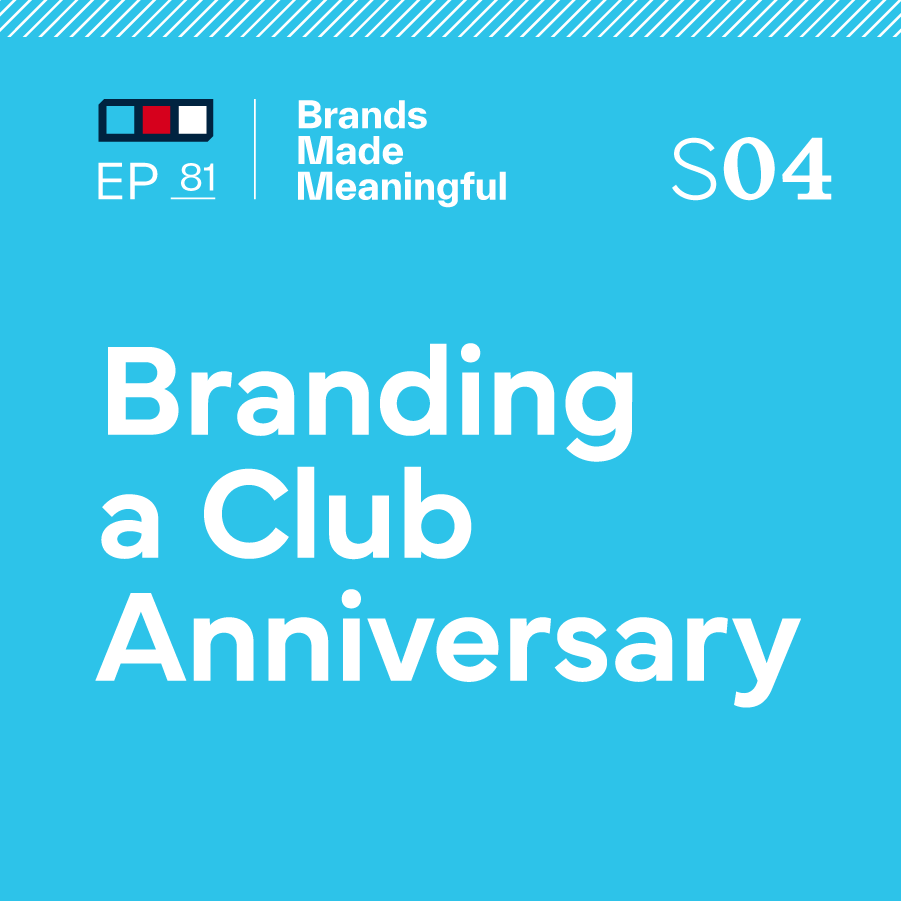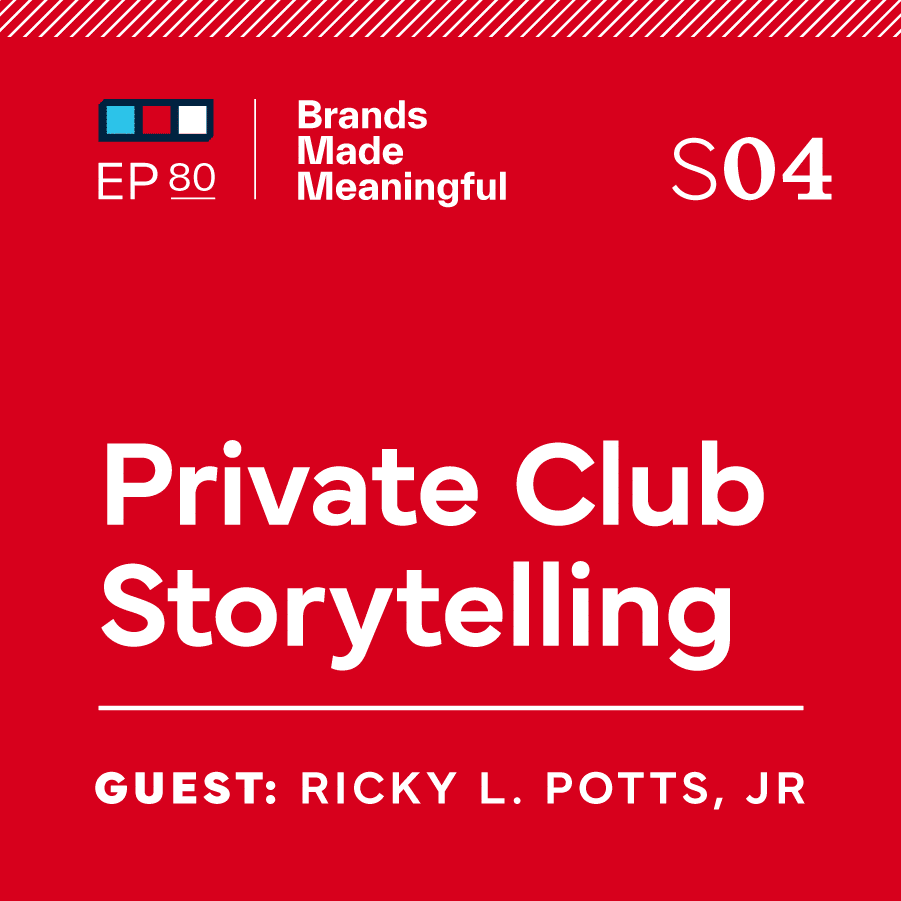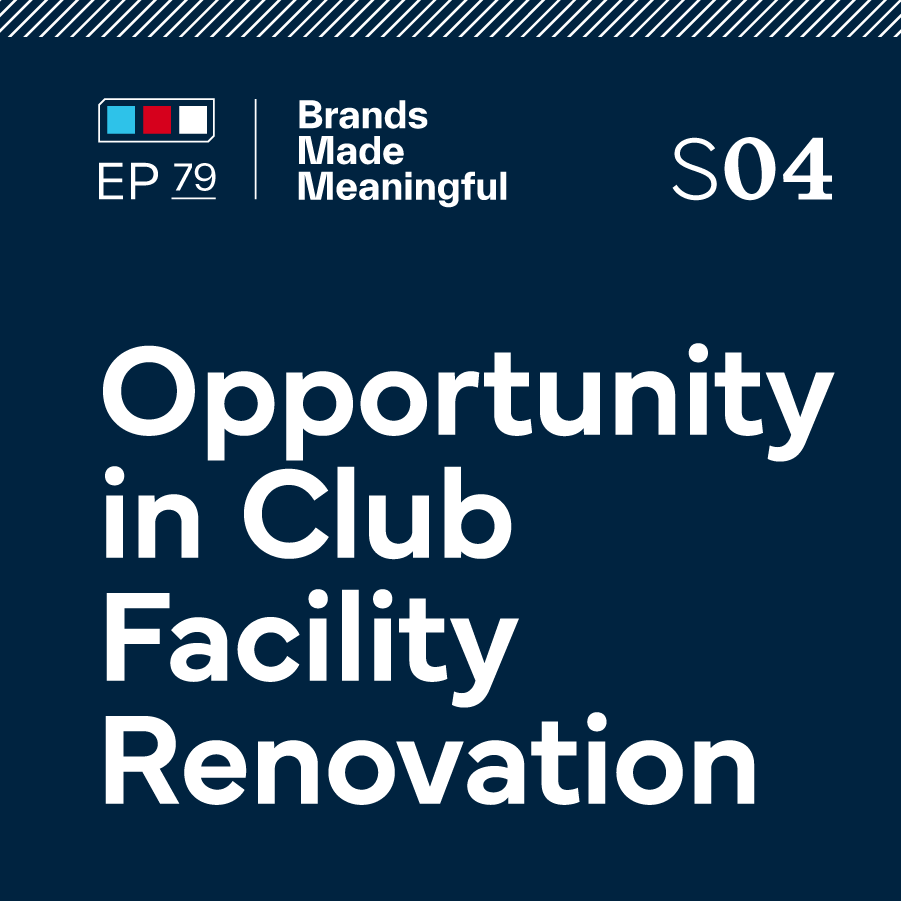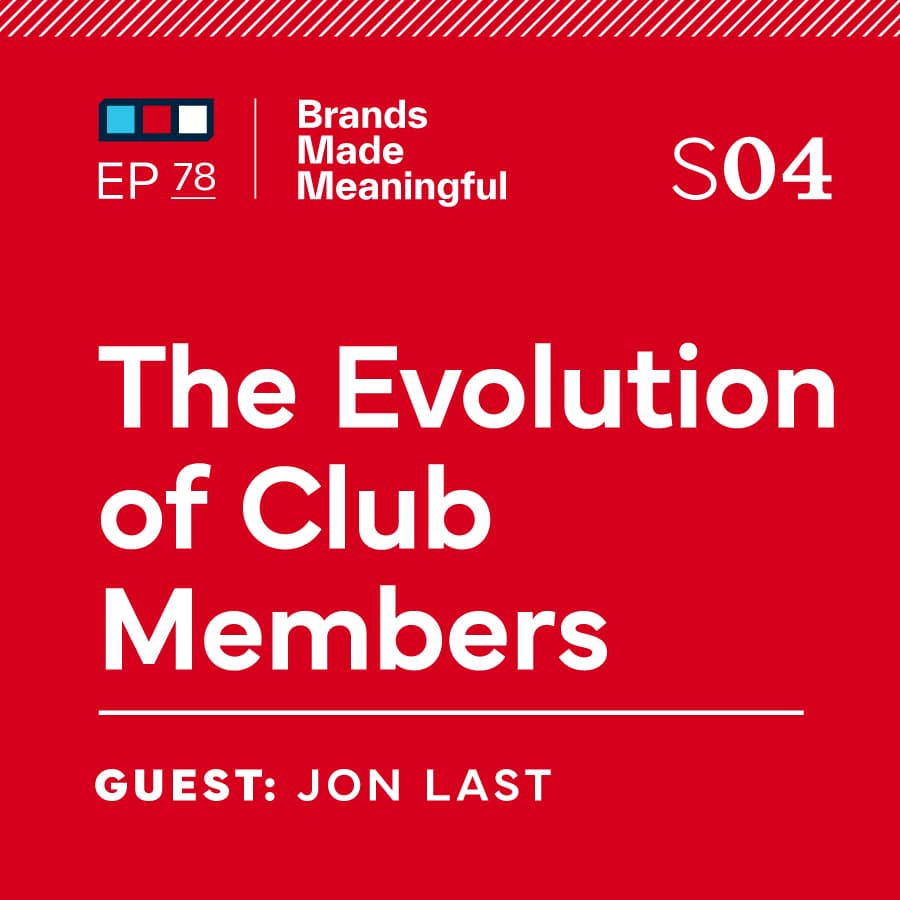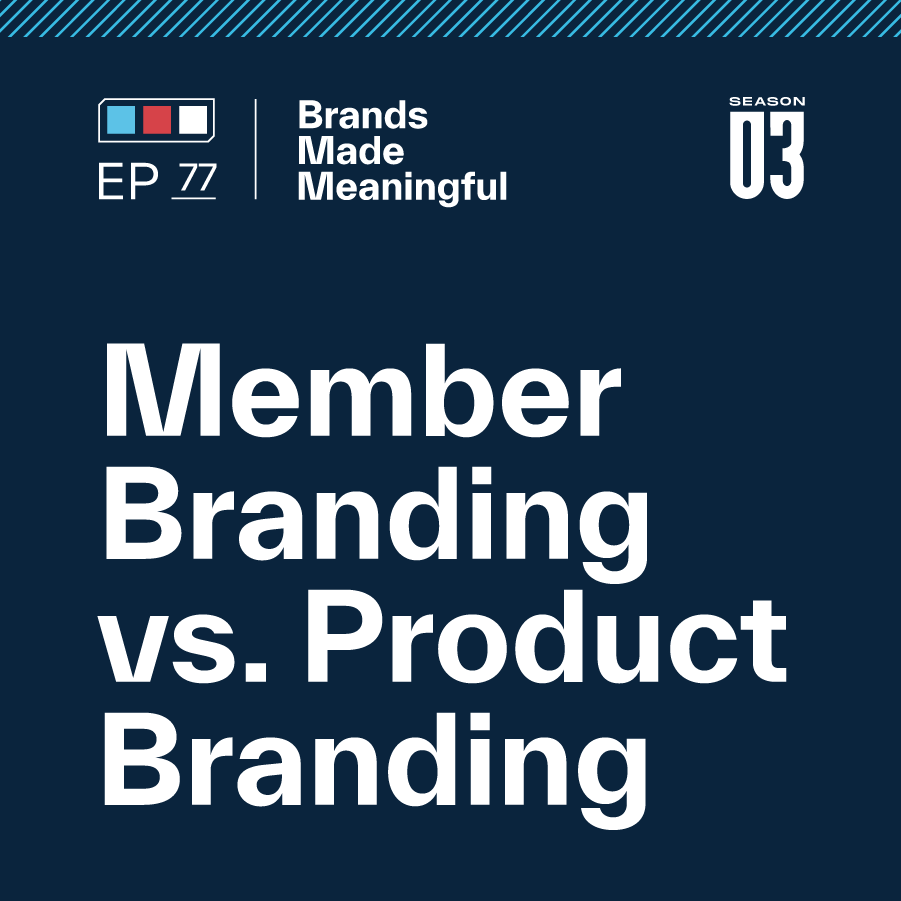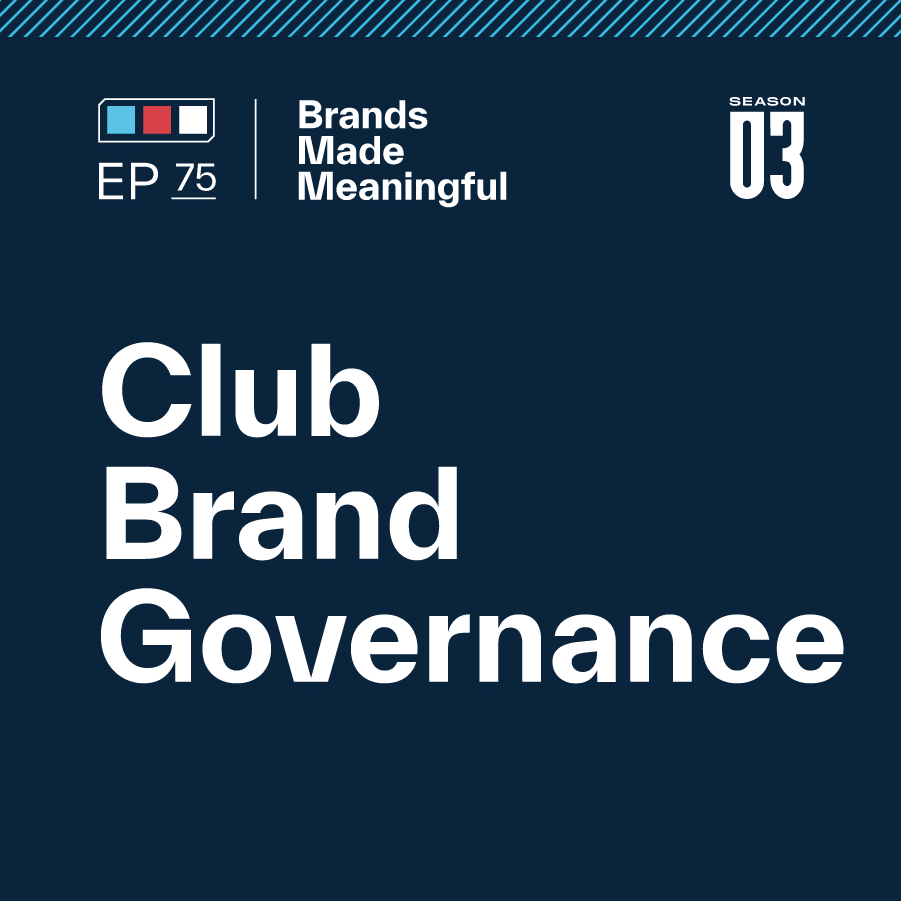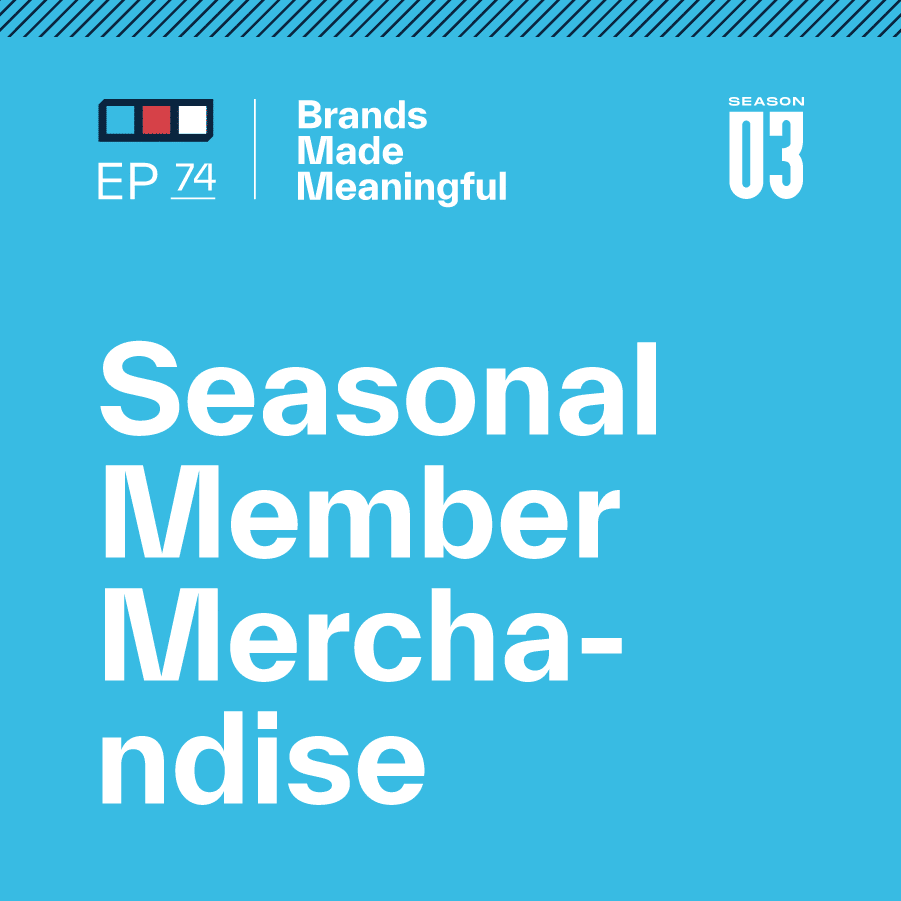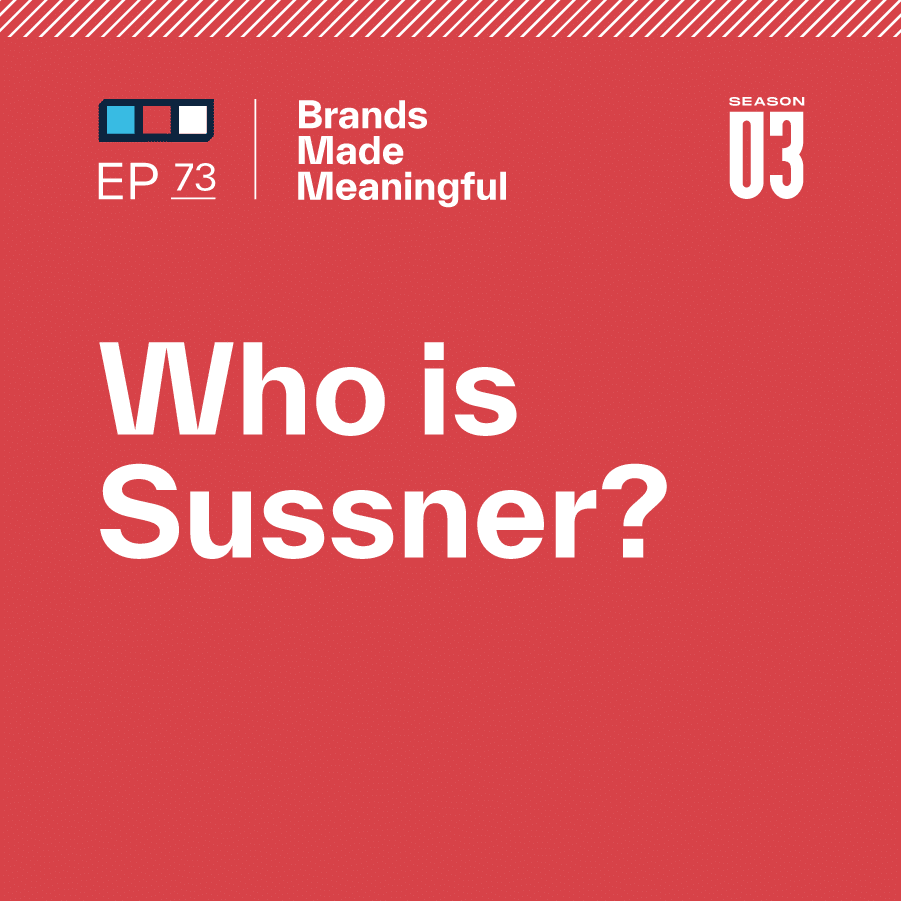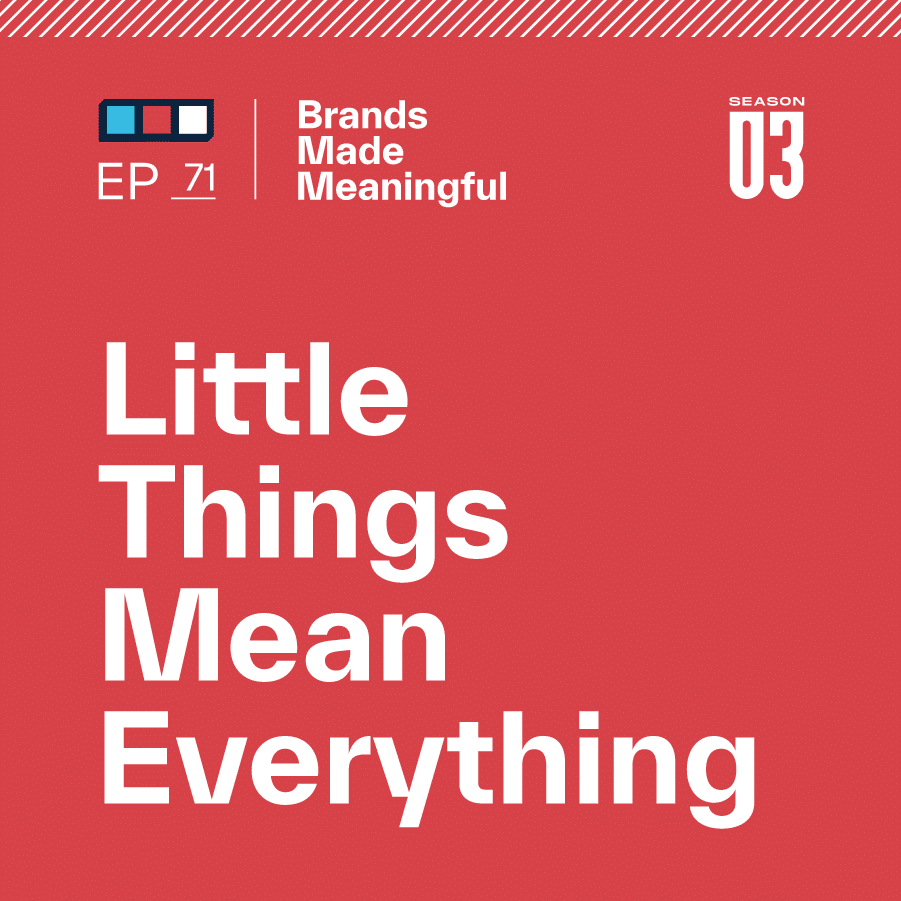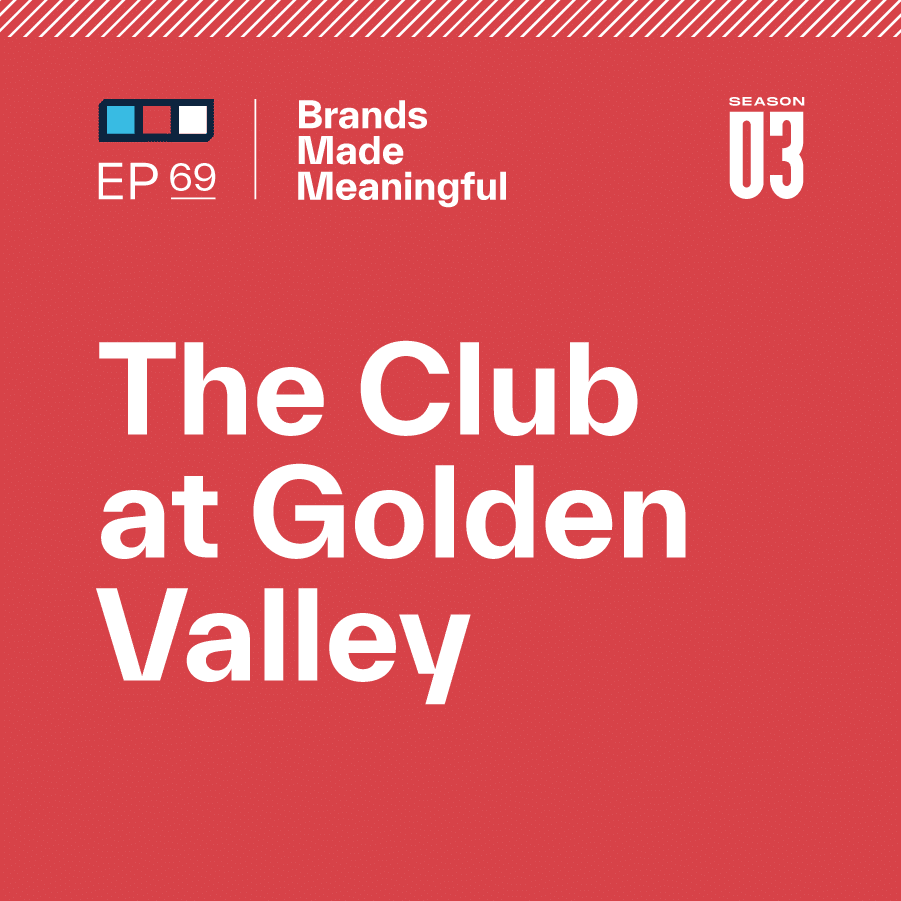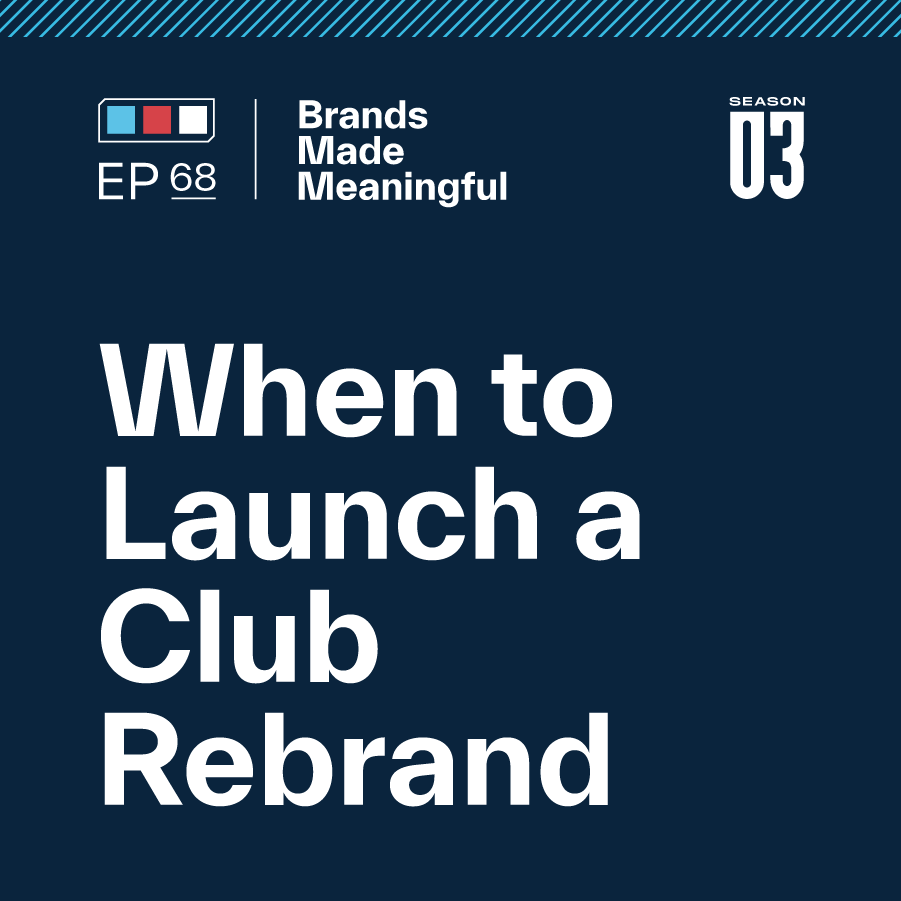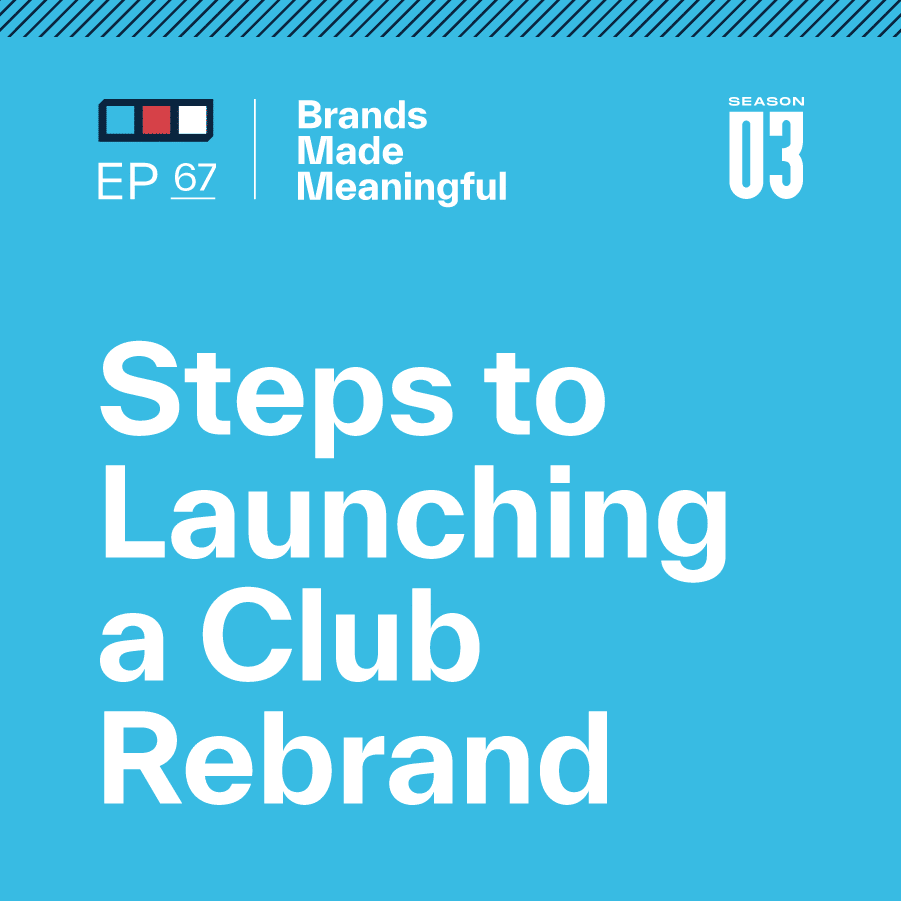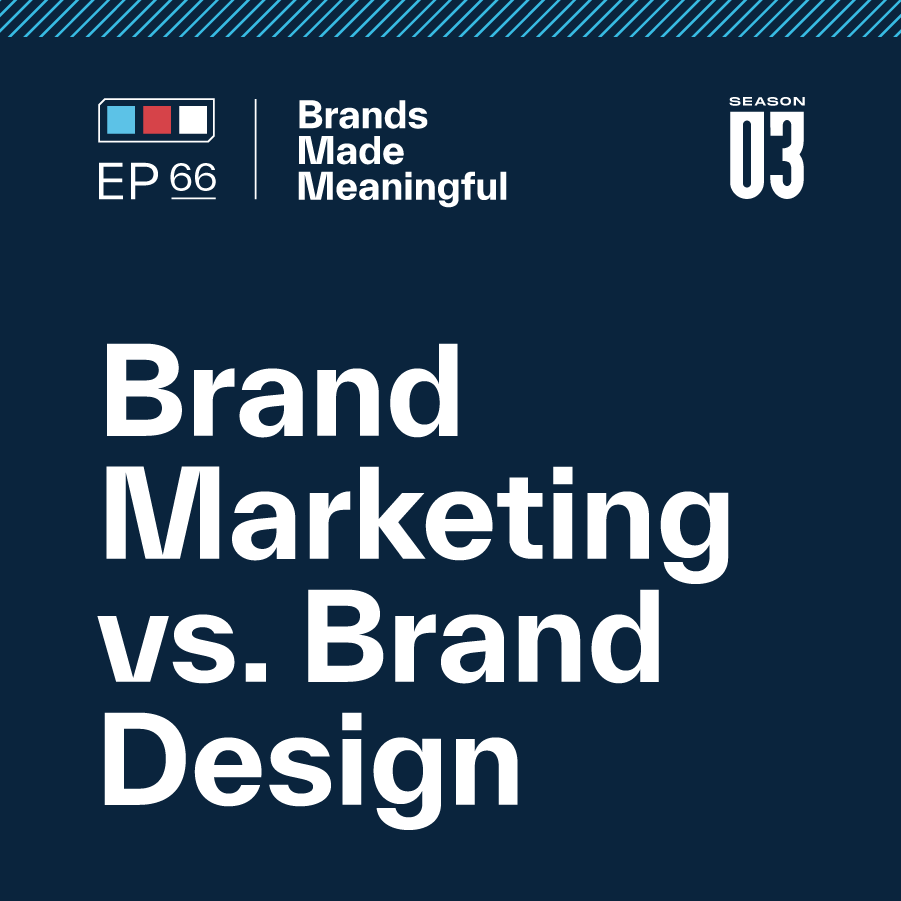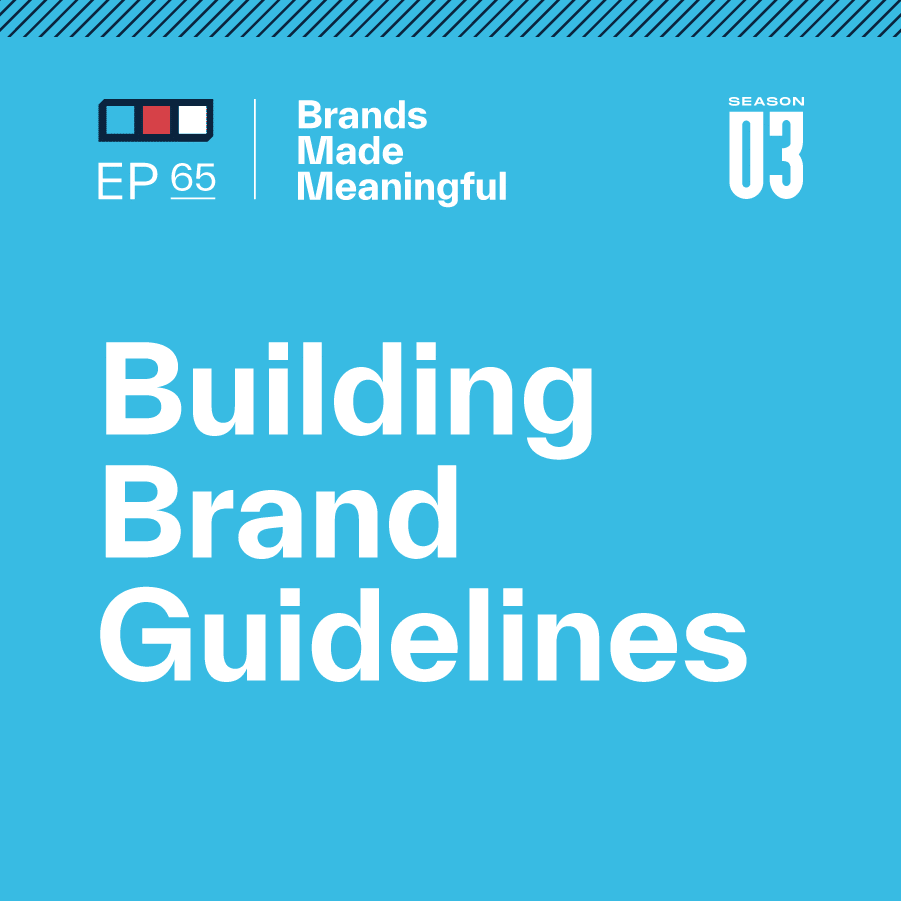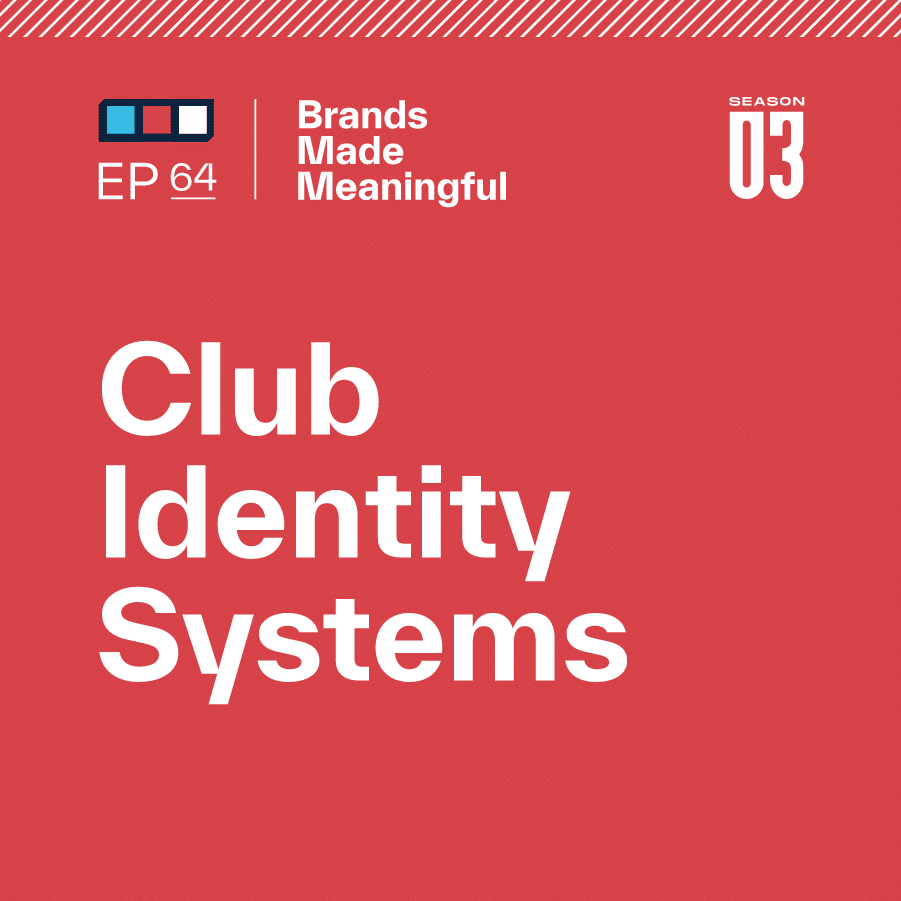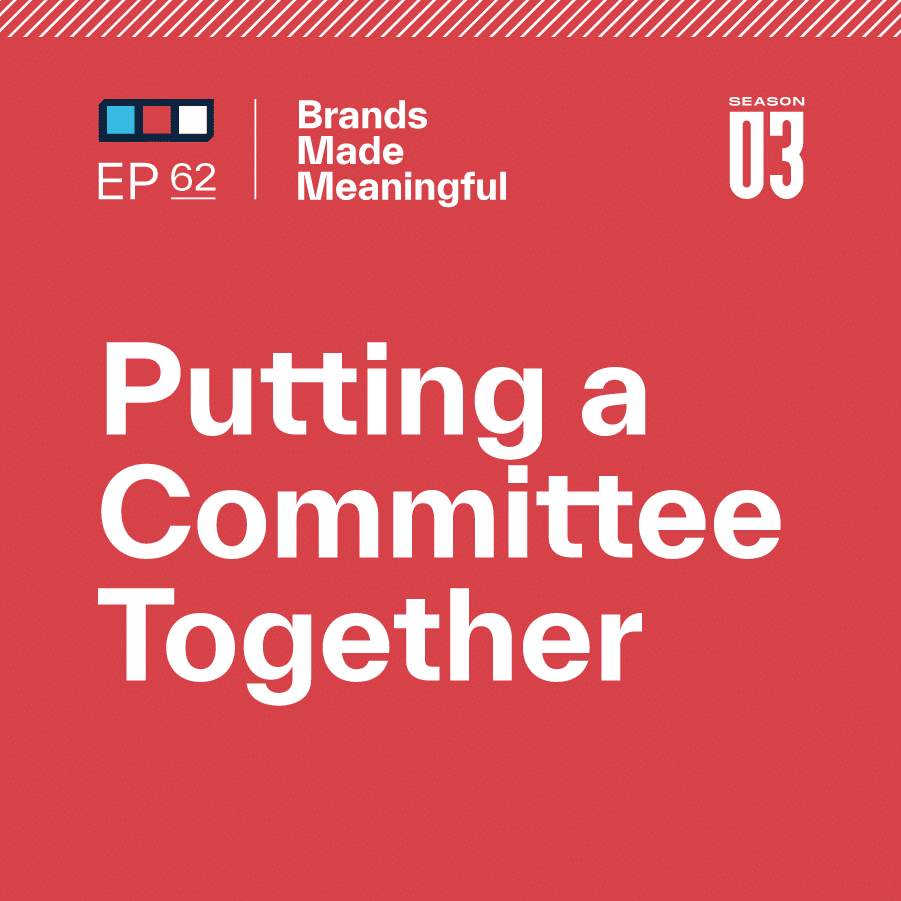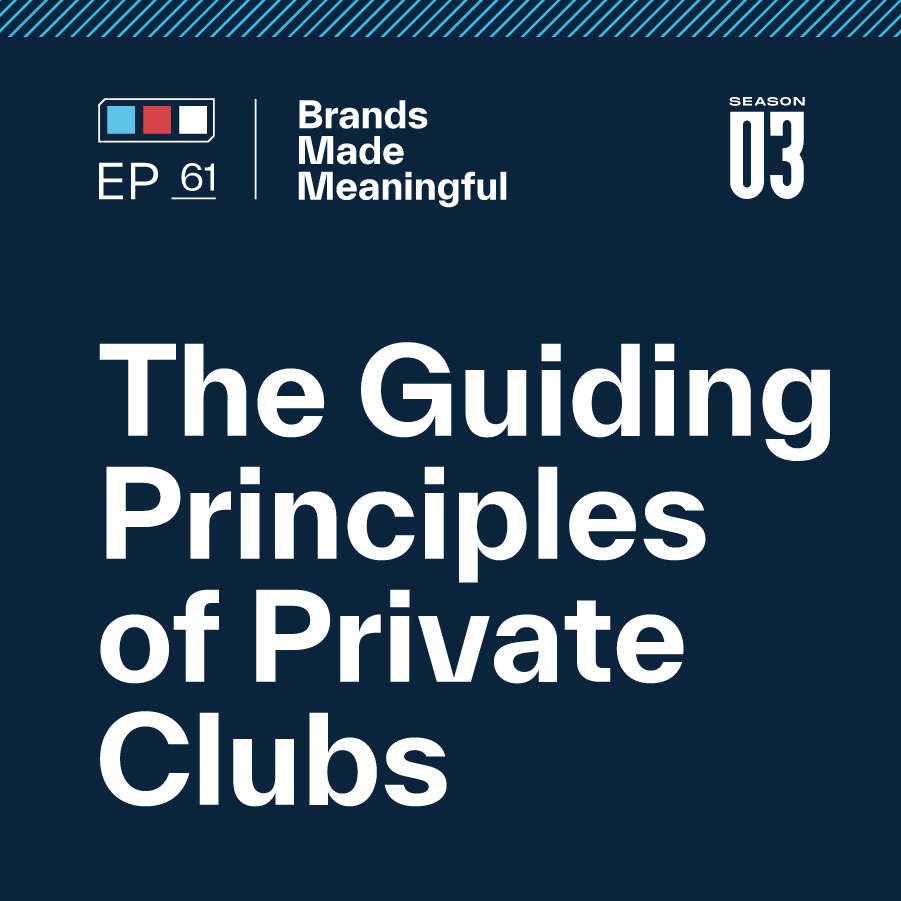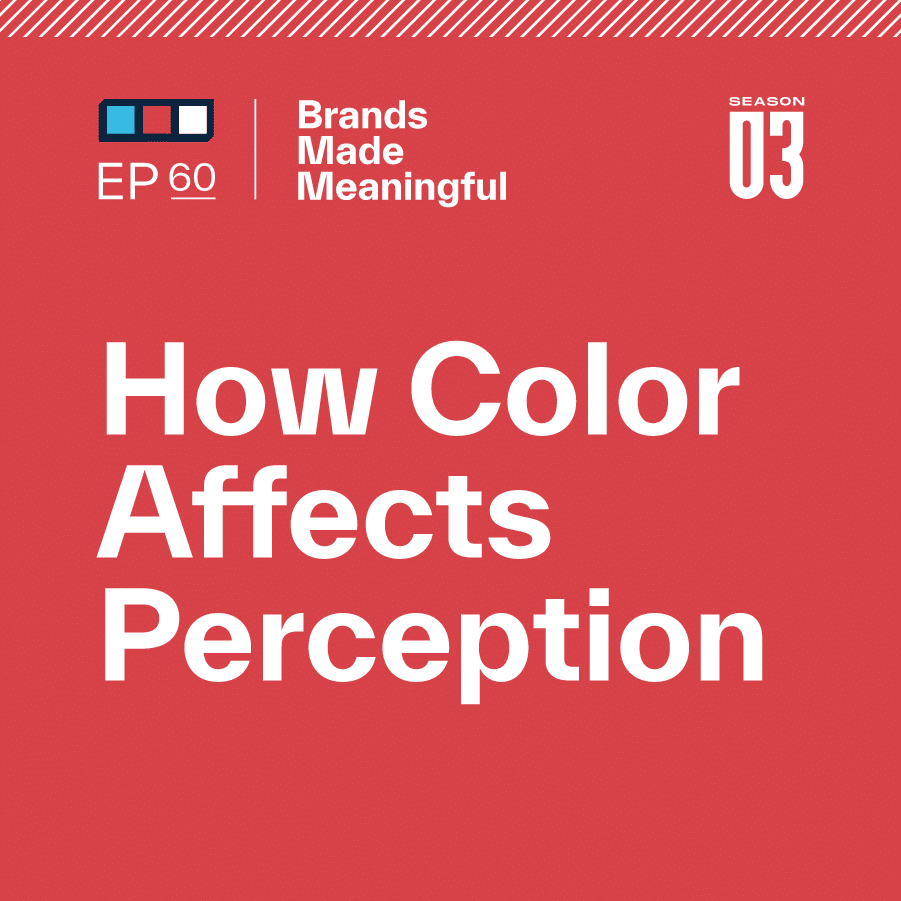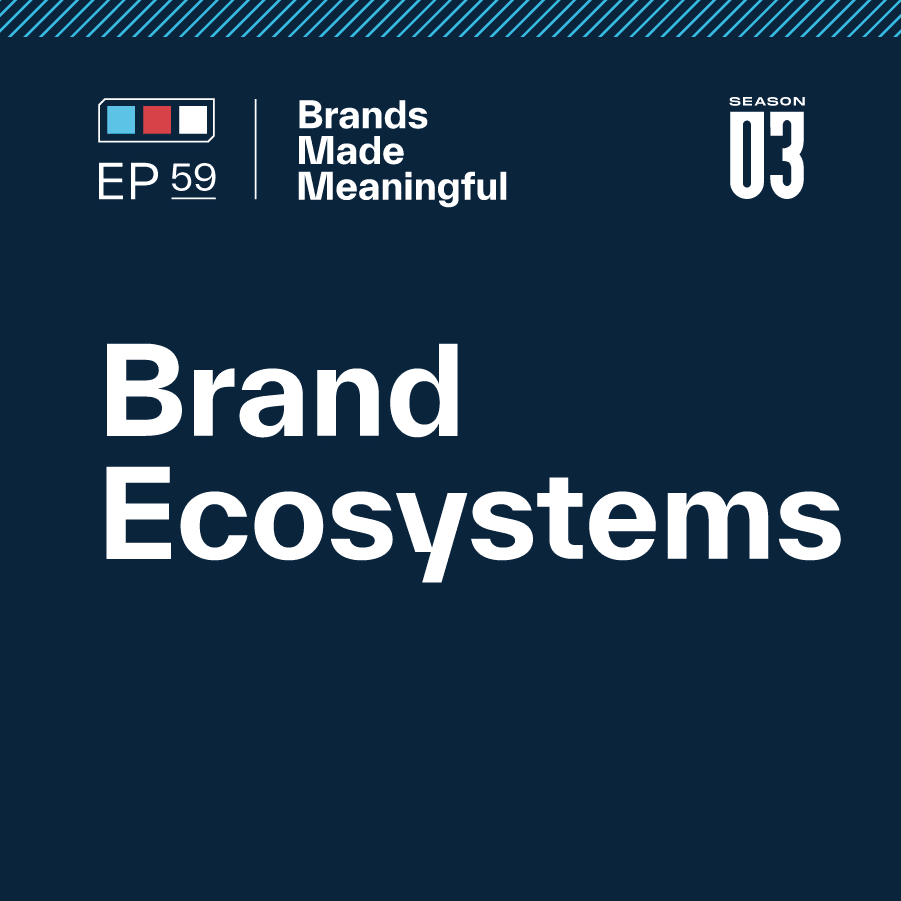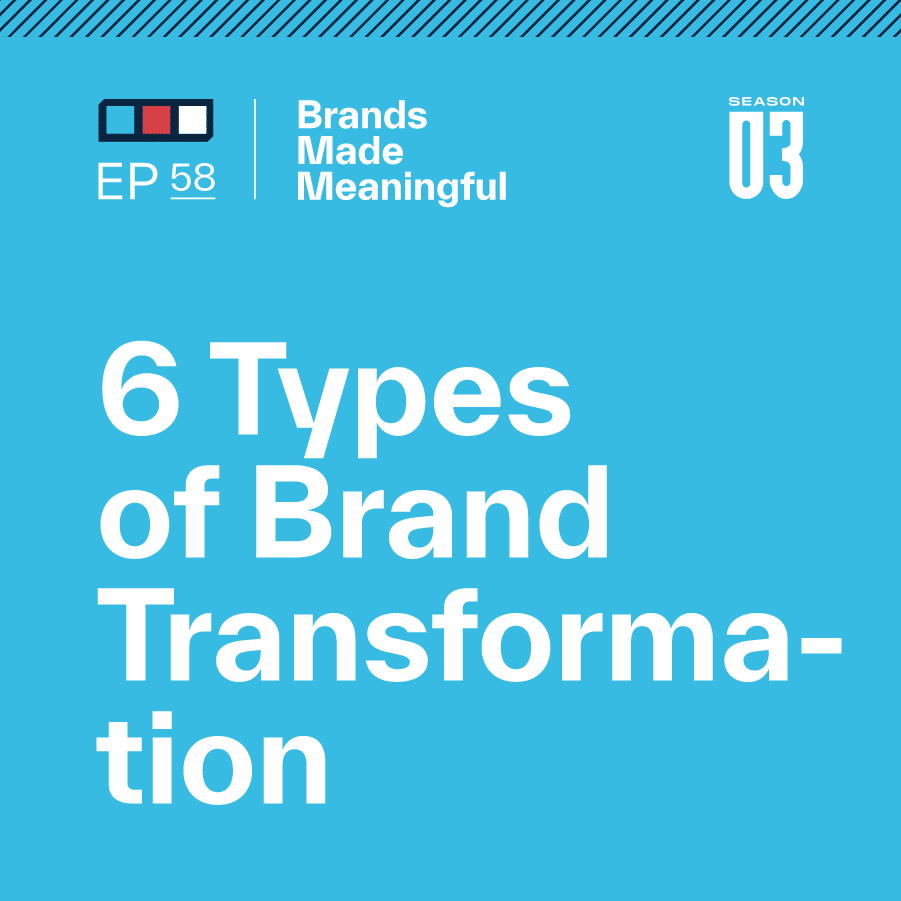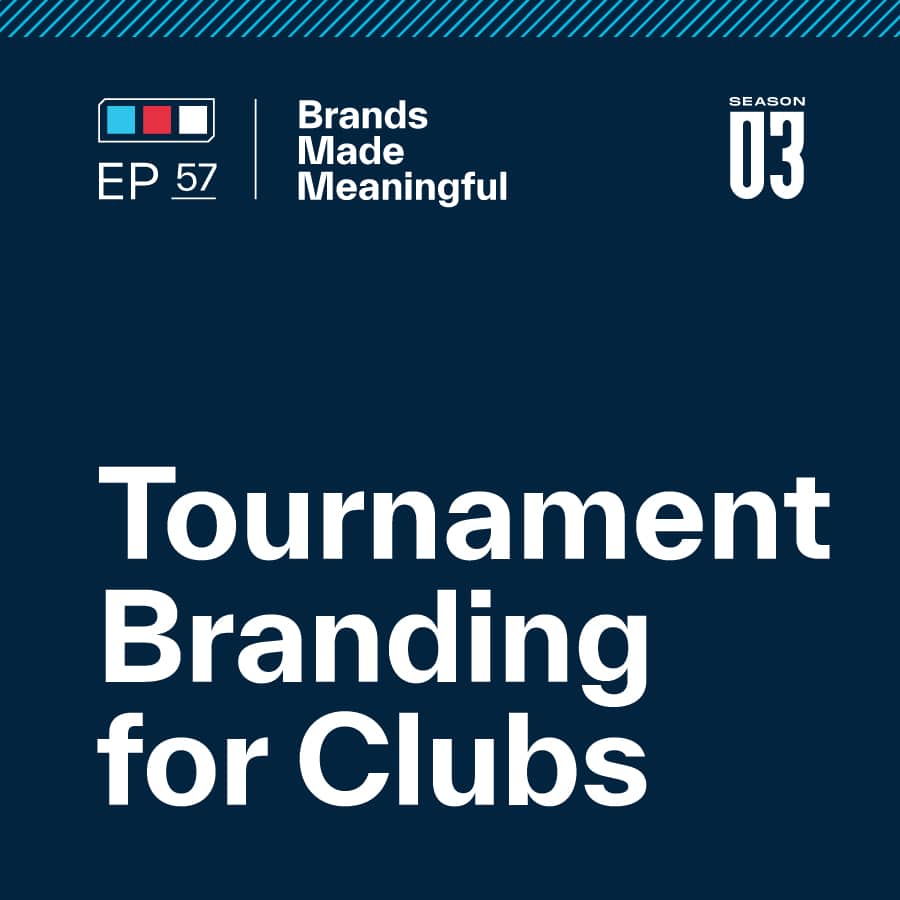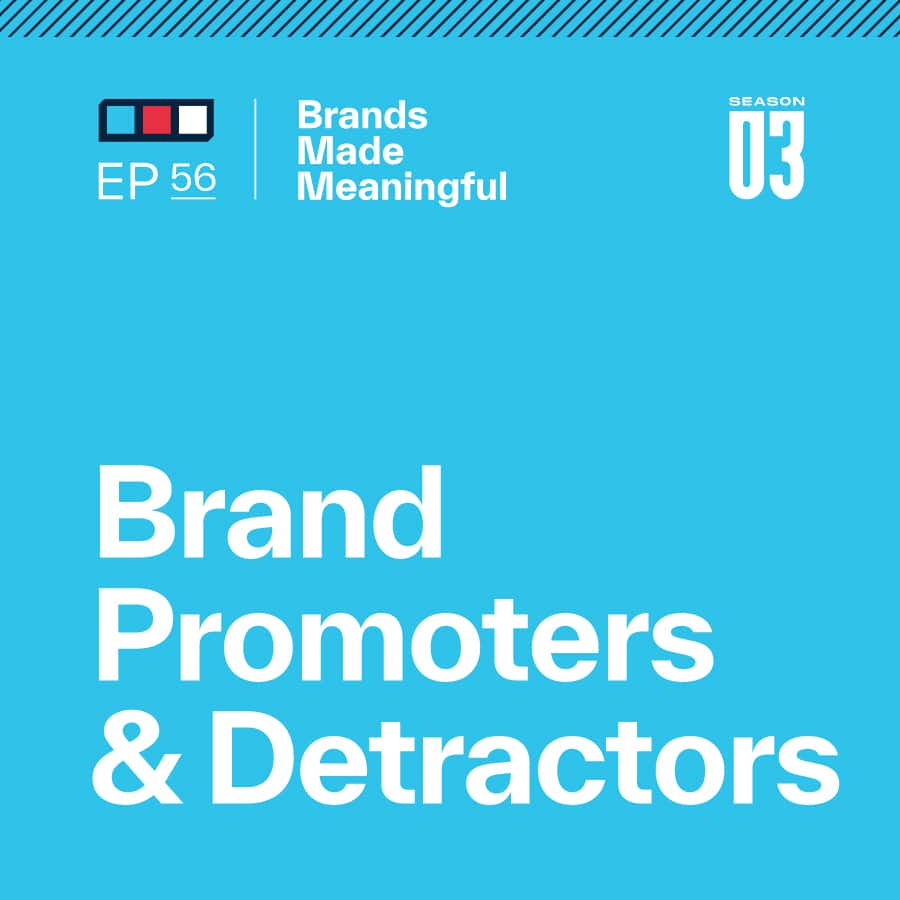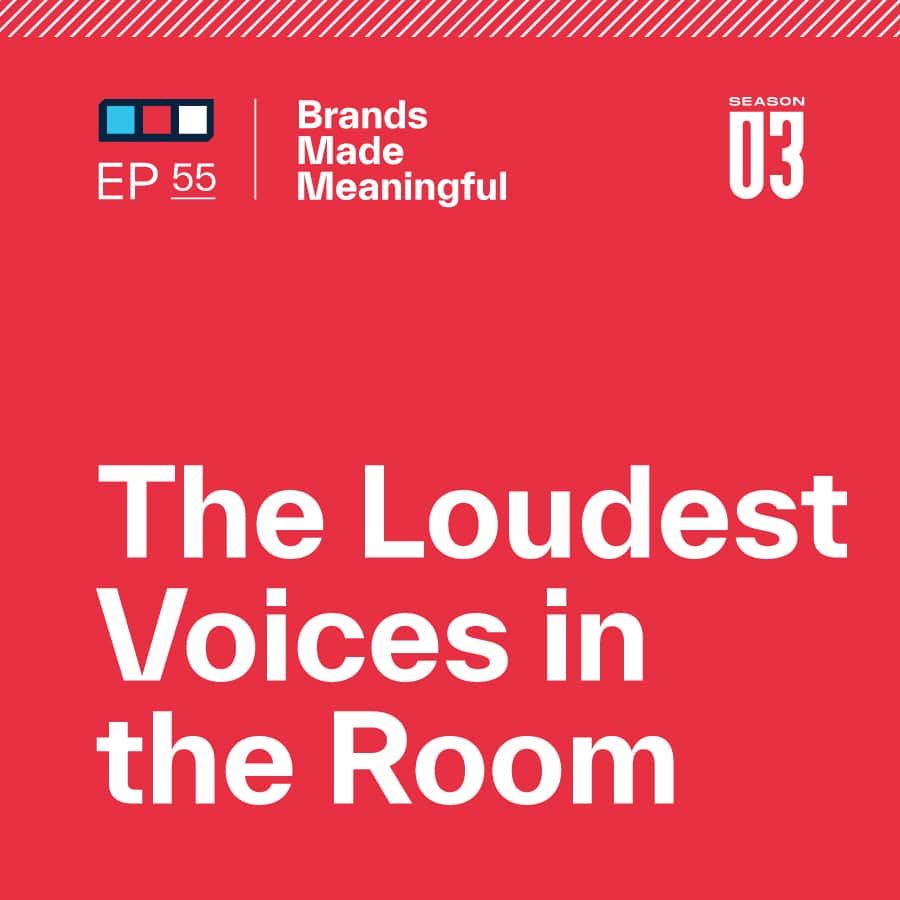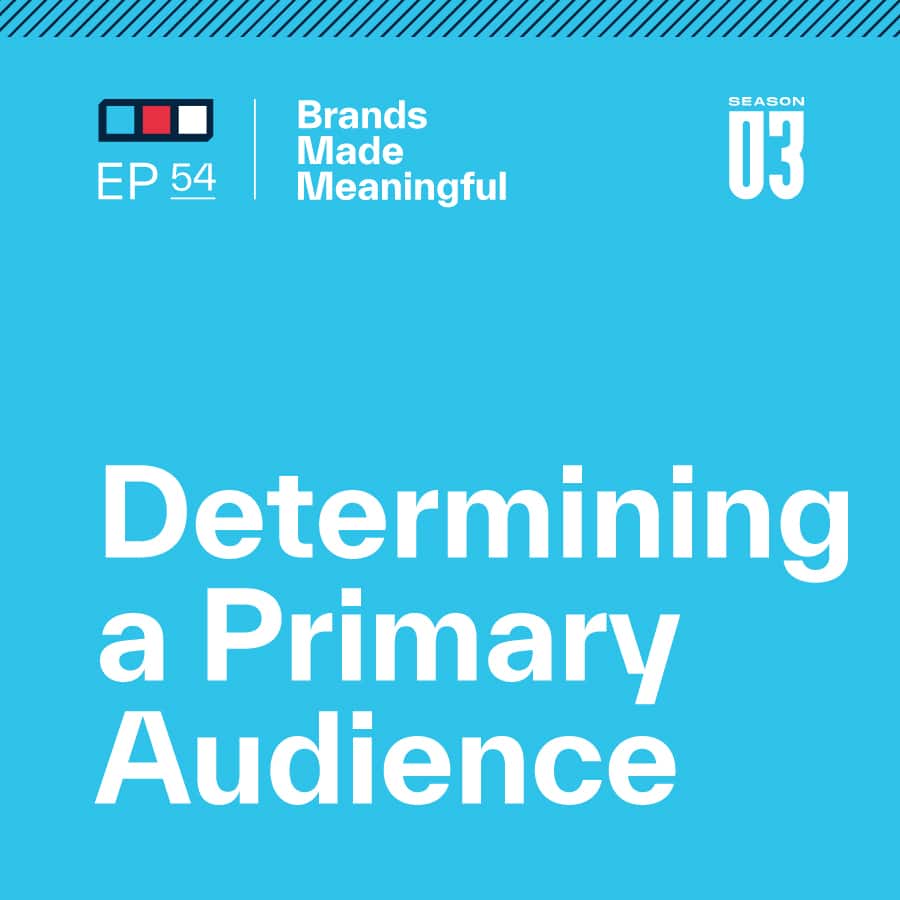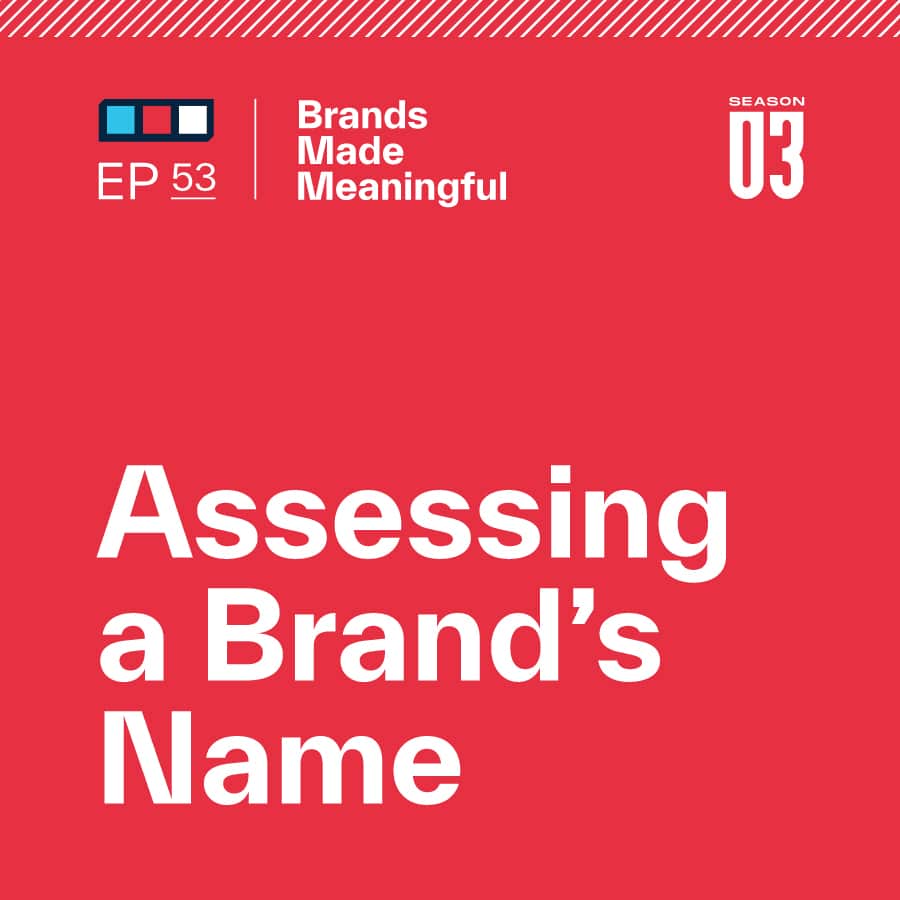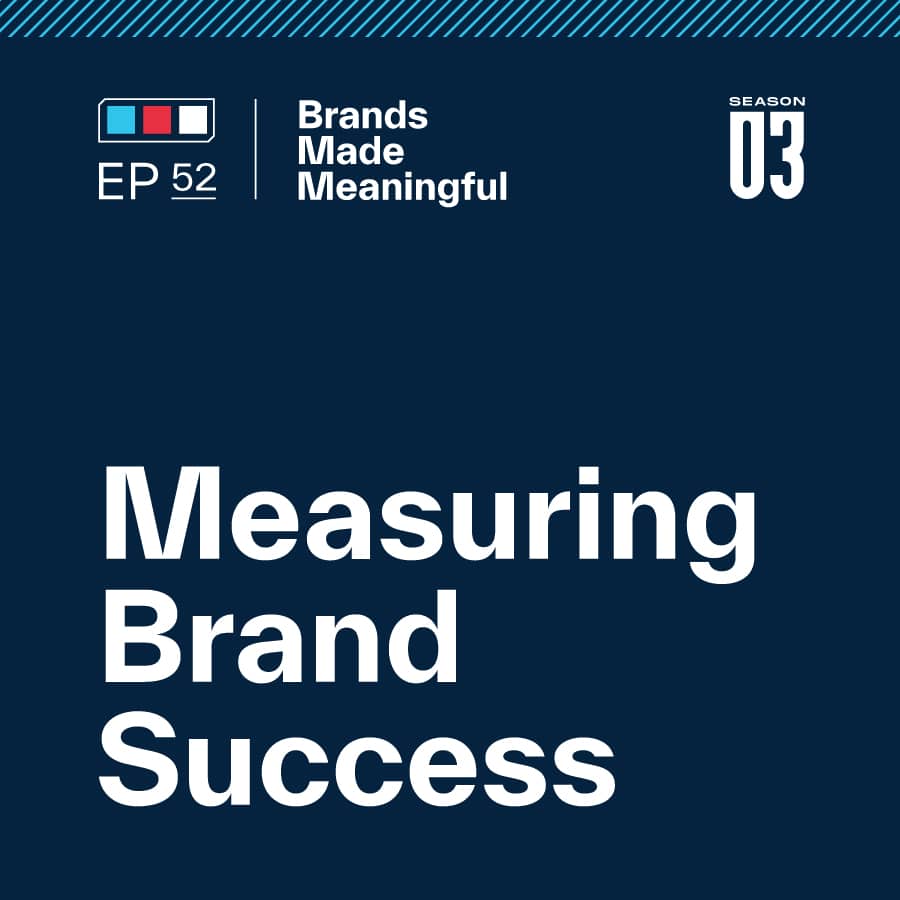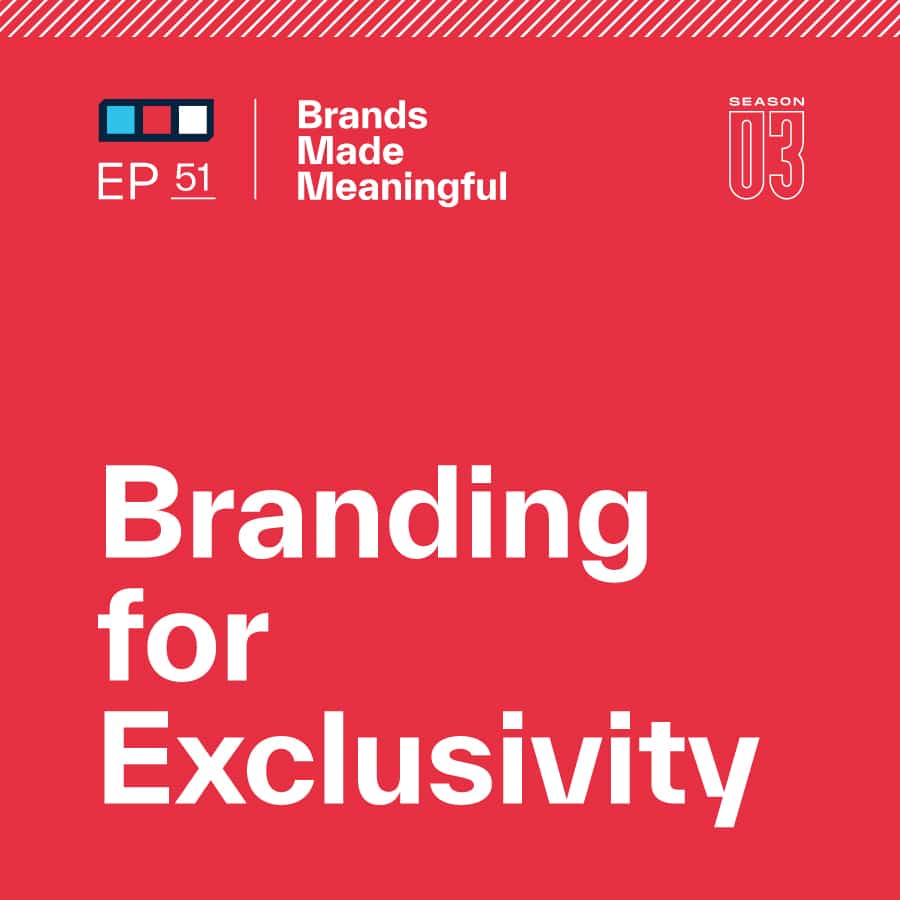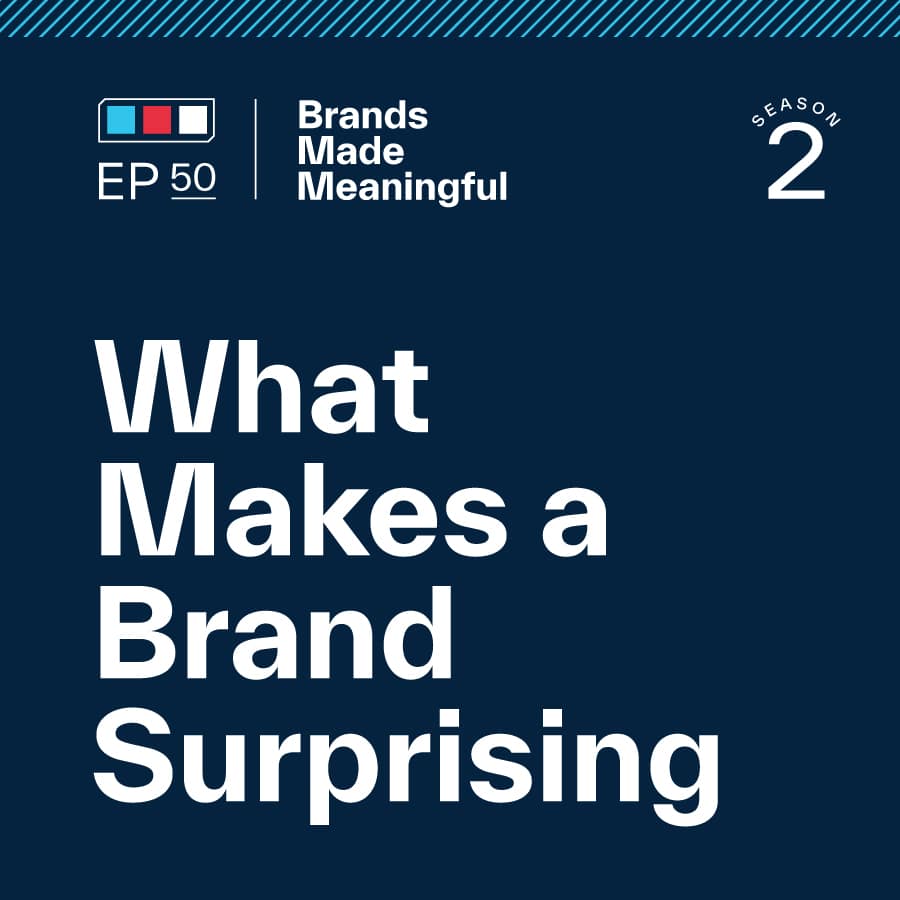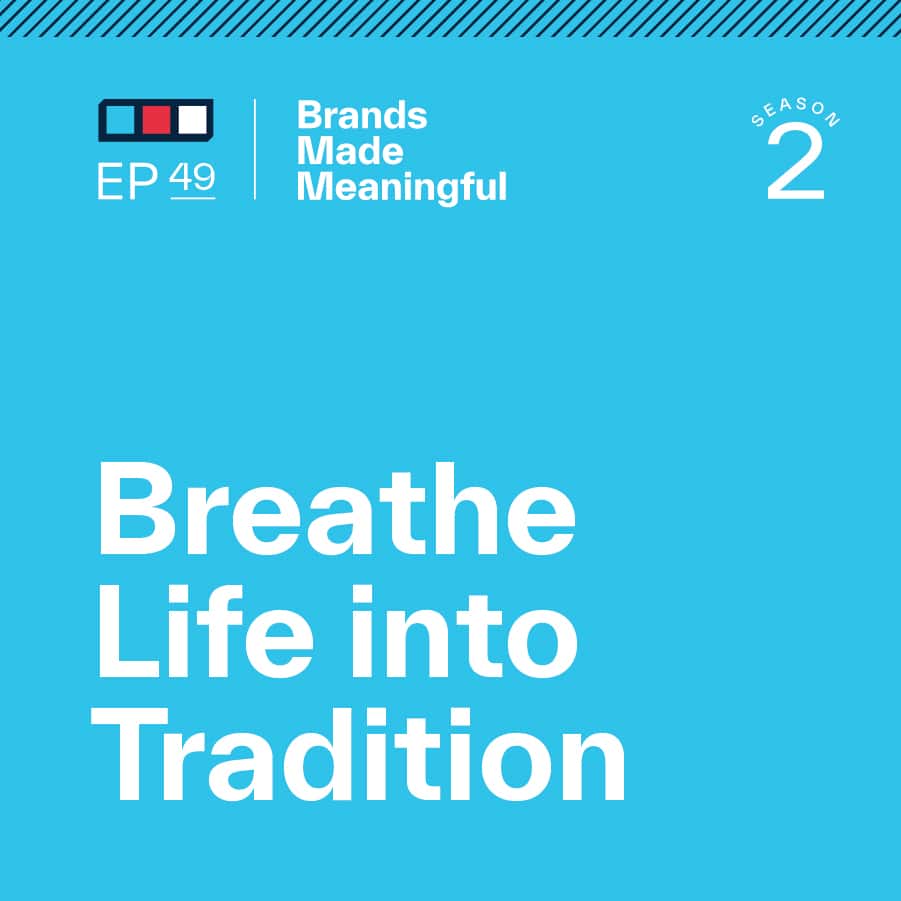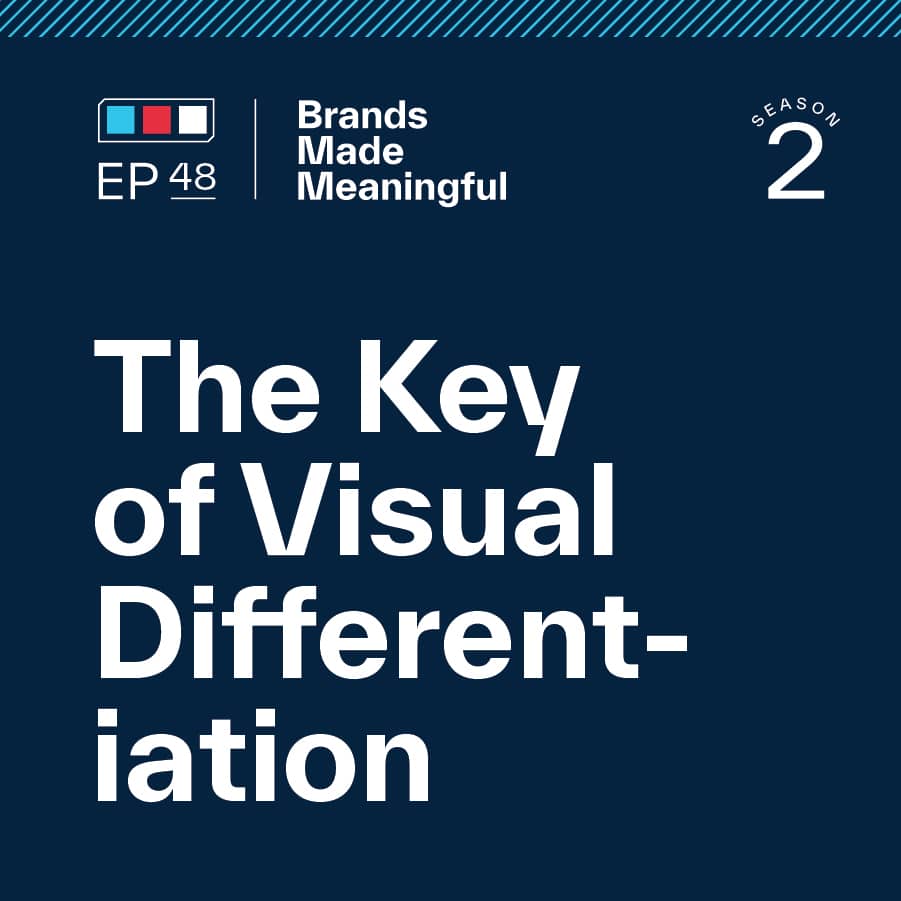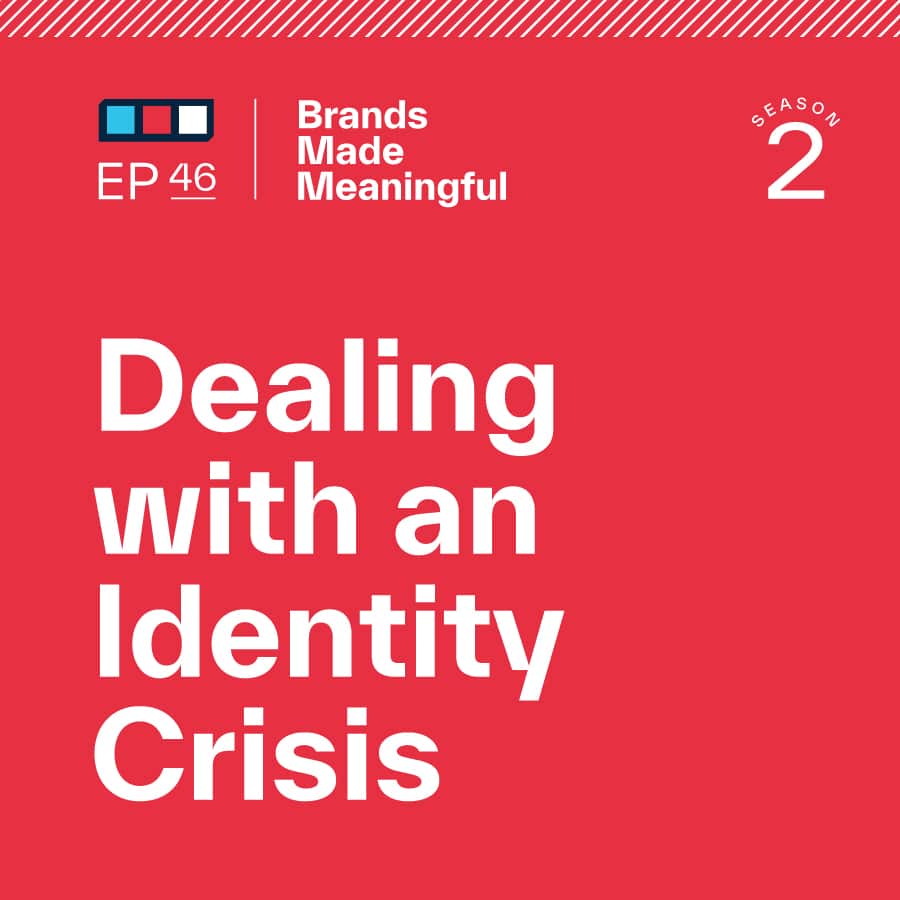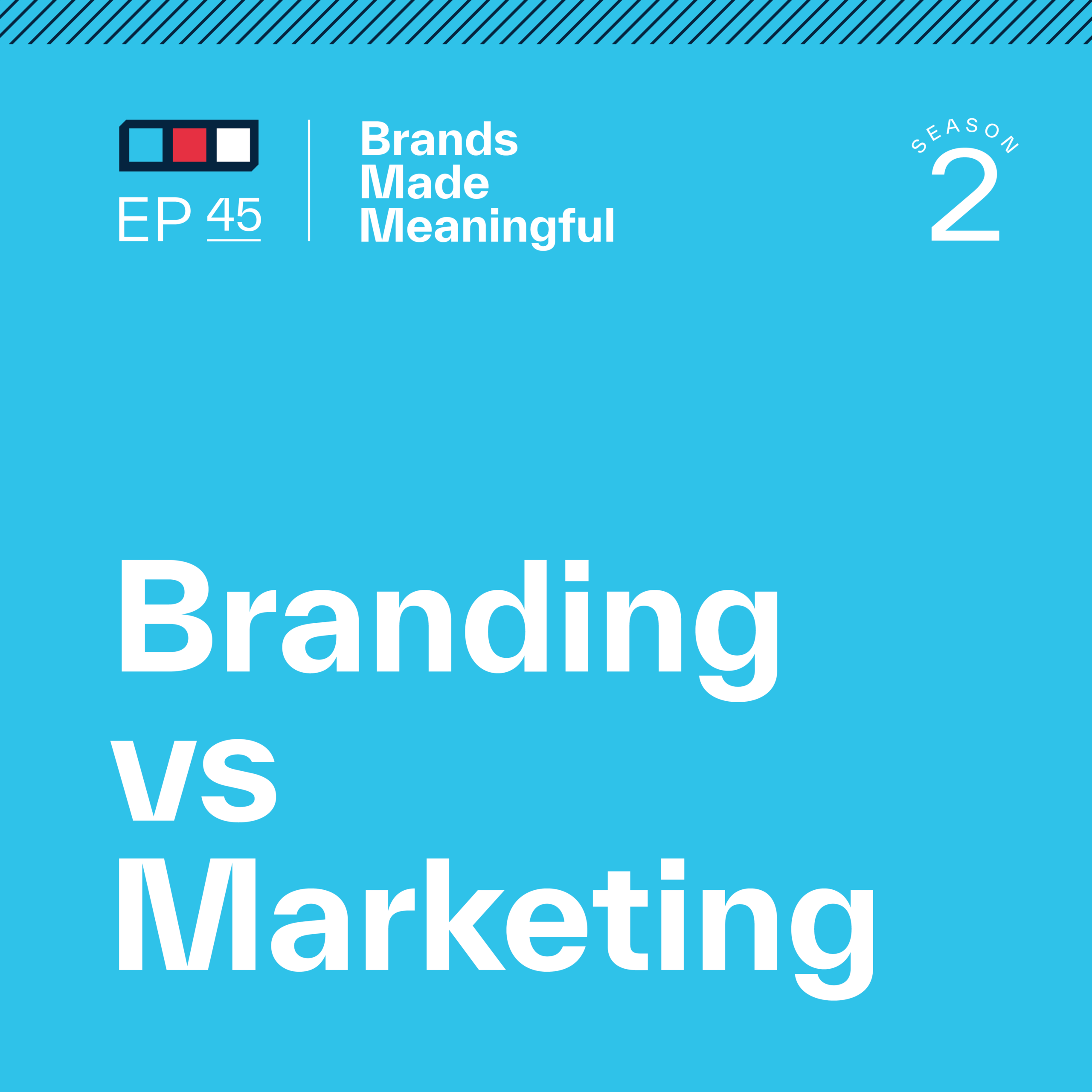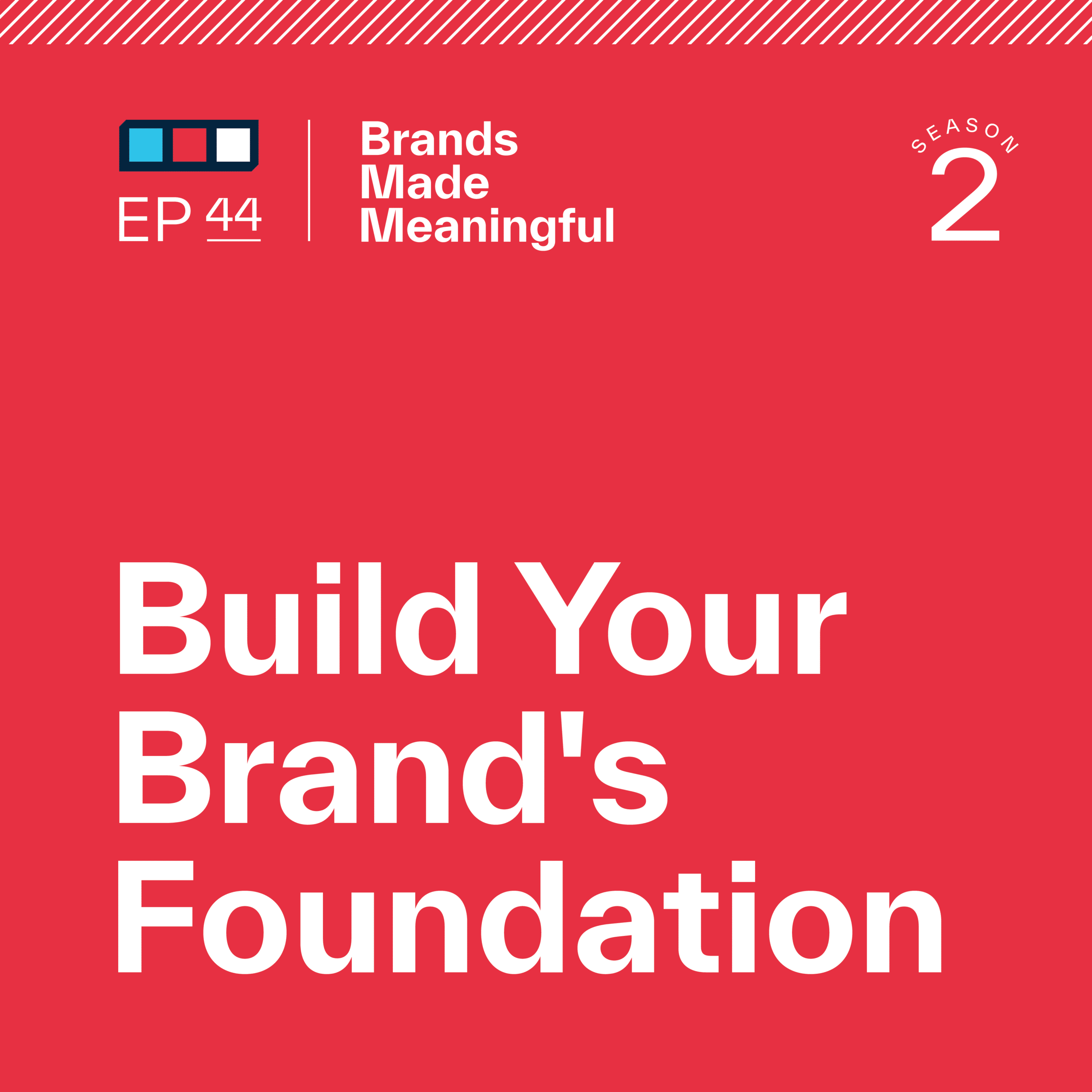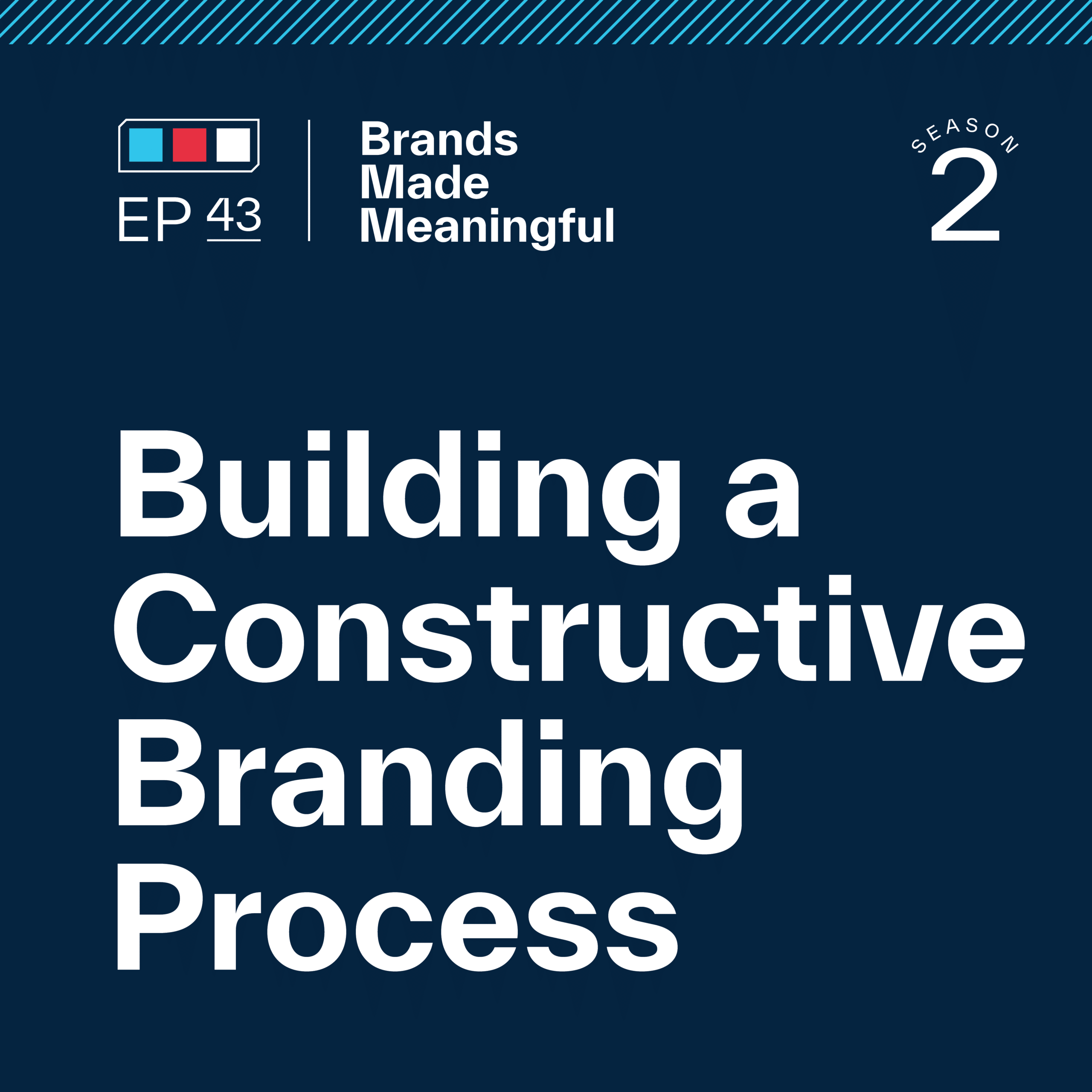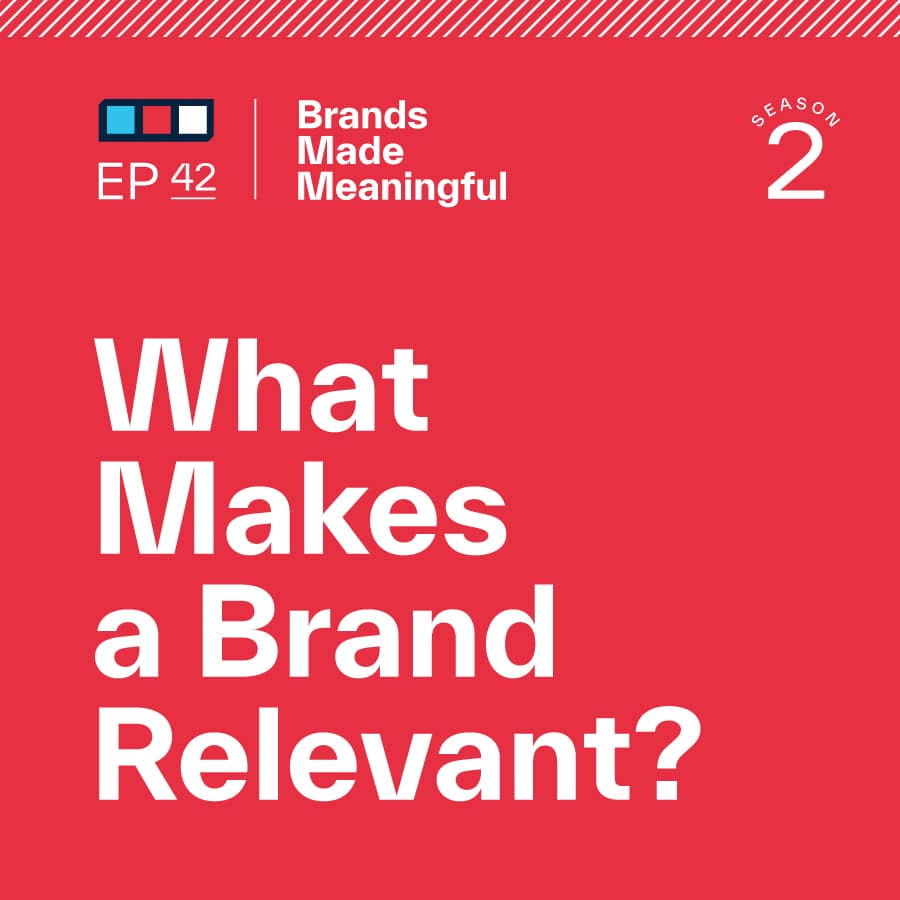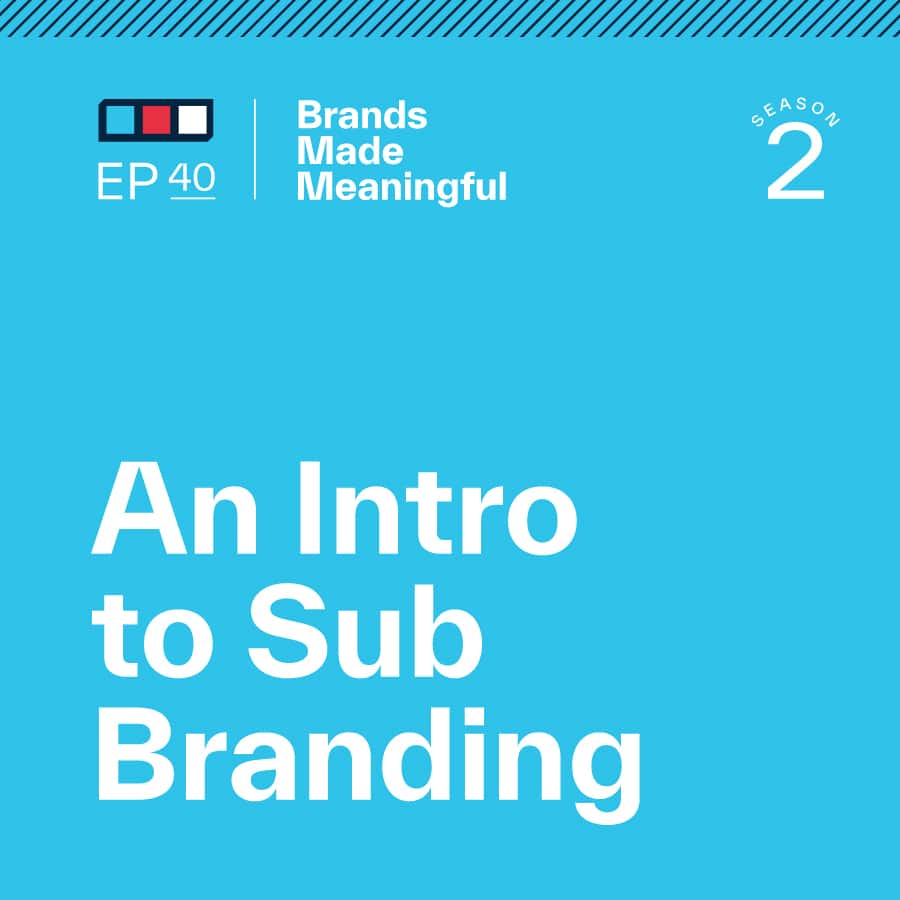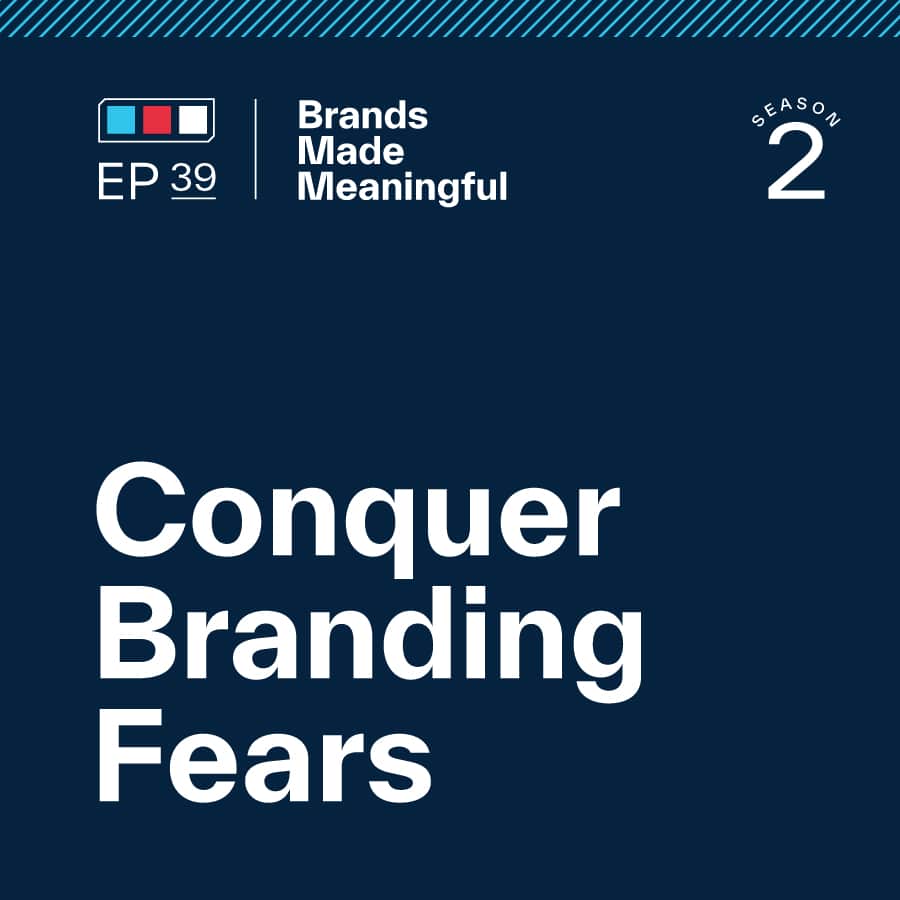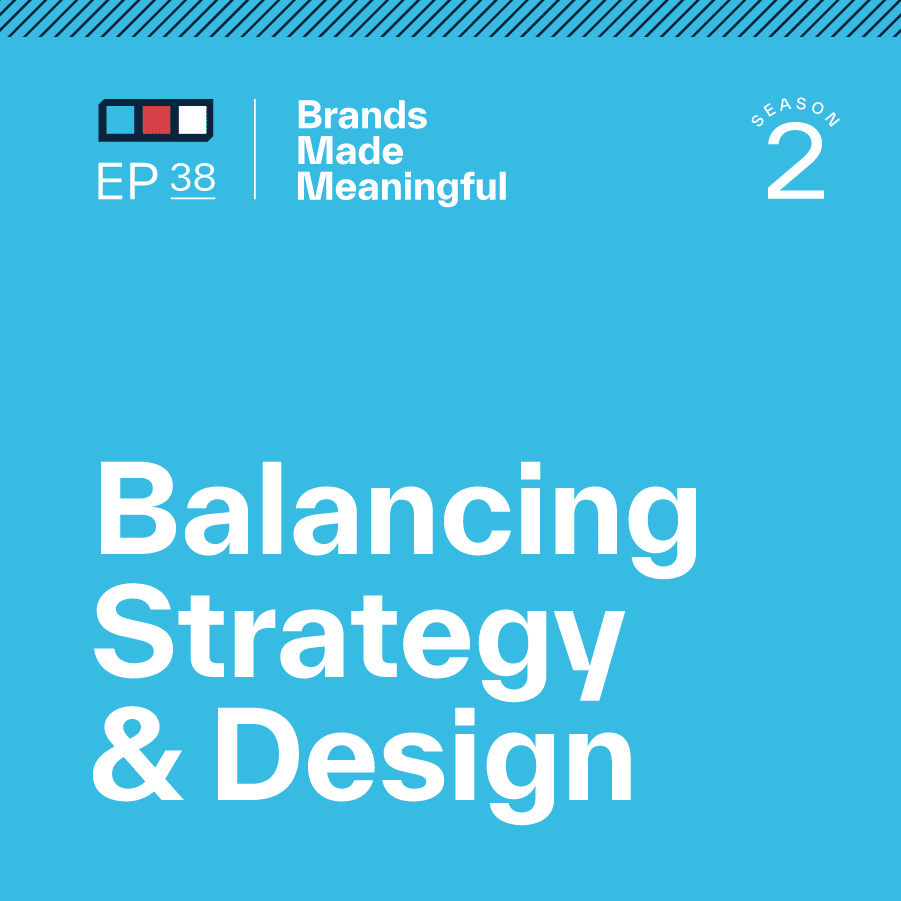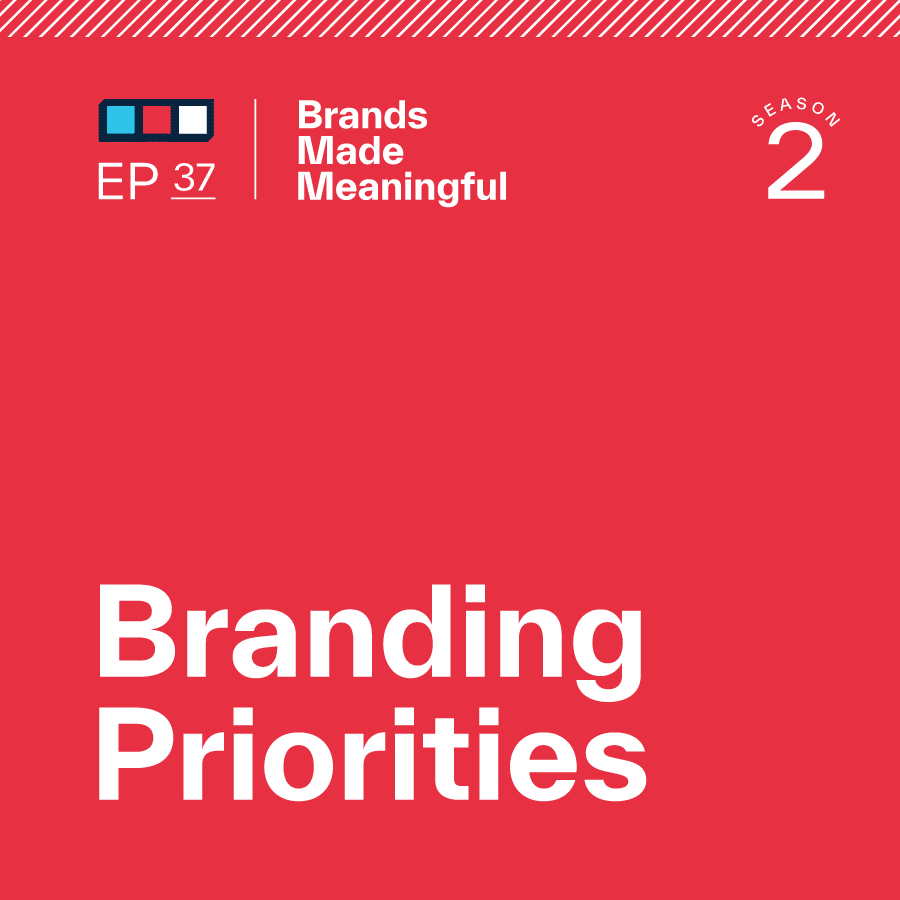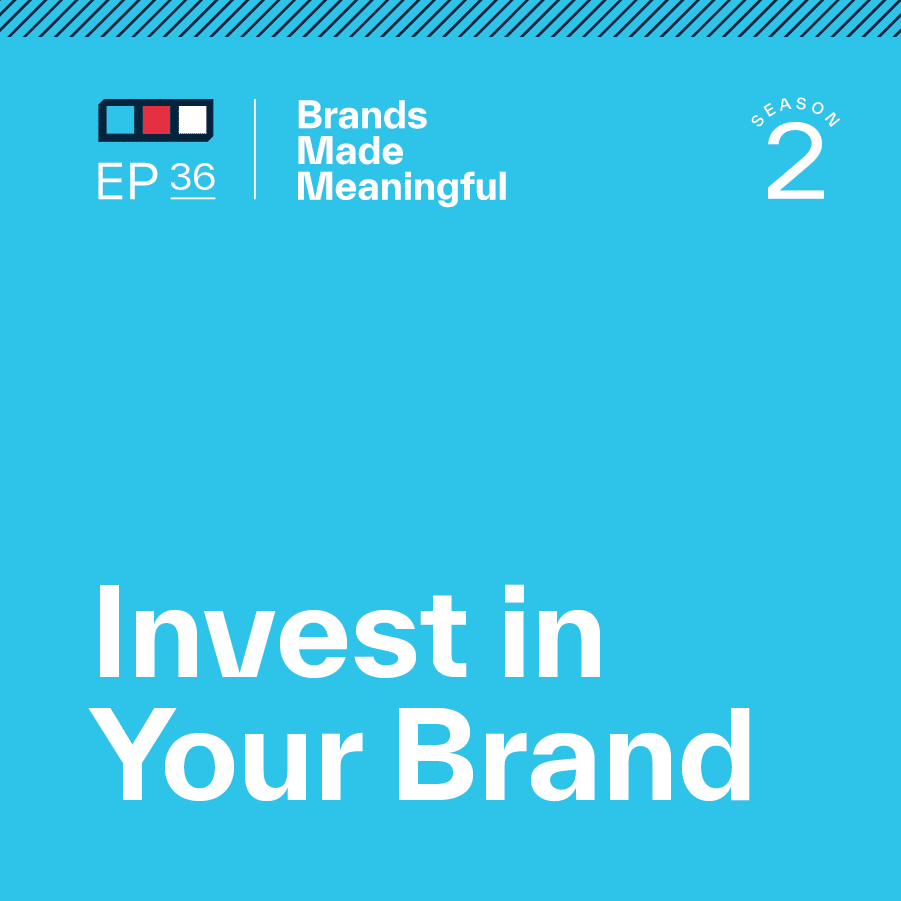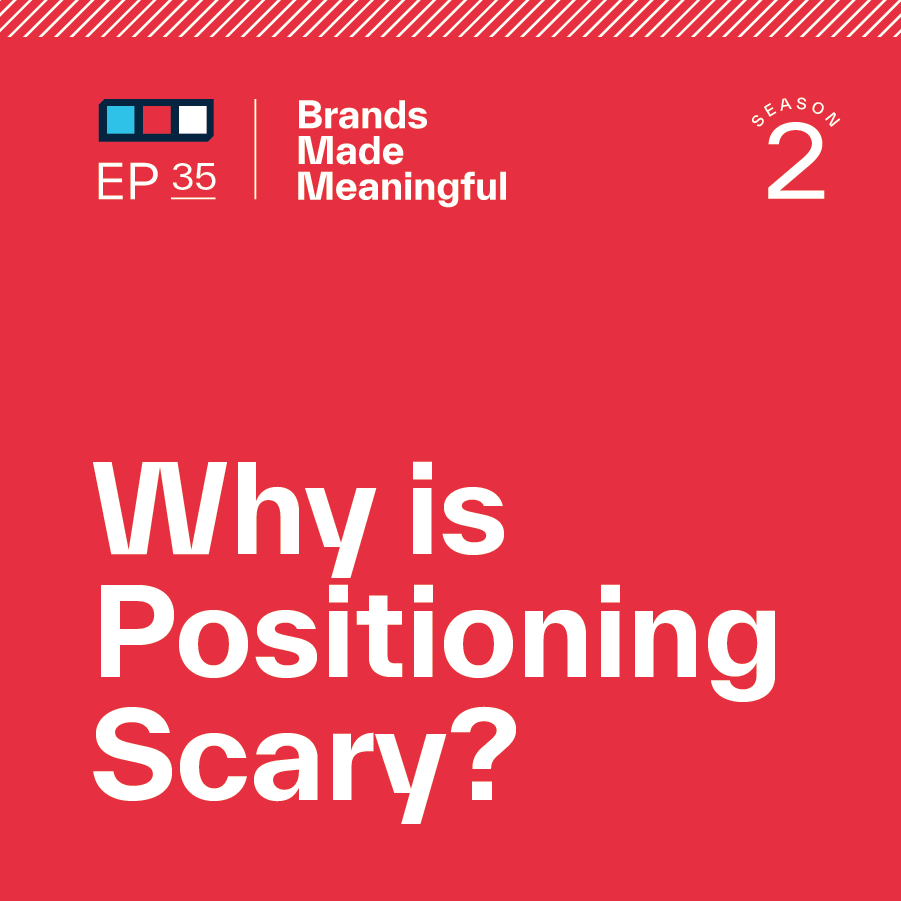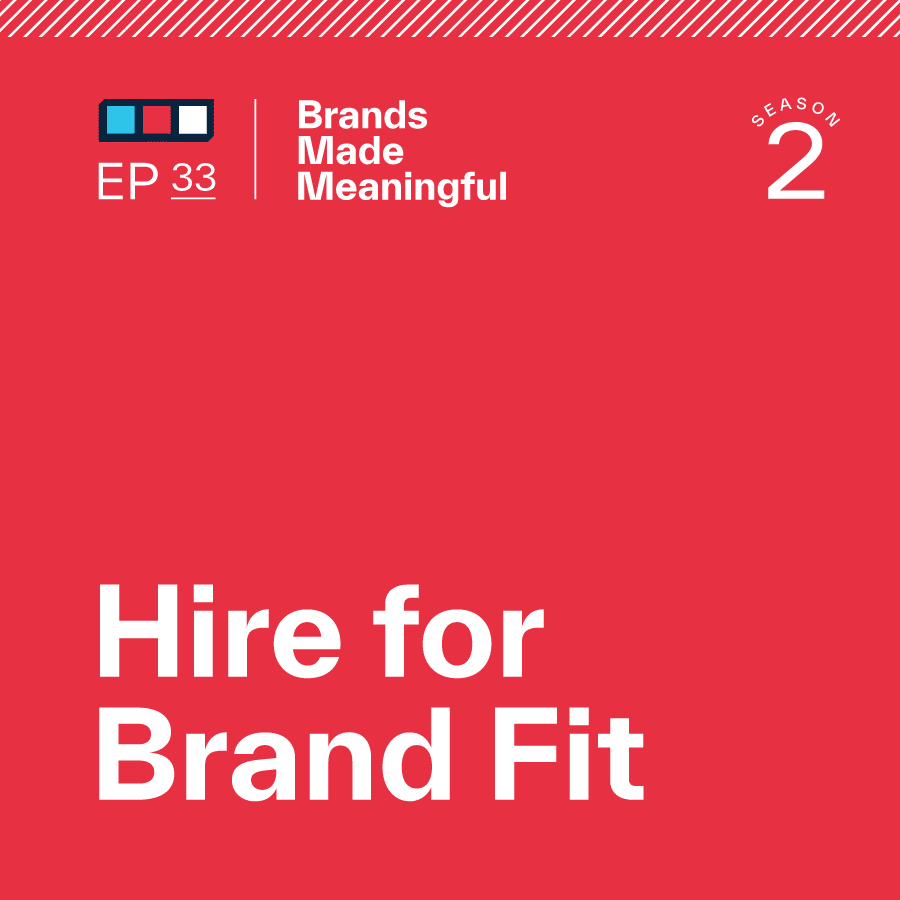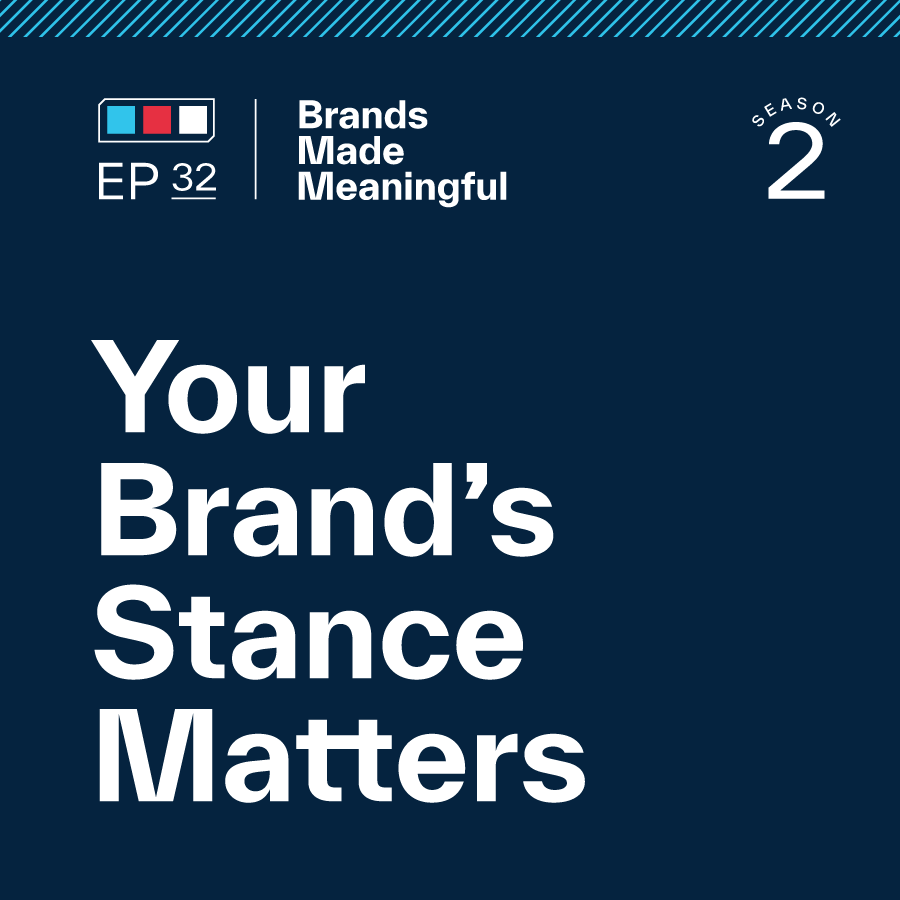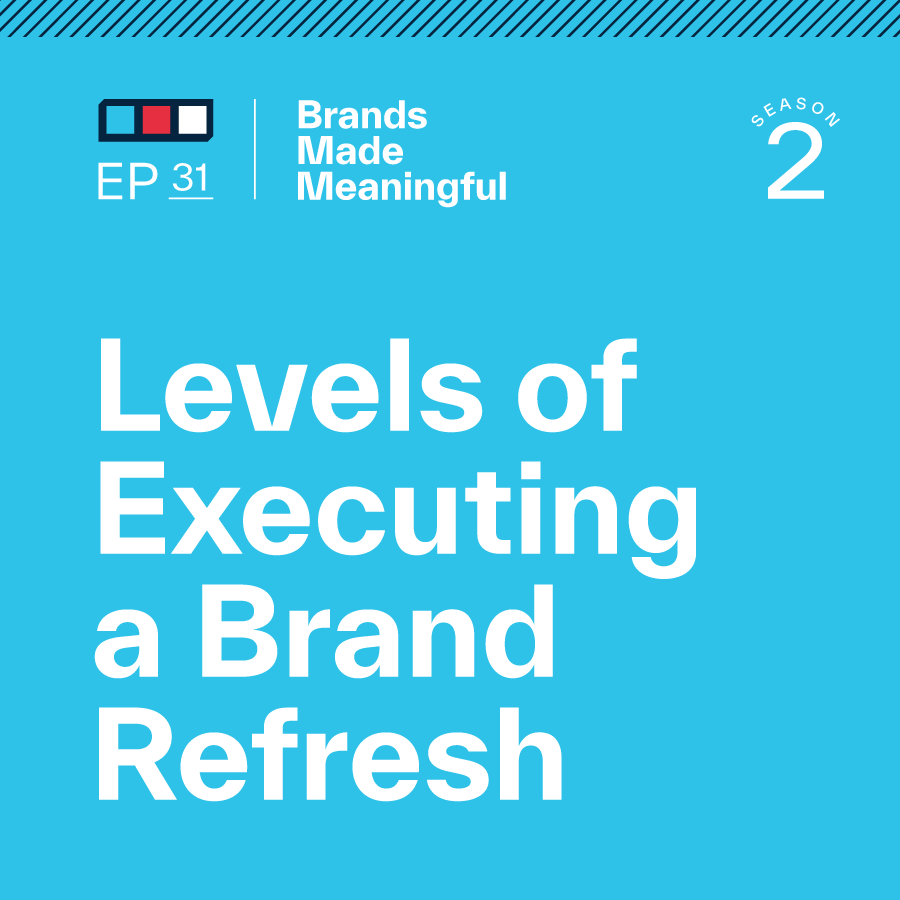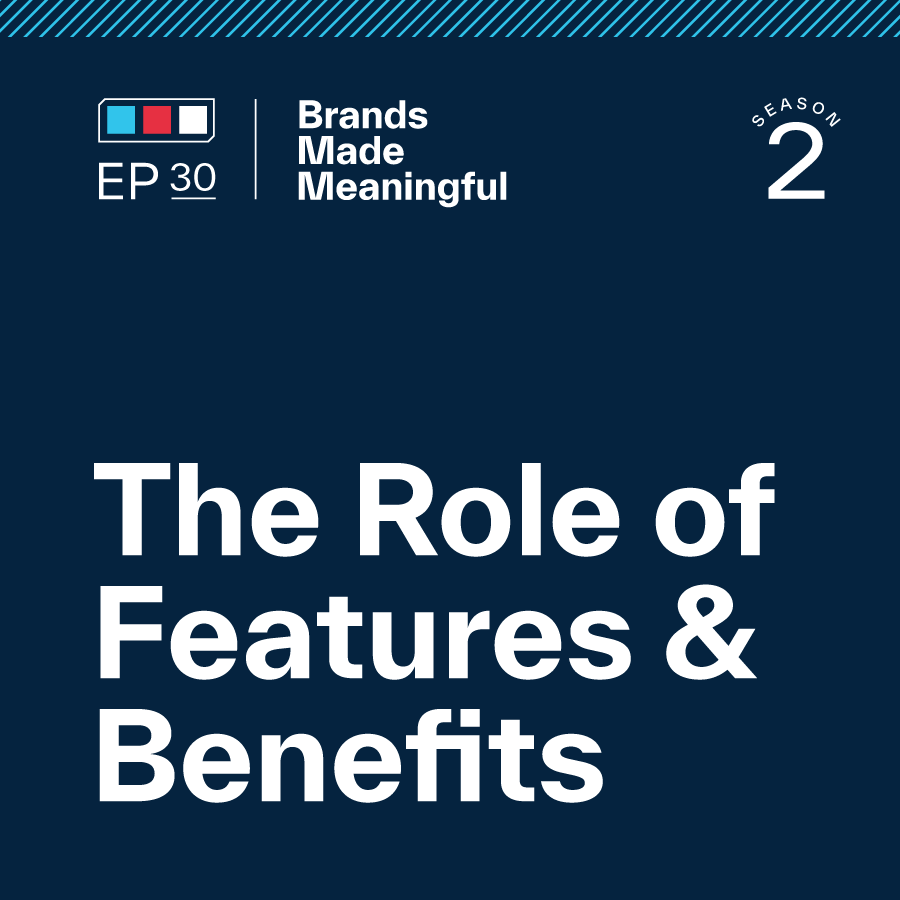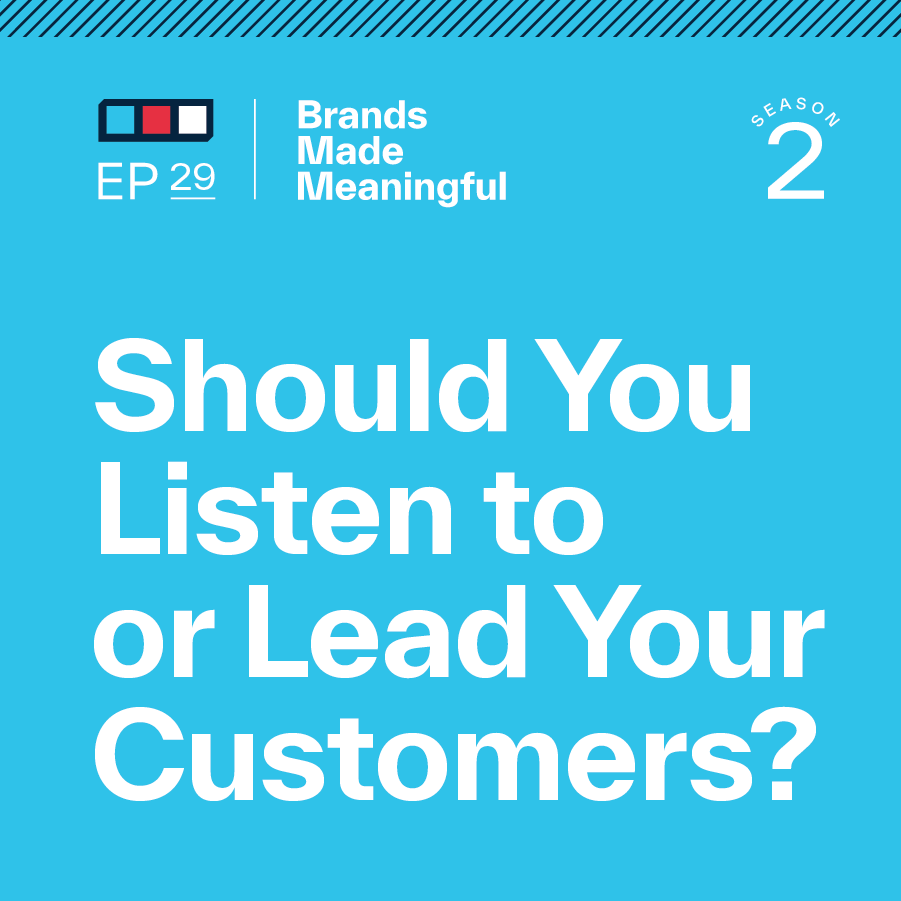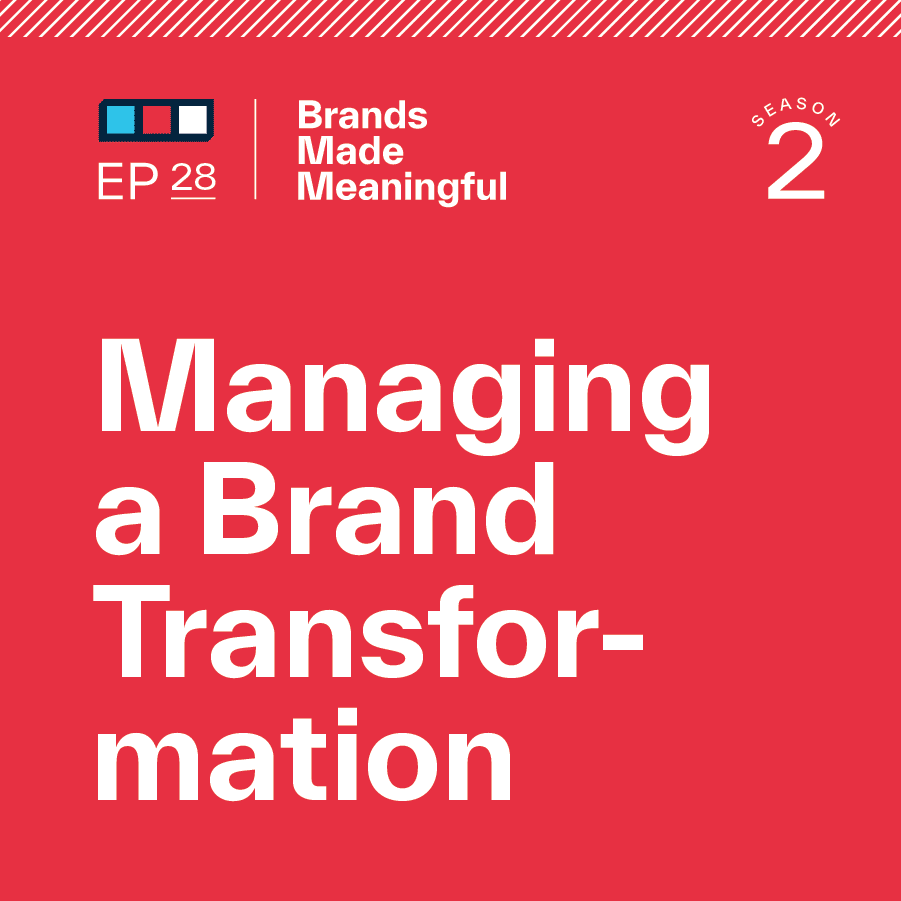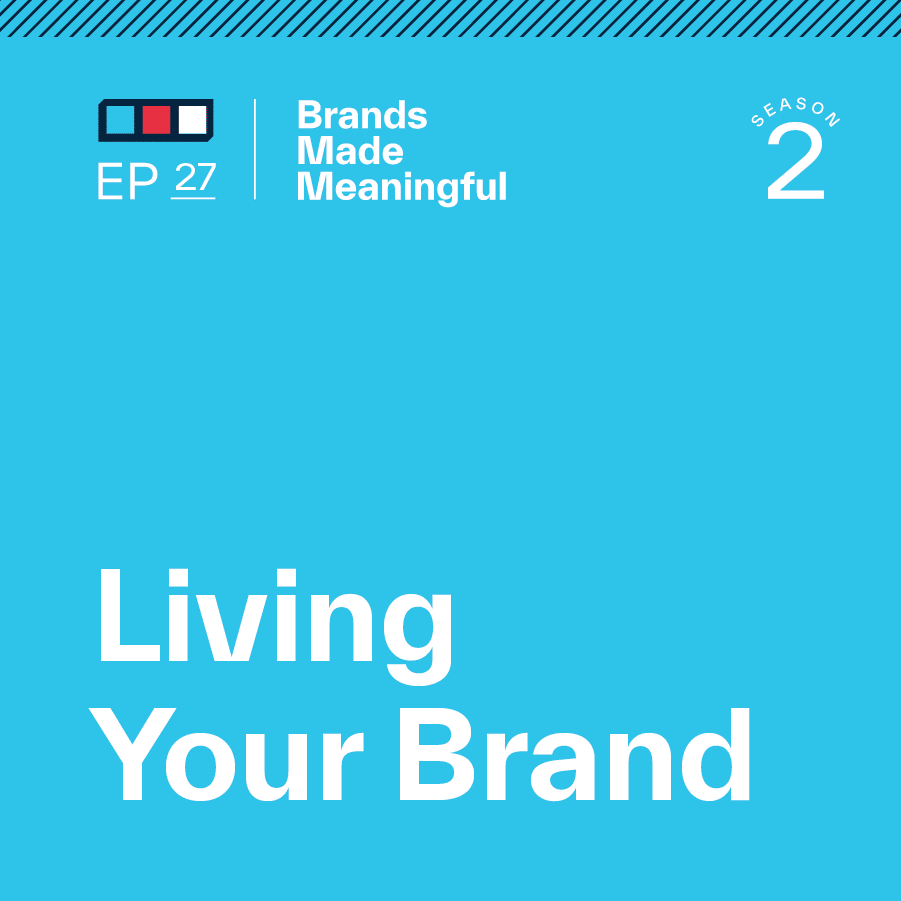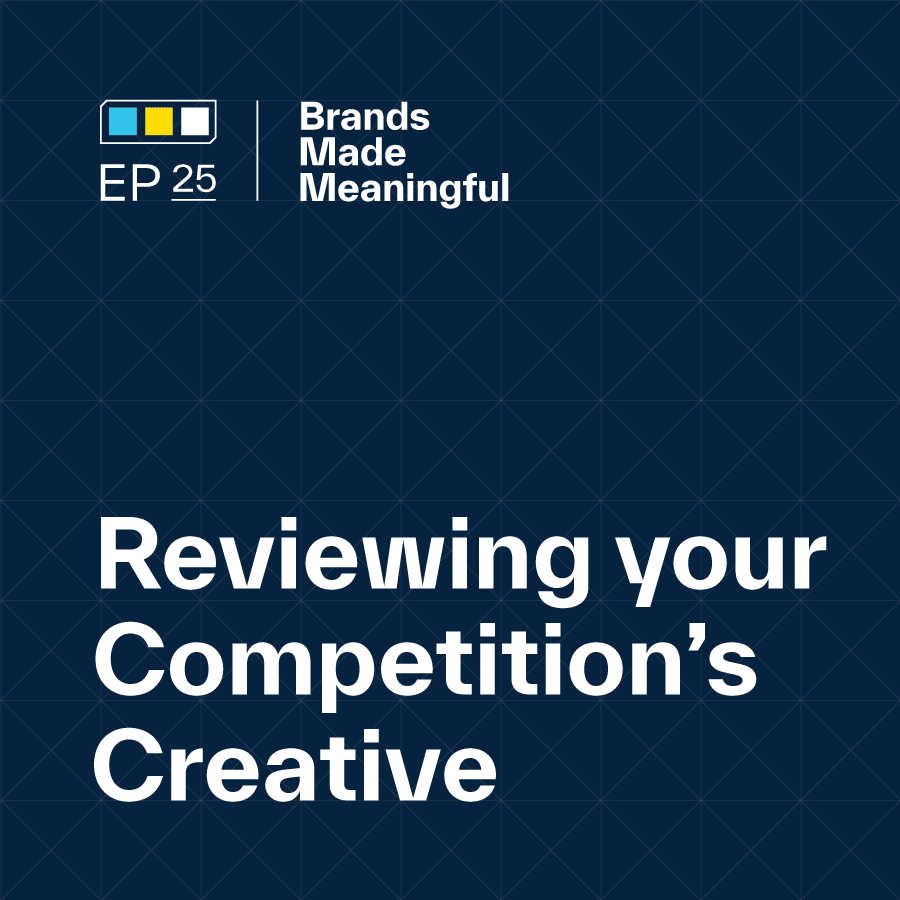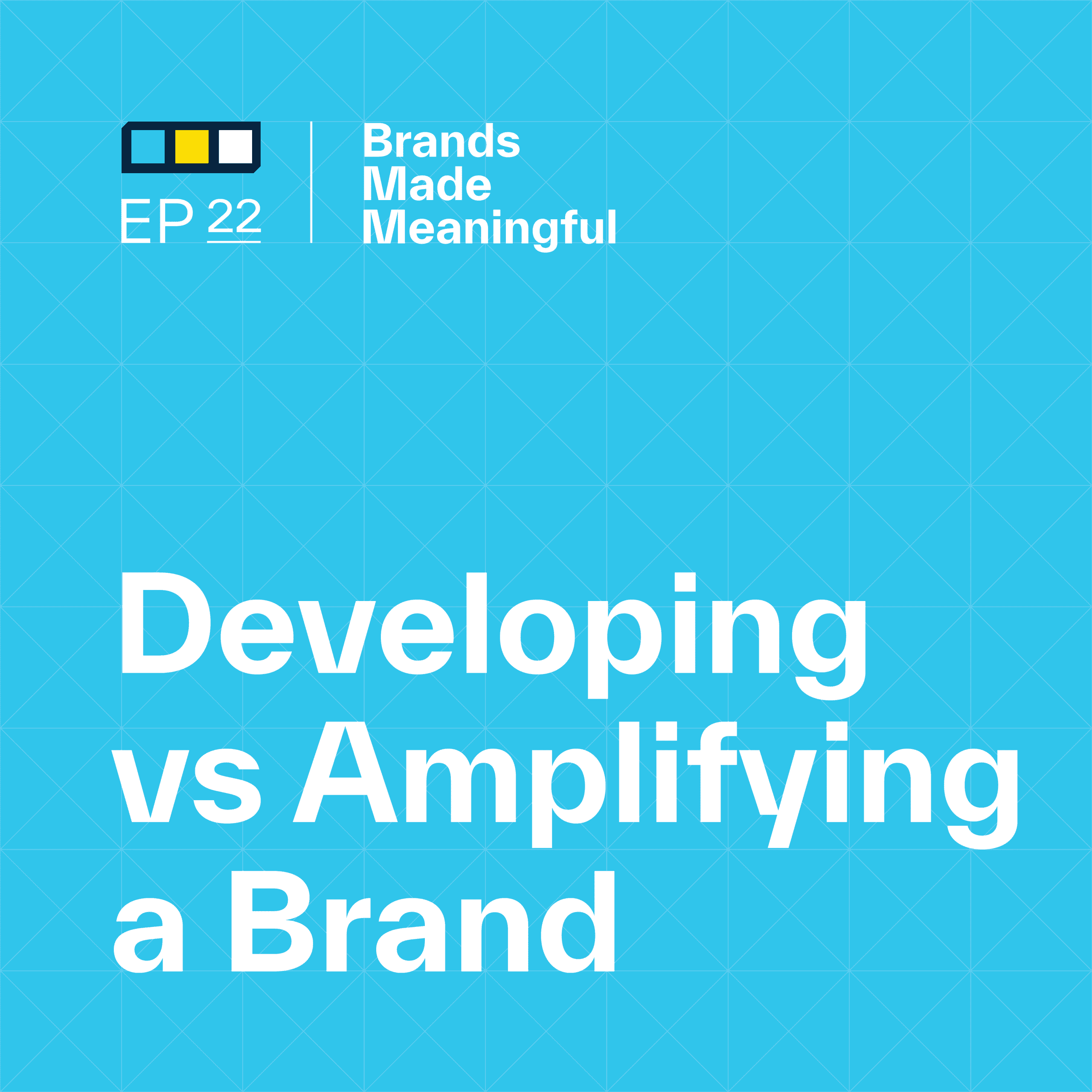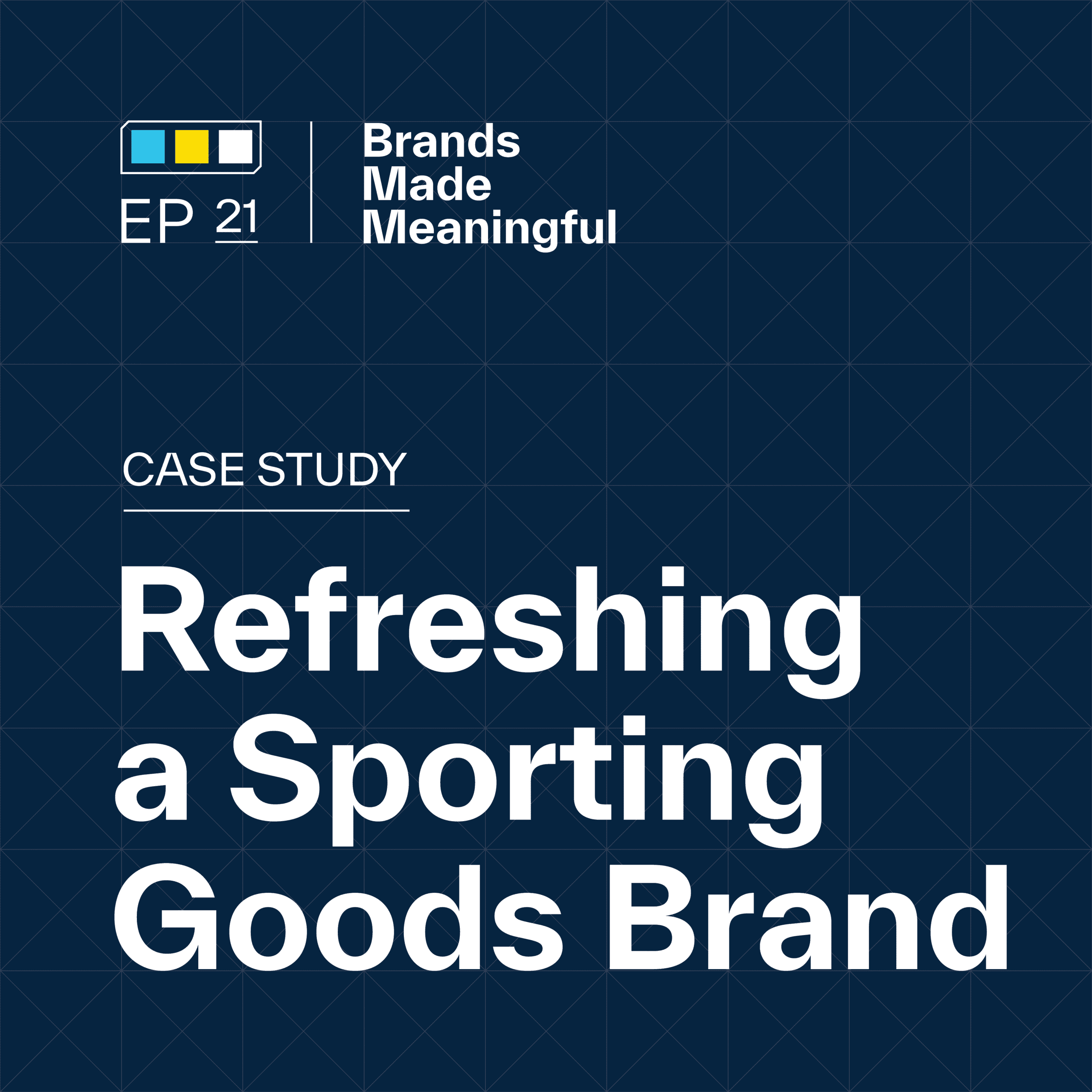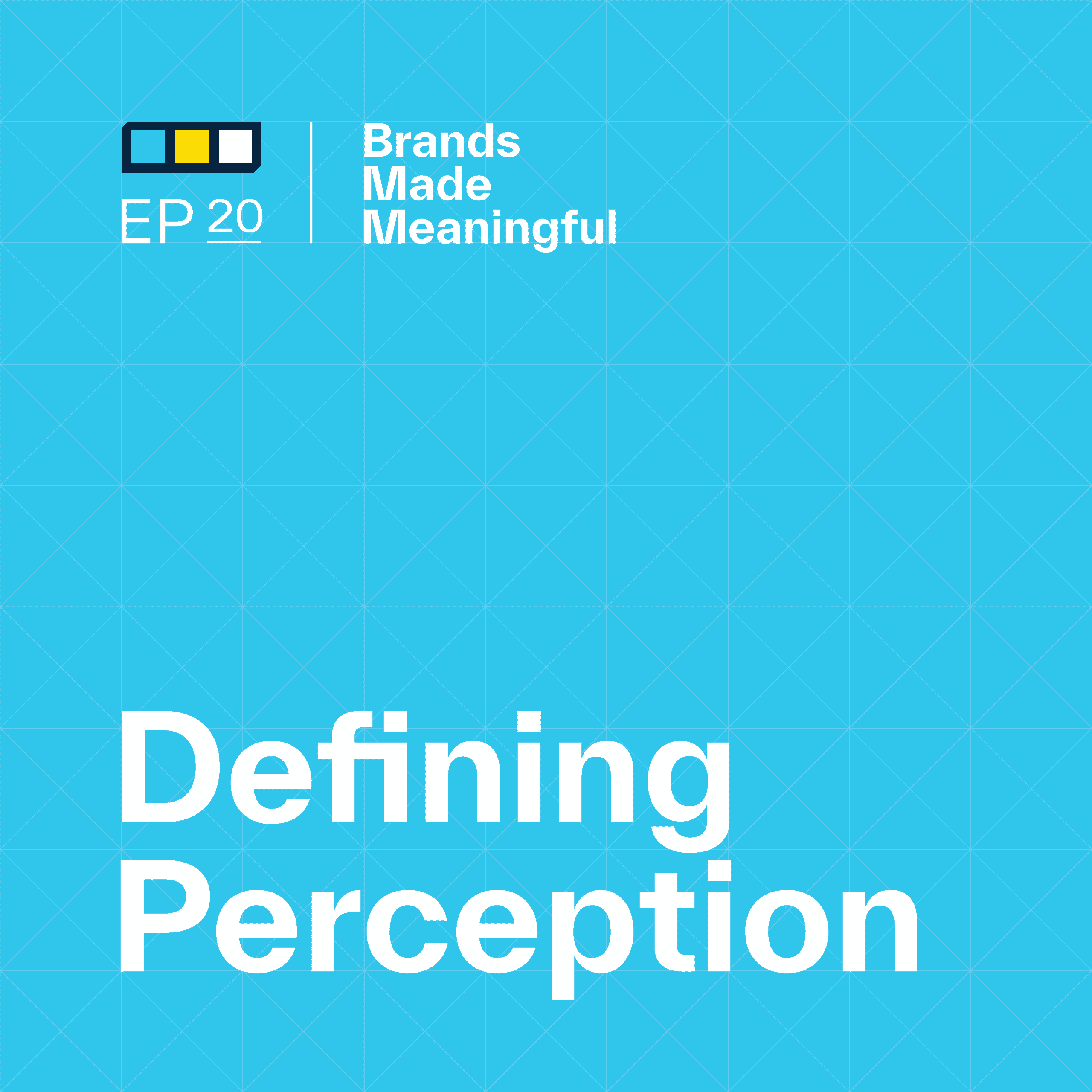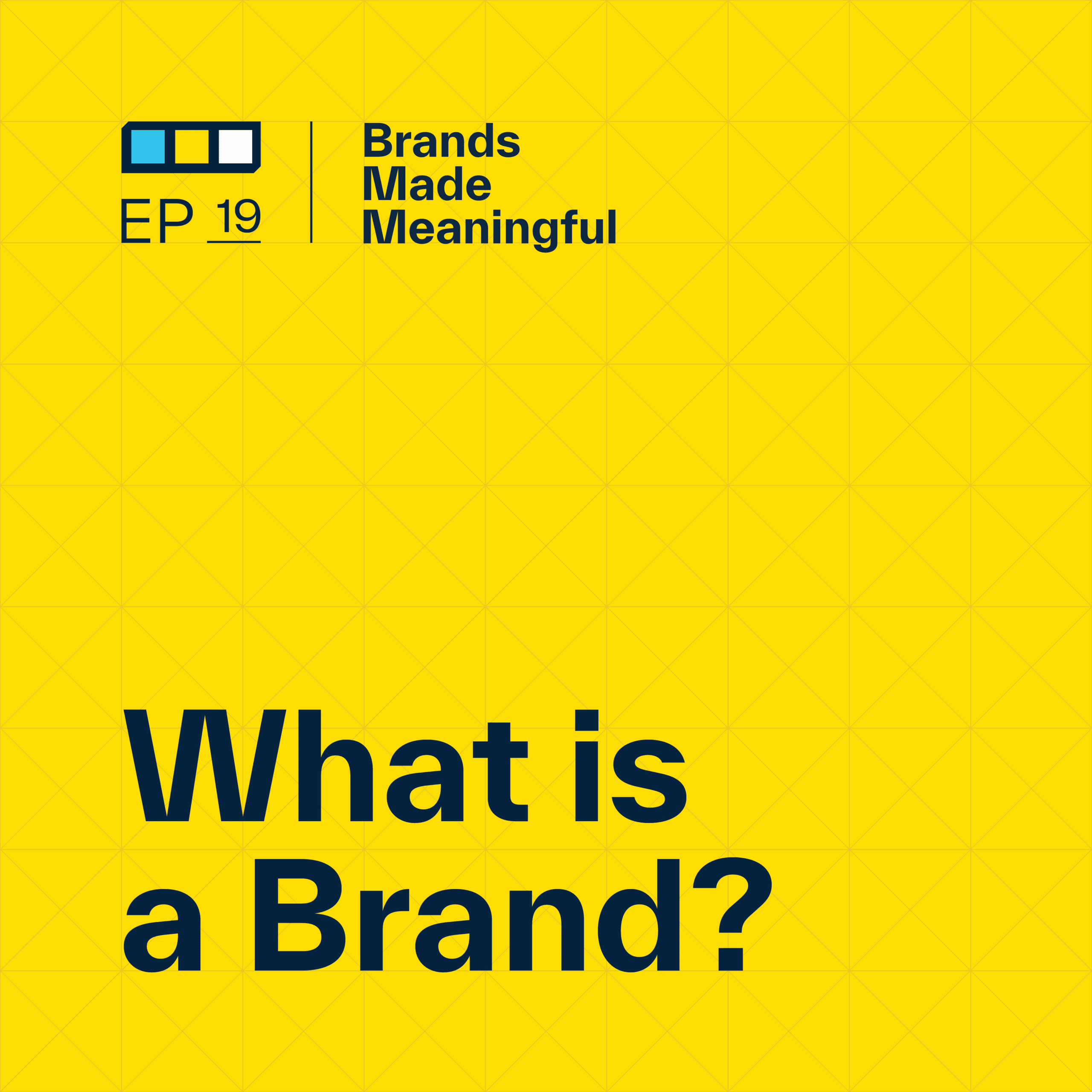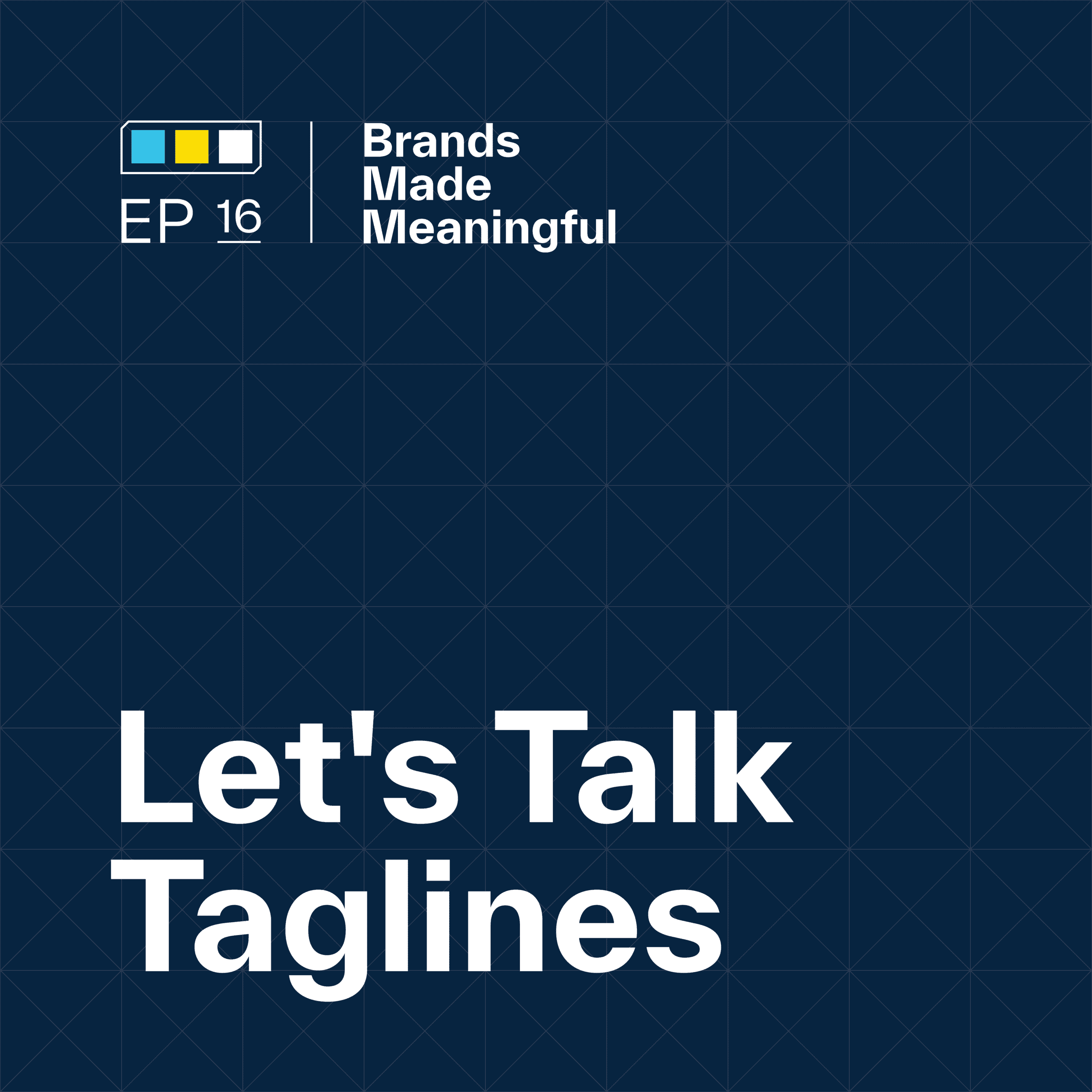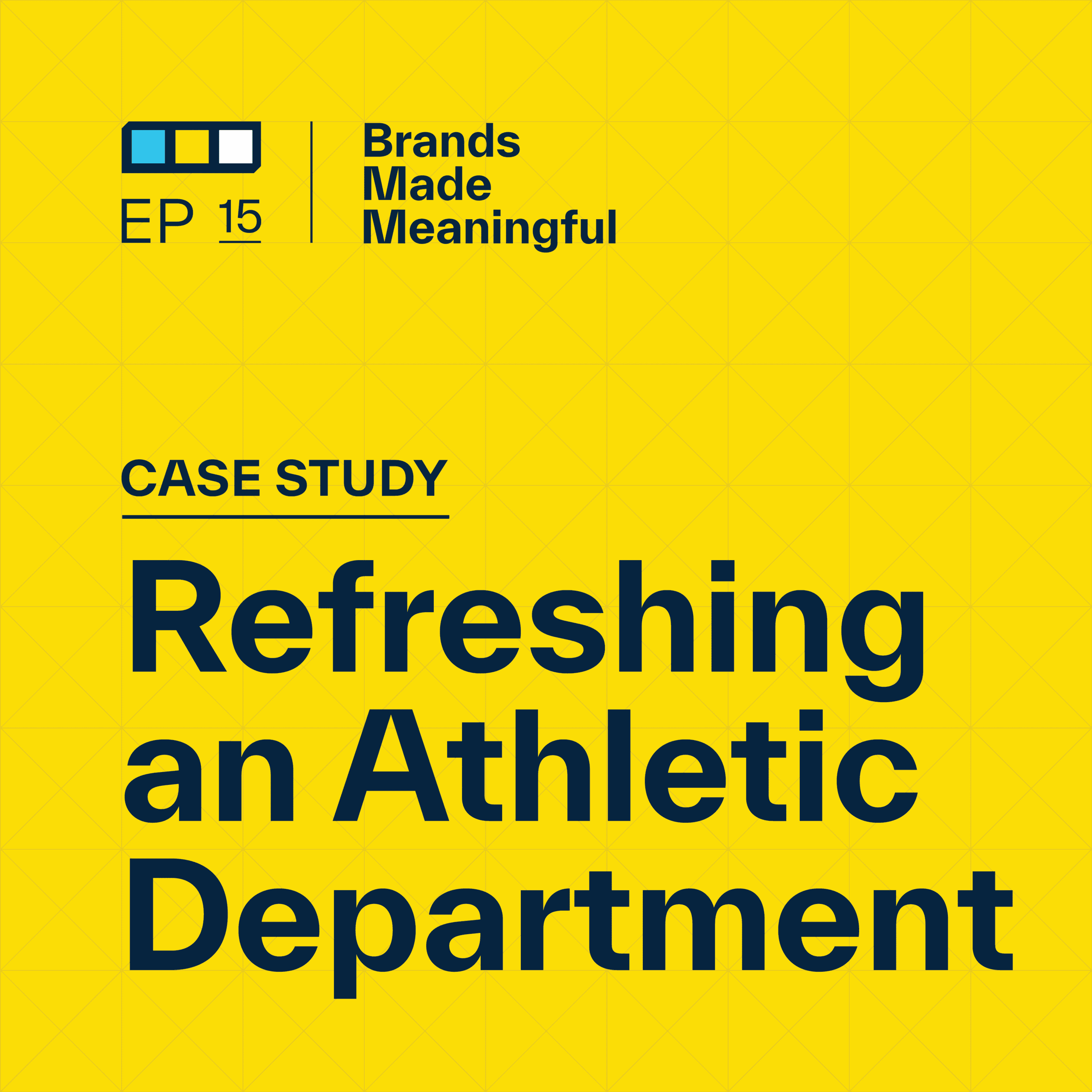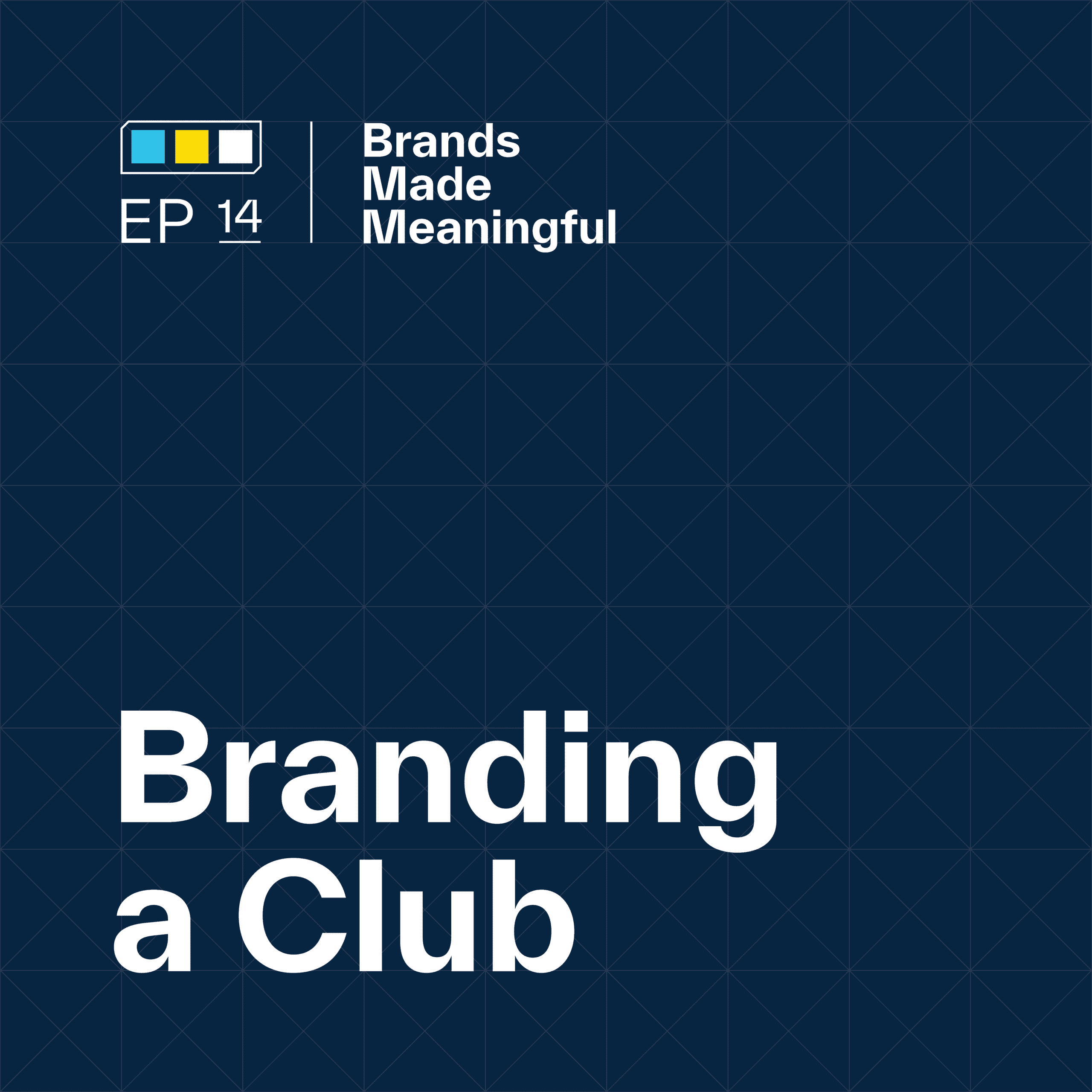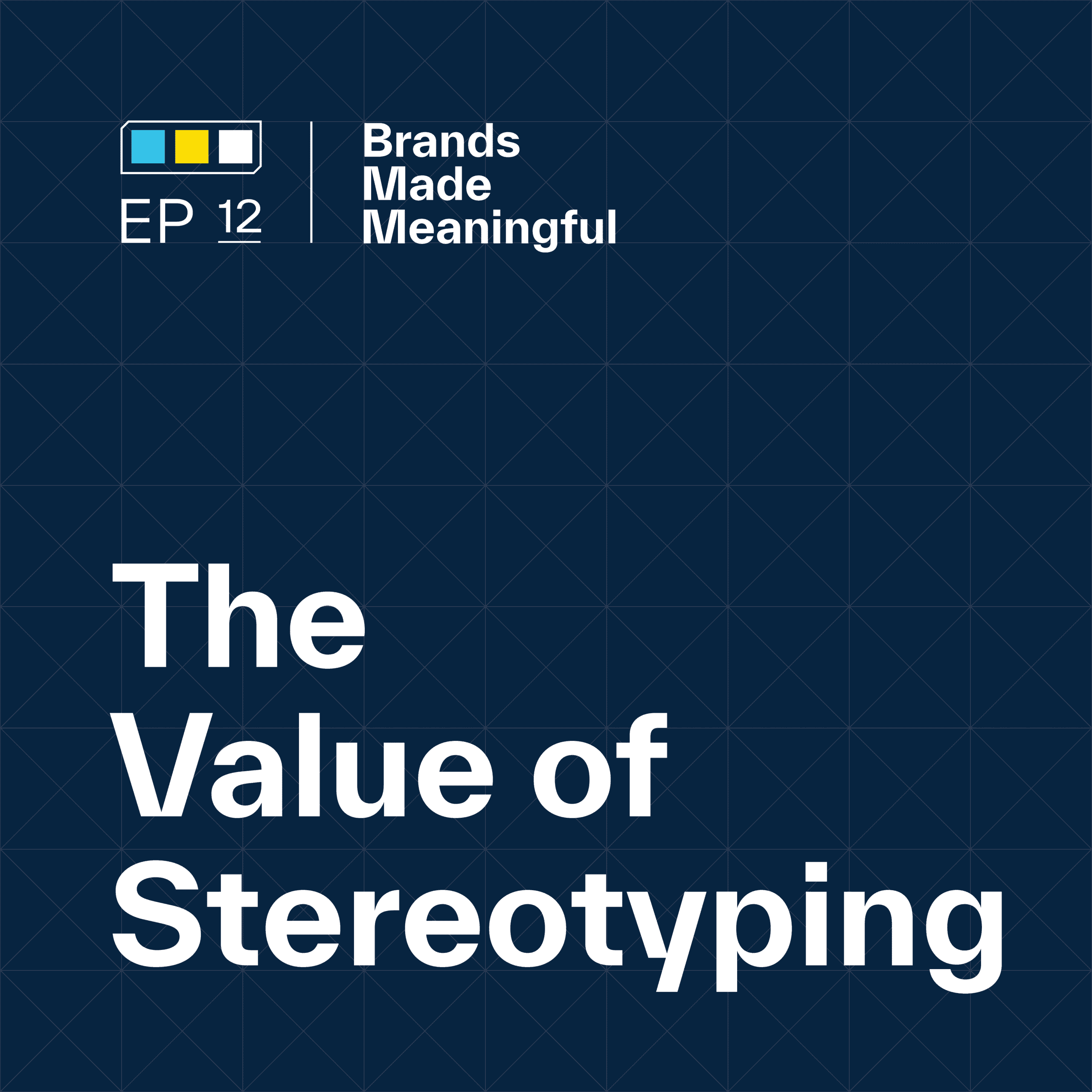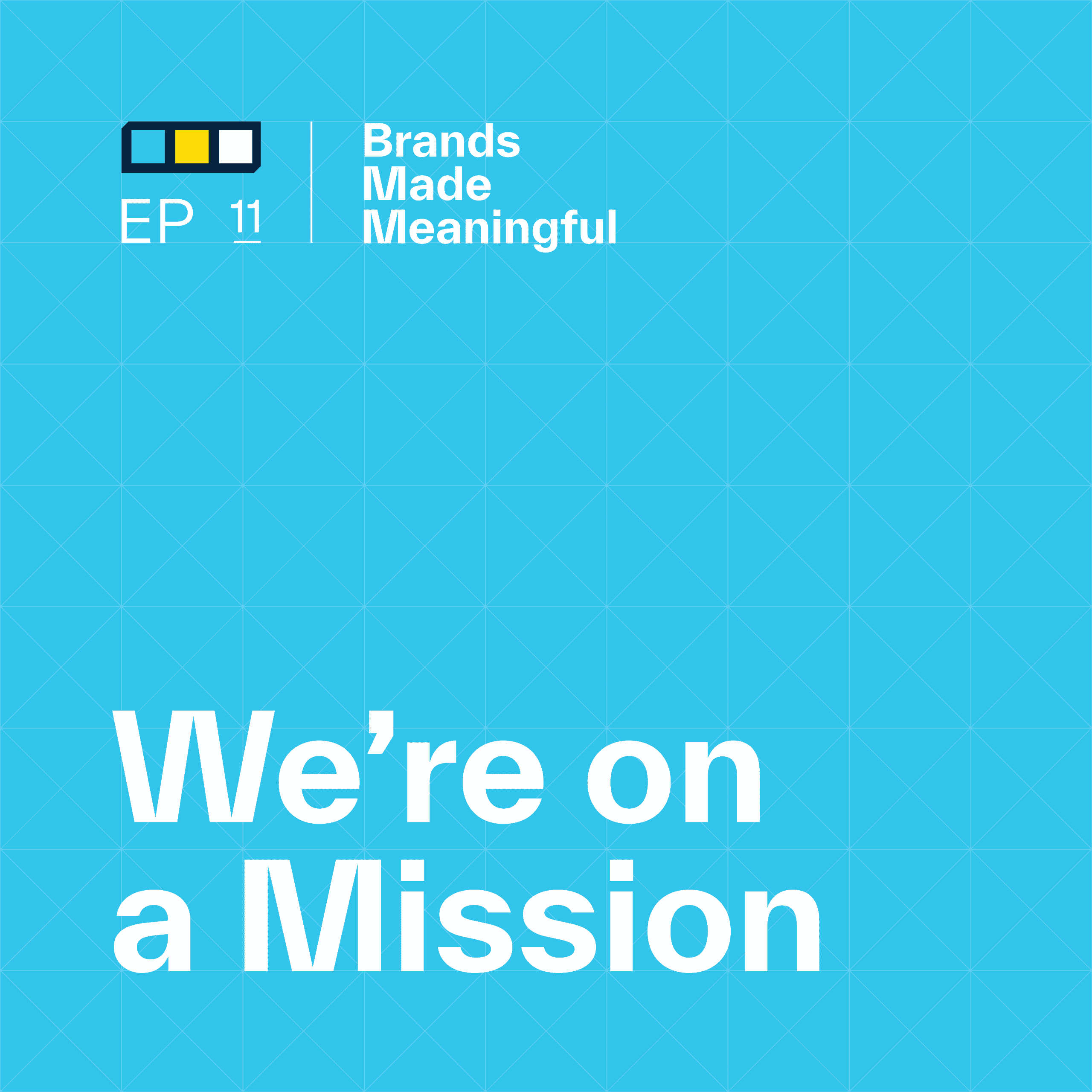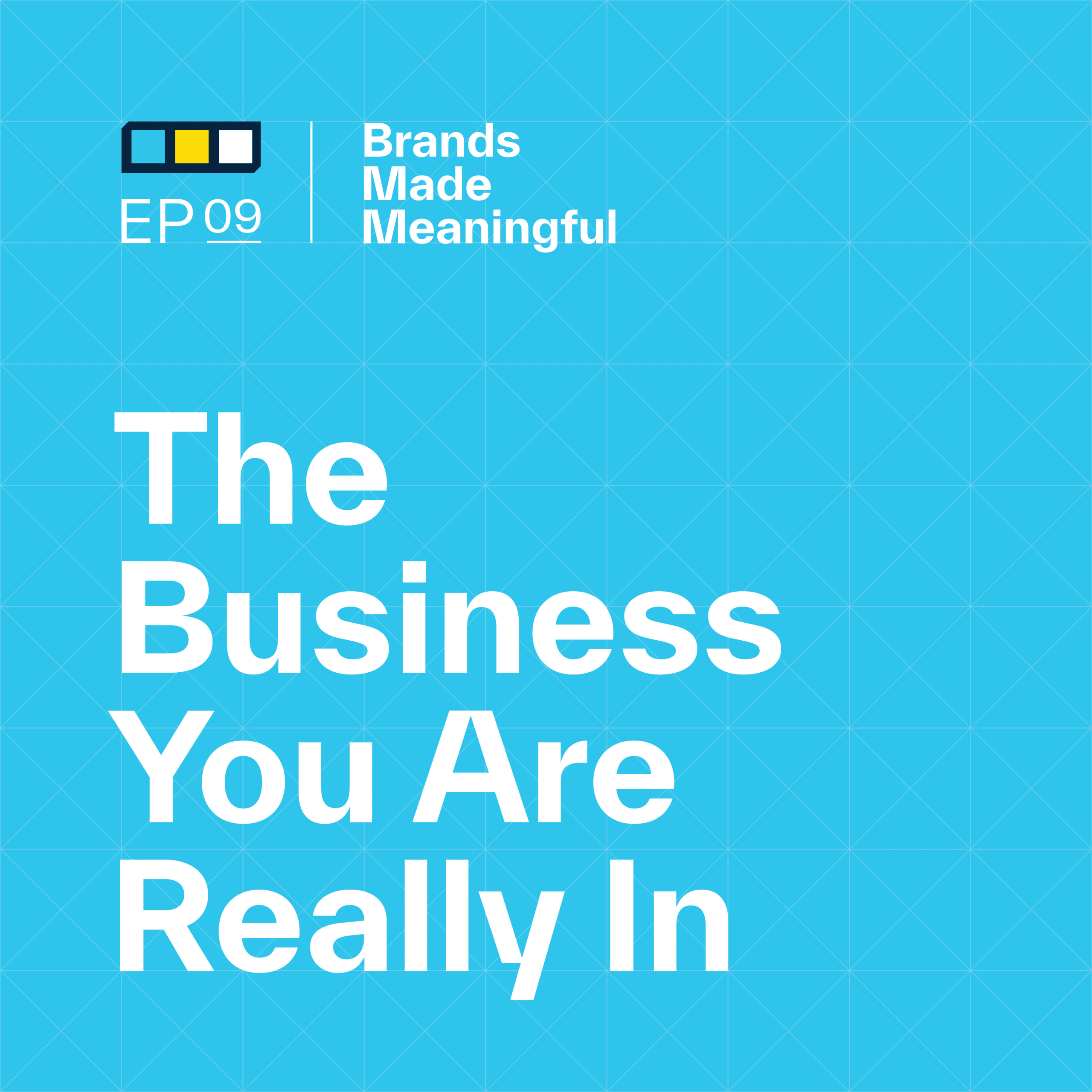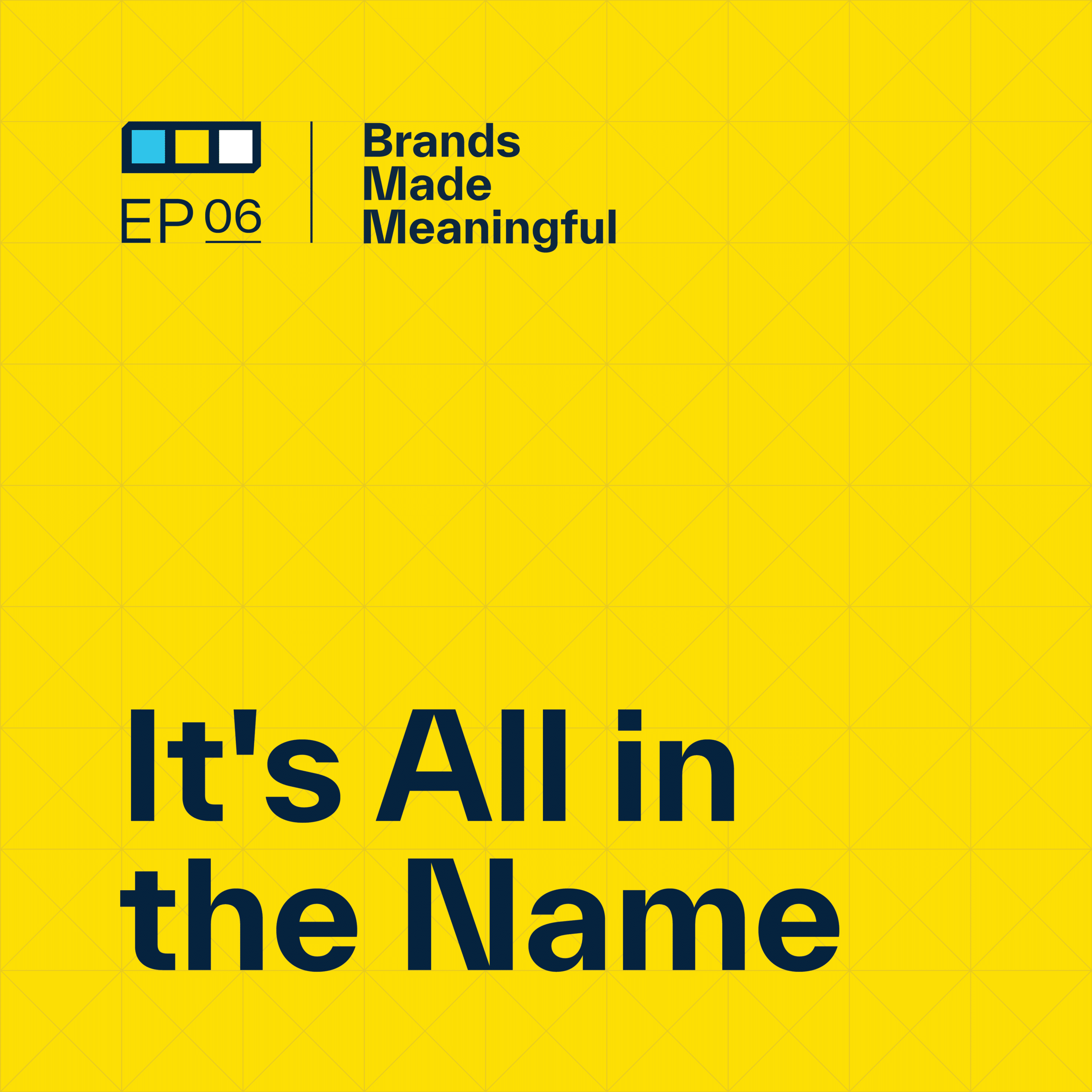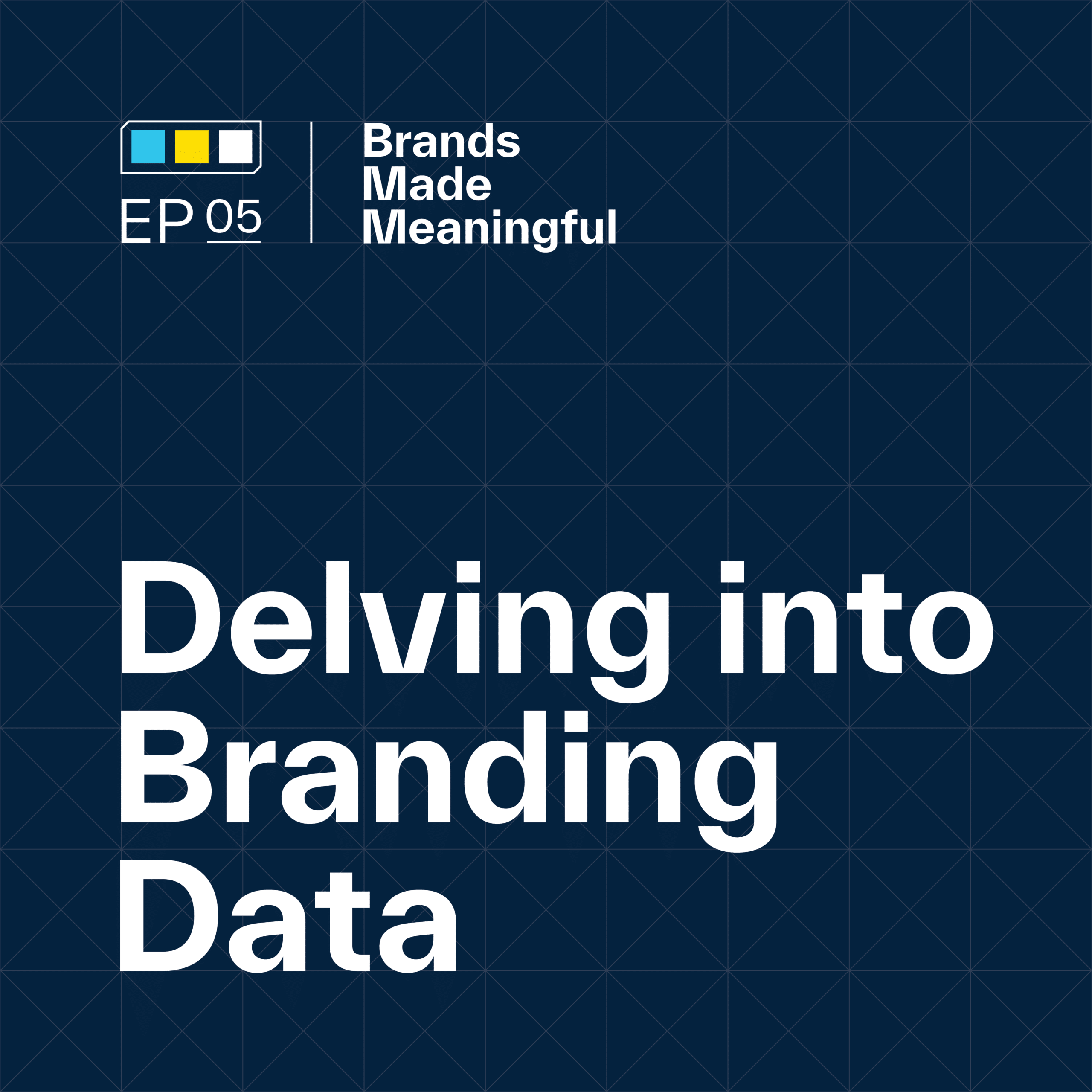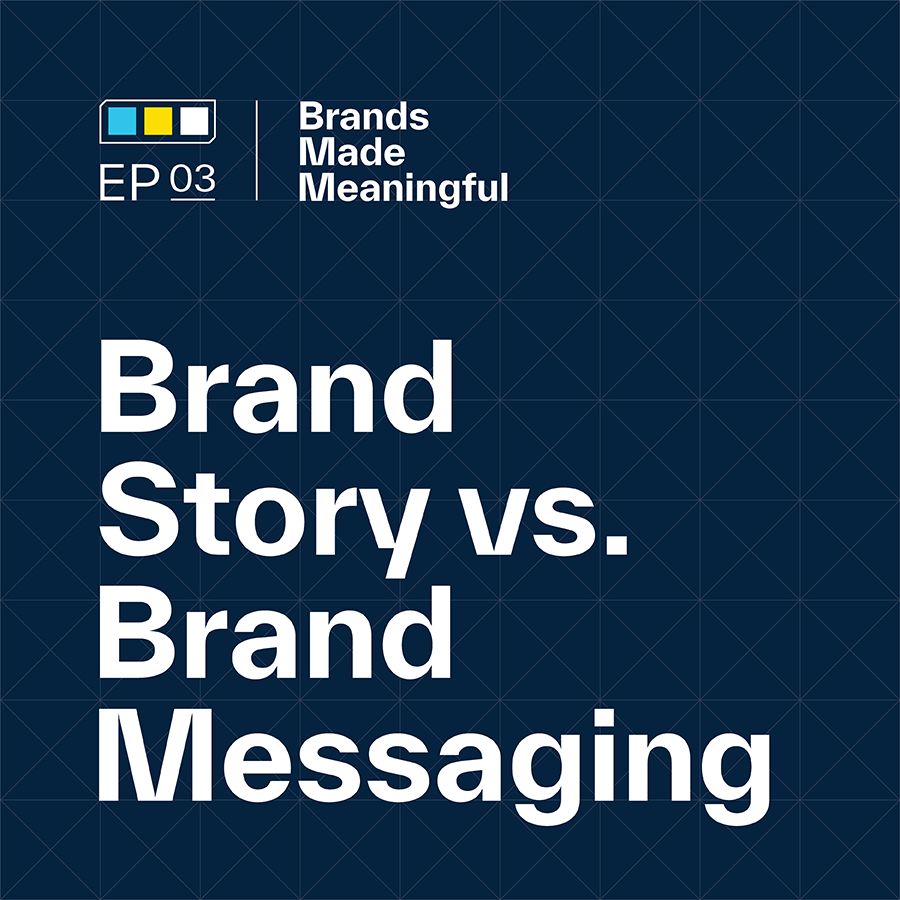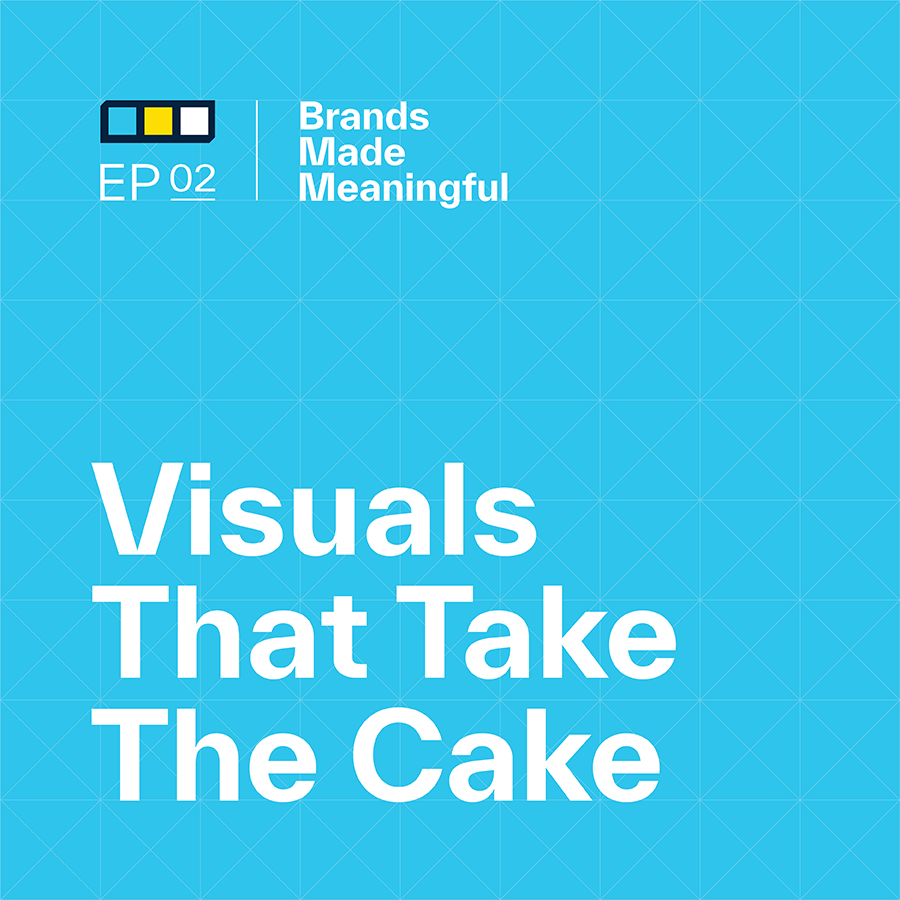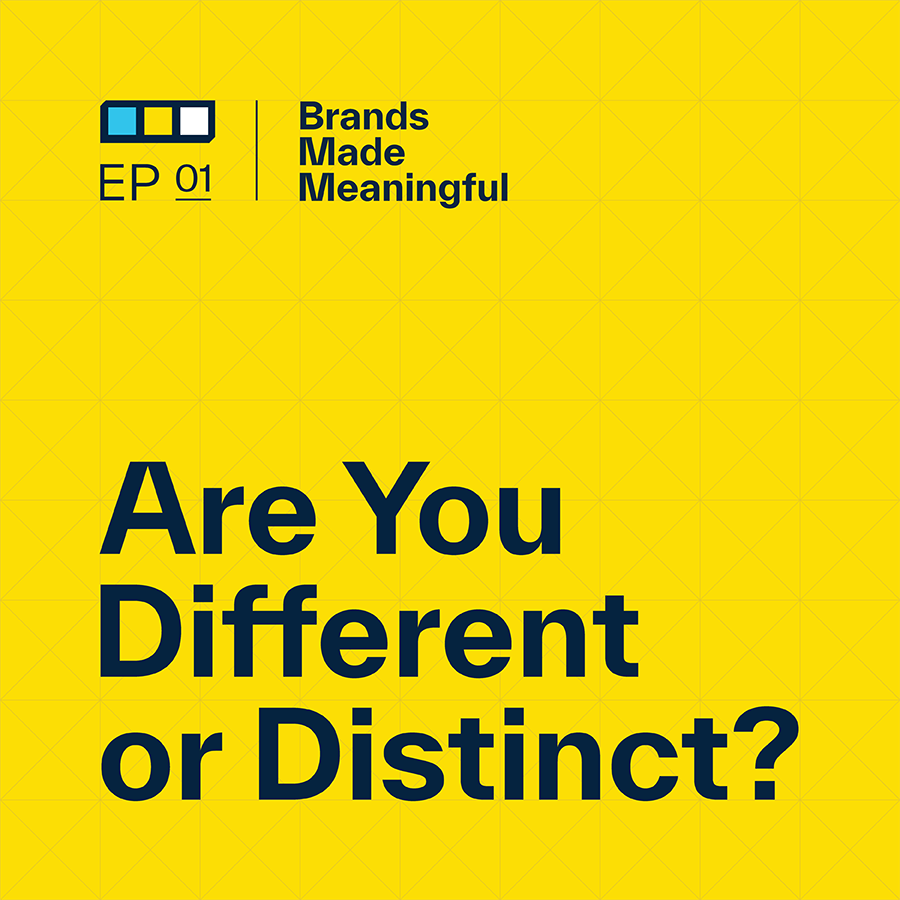EPISODE 76
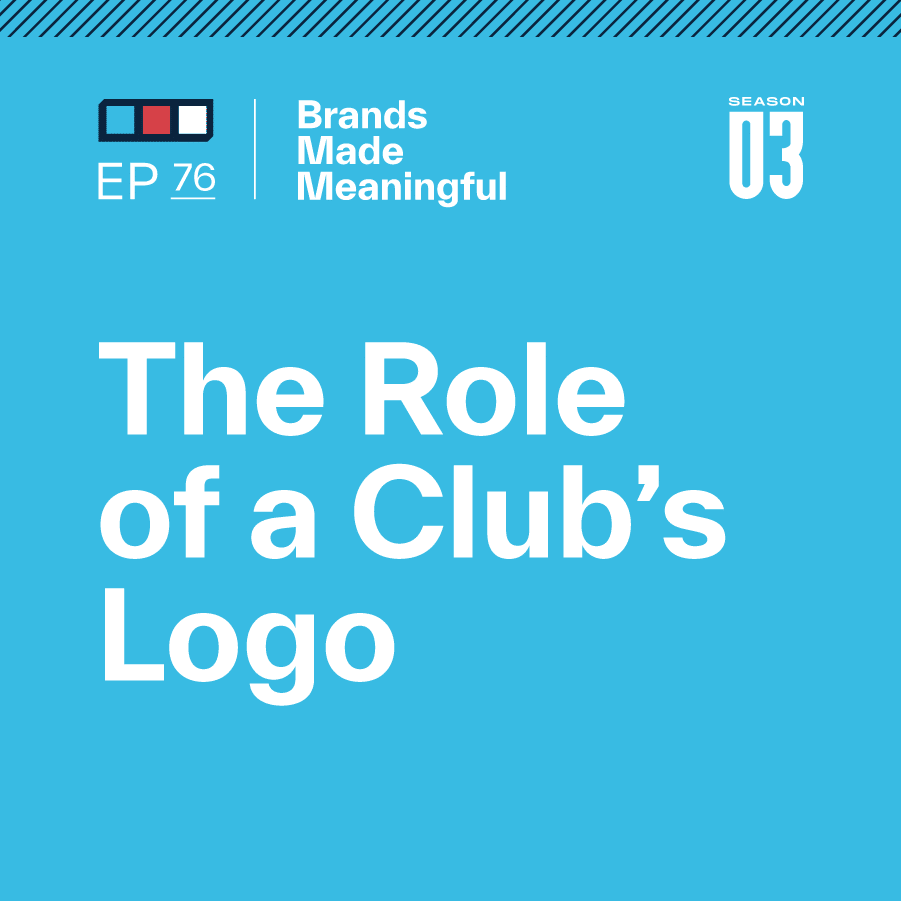
The Role of Private Club Logos
Episode 76
Derek and Tucker take a look back on private club logos they’ve designed over the years and explain the strategic reasons behind their choices.
EPISODE TRANSCRIPTION
It is so important to understand the role of your private club’s logo.
Tucker I want to talk about something that frustrates me a little bit, but I think it’s super necessary for this audience. What we’re going to talk about is logos today.
Expand Full Transcript
Derek Welcome to Brands Made Meaningful conversations with the team at Sussner about how purposeful branding inspires unity, identity, and powerful change for growth-minded organizations.
Tucker Derek, welcome back to another conversation. I want to talk about something that frustrates me a little bit, but I think it’s super necessary for this audience. What we’re going to talk about is private club logos. And the reason why this is relevant is we just got back from a conference where we were talking to all of these private clubs. And someone came up to me and they said, You’re the logo designers, right? And I said, Yes, but not really. Yes and not really is a little bit of a hard conversation. But I think it’s important for people to understand the role of a club’s logo. And that’s really what I want to talk about today.
Derek Yeah, I think we’ll probably actually say this. I think we say this all the time. Your brand is not your logo, but your logo is a very important part of your brand. And we’ll dig into that. I hate to get too critical to the sort of average person who jumps from brand to logo. I introduced myself the other day to somebody and they said, What do you do? And I said, Well, our firm does brand strategy and design. We do creative work and brand work for private clubs. And their response was, You design logos. So it’s like, yes, we do. And that’s a very important part. And I’m trying to think of an equivalent analogy in a home or a house where somebody keys into this entire there’s a yard and a porch and a deck and an entry and lighting. And this whole experience is being thought maybe the logo is your front door. So, you know, it is a very important piece, but it’s only one piece out of maybe a hundred pieces that go into a club’s brand.
Tucker Absolutely. So today I want to talk about what is it going to represent. Why does it matter? And then how can we tie that into the overall brand and give people just a really good understanding? A long time ago, a couple of months ago, we had a conversation about a brand identity system and all the pieces and parts that go into that identity system. That is like the logo is the cap on top of all those things. So if you don’t know that conversation, it’s a really great one. Think it’s in the 60s. 64 would be my guess. So why don’t we start with what is a logo?
Derek Yeah. The logo at its core is the primary symbol that helps people identify your brand compared to somebody else’s brand. It’s the cover of the album. Like I said, it’s the front door to the club. It’s a symbol, it’s a graphic. It’s ultimately a piece of design. You say this all the time, that it’s the visual equivalent of a name. So if the name says who the club is, the logo visually is the companion that identifies who that club is.
Tucker It’s a symbol that people can use to recognize and identify. It’s associated immediately with what people think about your club. And I think that that’s a double-edged sword there. So people might think of it delightfully. There might be a lot of really great things, but it creates this gut reaction that brings up all the experiences, all the associations, and what we’ll say is for good or bad. And that’s why we do a work on logos sometimes.
Derek When we were at this conference you were talking about, it was one of the CMAA annual chapter events, there are private club logos everywhere. And because logo design is part of what we do, I find that watching the way that people experience each other in a large networking event, especially within the golf club community, to be fascinating because all the GMs, most of the GMs that are there as attendants, they’re all wearing some sort of apparel that has their club’s logo on it. And the other thing everybody has is a badge with the name tag and the name of the club. And so when you see people that don’t know each other or haven’t met before, whether they’re doing it right in front of you while they’re talking to you or they’re doing it as you’re walking by, everybody’s checking out the logos and the names and trying to figure out what the connection, what the association is. And when somebody does recognize a logo, to your point, there’s a visceral reaction of, I know what that club is. I know people who are members there. I know people who work there. And then they will often default to, was my last experience a great one? And is that a positive association or a negative one? Or from an outsider who’s never been there, you might just look at something and go, That person belongs in some way, shape, or form to that organization. It’s a really fascinating experience to watch people navigate all the logos in a room.
Tucker When we work with a club, we go through the process. If you’ve listened to us kind of talk about our process, we go through three phases. One is strategy, two is development, and three is activation. The logo happens in the development phase. I think most people when they hire us or look to hire us, go, Are you going to change our logo or not? And what we normally answer back with is, I’m not sure because I don’t know what we’re trying to accomplish. I don’t know what we’re trying to do. Because when we look to alter that logo, when we look to alter that front door, that visual identification that people associate with you on a dime – that’s what people want. Well, we’re only going to change it if something needs to change. What are we trying to accomplish if our current or previous perception is just not relevant to who we want to be seen as moving forward? That might require us to say we should maybe alter the logo in some way. That doesn’t mean we have to completely change it, but maybe we need to alter it. Maybe we want to have a shifting expectation, or maybe we’re adding new things to our club and we’re trying to improve and we’re trying to change it. We want to cue people to see that change and go, Something is really different here. Maybe that happens within the logo because we’re trying to articulate our differences and how we’re going to change as a club. Or maybe the club just has a lack of communication. Like people have a difference of I see that and then I tour and it’s a completely different thought process. Or maybe I don’t even ever get to tour. I looked at that online and I went, That’s not for me. Or I saw it on someone’s shirt and I go, That’s not for me. And then I went there as a member/guest or something and I was like blown away by the experience. That’s a really big red flag for us to say that’s not communicating what we want it to communicate off the bat as our visual name if you will. And how can we help that process to give us a little bit more of a chance with the right fit audience? That might be a great member ad for us but isn’t considering us today because of that bad communication.
Derek The third factor that we’ll add to that is the graphic nature of the existing logo. Some logos were done at a time when legibility might have meant something different or reproducibility – how it needs to be embroidered or stitched. Should it be complex or should it be simple? Was it designed based on the trend or the style of the time 25 or 50 years ago? And we analyze that graphic nature and it goes back to just because it’s old doesn’t mean it’s not a great logo. If we ultimately come through that strategy phase that you talked about and we determined that it is communicating what we wanted to communicate and it is meeting the expectations that we’re trying to set, then the graphic nature of it is part of that discussion. I said this before on this podcast and I just said it at a panel that I was speaking at at a golf conference. My favorite question is when a prospective client asks you and they show you their logo and they say, You guys design logos as part of your work, what do you think of my logo? That’s my favorite question because it’s an engaging one. It’s an honest question. But the answer that you give isn’t the answer that they’re expecting. What do you say when I say, What do you think of my logo?
Tucker Depends on the strategy, right? Every time. What are we trying to accomplish? What are we trying to communicate? What do you want someone to think when they see it? Everyone is always disappointed by that answer I would say. They’re looking for you, right?
Derek The answer they’re looking for is I like it or I don’t like it. They’re thinking of it in that personal preference. How is it from a design, maybe an aesthetic design principle standpoint? I’m not criticizing people. That’s just the way people are. People default to that, which is why we add that strategy to say, help me understand what that logo is trying to represent. So let’s get into that. What should a private club logo represent?
Tucker Well, we believe that private club logos needs to identify, not explain necessarily. And I’ll get to what it should represent in a second. But what that means for a lot of people is that when we work through a process, and we’re going to do a conversation about this on a different episode, but a lot of people go, We offer these things. Let’s just throw that in. We have a golf course. Let’s put a golf club in there. We have a tennis court. We need to put a tennis racket in there. A lot of people associate that a logo should just communicate exactly what you offer. That is not what we’re trying to do. It’s trying to identify who you are and what makes this place special. I like to say that it’s about the value you create, not the offerings that you have. And how do we communicate that value in a really, really rich way? But when we dive into what a logo needs to do, what it needs to represent from all those things, it needs to give your members a sense of pride. It needs to give them a sense of I want to show it off. I want to wear it. This represents me. It needs to represent the culture. It needs to represent what makes the club special to the people who belong there. And I think a lot of people, when we get into the strategic side of branding for members, we go, okay, well what is everybody else doing? What is the rest of the market doing? What does the club down the street have? And that’s important. Don’t get me wrong. That’s that’s a piece of how we differentiate. But this is really about who are you and what are you about, what makes you special, and what makes your culture different so that when someone walks through the door, that symbol connects with that. We want to set the stage. We want them to be interested, and intrigued, but not thrown off by it and go, That’s really different. Why are we doing this? And then step into that door and go, I get it. This really represents that whole experience.
Derek The logo is important in that way because it often is the first impression. Somebody sees a logo on a shirt, somebody goes to a website to check out a club. The logo is often, you know, maybe in addition to some imagery and a line of copy, the logo may be even the little avatar that loads while the website is loading. It’s the first impression that somebody has. And whether they know what the story you’re trying to tell or not, they are going to have some sort of reaction as you are setting that stage. However, when you think about all the things that a logo could represent or all the criteria that should be factored in when creating a logo, I think some people put more weight on the logo itself within the entire brand system, and within the overall identity. I think sometimes people put too much weight and expect the logo to do all of the heavy lifting, which is why, especially in the club world, you’ll see a crest in four quadrants, and in each quadrant, you have an entire basically four logos wrapped up in a logo and surrounded by more logo. They’re making it work too hard, which then contradicts some of the criteria that we set out that a logo should do, which we’ll talk about here coming up.
Tucker I think if someone were to say, How do I do like a litmus test – how do I know if my logo is doing what we want it to do? I would say there are two key things that I always look at when I start with that. If you don’t have a strategy, that’s okay, we’ll put that to the side. But is your logo reflecting the desired perception you hope to have in the marketplace? When someone sees it, what adjectives do they use just right off the bat to articulate, this club looks blank, blank, and blank. If that matches what you’re going for, then you’re in really good shape. The other thing is to think about the vision statement for your club. And I know there are a lot of clubs that don’t have a well-articulated vision statement. So I’d start there if you don’t have one. Start figuring out what you want your club to be in the next 10 – 15 years and say, Here’s what we want to accomplish. And most of the time that vision statement is going to be a little bit more emotional than maybe a mission statement. That’s much more tactical. But does your logo communicate that vision that you’re going for – that value you’re trying to create? When you talk about wanting to create a community that is effortless and vibrant, does your logo kind of start telling that story in a certain way? Or maybe you want something that feels like a charismatic and active place. Are you setting the scene for that or are you starting to tell people that story in a different way? Reminder, you don’t need to explain everything. It’s not like, oh, we’re active. That means we have all of these offerings that package into something that you can see and identify as our offerings. But you’re just kind of setting the emotional stage for something in the right way or not the right way with that logo. Like I said at the beginning of this, I hate how important the logo is because people go, That’s our brand. And it’s not your brand, but it’s the first thing people see. It is the face of your brand. It is like when someone sees you and they go, that person’s trustworthy or they’re not. That is the slight signal right away. What do I think? What’s that gut reaction? And it’s really hard to change people’s gut reaction once they’ve already had it. So that’s why we put so much stress on this.
Derek As you’re talking about perception, mission, vision, or values versus offerings, that is a way of thinking about this symbol that will help you and your club create something that’s way more meaningful, much more differentiated, unique to you, and ideally authentic to you. I think it’s easy, I might even say lazy, to default to the landmarks or the physical things on our properties that we have – railroad tracks or a lighthouse or a barn. And even worse are the tufts of grass and tufts of cattails which any golf course that has water probably has them surrounding the water. They aren’t unique. And, yes, those physical elements are part of your property. But then I would say, how do those physical elements check the box of potentially representing something unique and authentic to you and maybe give people a sense of place? But what do those elements and visuals do? Do they reflect the vision of what the future is that your club is working towards or the perception of how you want to be perceived in the market? And I think often those sort of simple solutions fall short, especially given how important the logo is.
Tucker I think that there is this sense of people trying to explain what they have on their thing versus trying to just identify and say this is what we’re all about. And that difference comes to life. If you go to our website right now and you look at any of the examples that we have on there, this is how every single one is. If you look at Lemon Bay Golf Club, for them, it was like we have birds on our property, let’s lean into a bird. That’s easy for us. That’s our landmark. Okay, that sounds good. But what they are is a community of people that have this vibrant mindset of living life in a certain shared way that doesn’t get symbolized in one bird. And that’s hard for people to kind of get across because so many clubs, so many really popular clubs who have done a great job of cementing themselves as just a top-tier club, have leveraged landmarks. And I think landmarks are great, but landmarks don’t really explain what it’s all about. You recently just golfed at Harbor Town, right? That’s a great course and that’s awesome. And they have an awesome landmark and that’s super cool. But that as a club doesn’t necessarily communicate what it is all about. And so I get this challenge that a lot of members face – we want to be like everybody else, but we don’t want to be like anybody else. And how do we use things as inspiration while not necessarily just copying everybody else? This is a huge challenge when it comes to what your primary symbol to represent to you is.
Derek This is probably a whole other podcast conversation. But at Harbor Town, I bought a shirt. I have one. I’m not wearing it today, but I bought one of the landmark. The difference there, though, versus the member organizations we’re talking about is that Harbor Town is a resort. It’s a public golf course that anybody can play. And so that logo, even though their lighthouse is incredibly iconic, there’s a history to it, there is a lot of visual equity in it, and people already associate the place and the course with that symbol. The lighthouse doesn’t play into the course. The course doesn’t come into it. You don’t see it until you come off of the 17th green. So for your first 17 out of 18 holes on the course, you don’t even get a peek at the lighthouse until you come around that last corner. For them, that’s a souvenir. The lighthouse logo, in my opinion, which is why I purchased one, is a souvenir that says I’ve been there and that is a recognizable landmark of that experience. That’s not the same as a member organization where that logo symbolizes that I belong there. That’s a different nuance when we get into souvenir organizations or destination organizations versus member organizations.
Tucker And I think that that leads us right into this last part which is where does the logo fit within the overall brand. And if I’m looking at a member organization and if I’m thinking about a private club, let’s say this private club has a really great landmark. We’ve done one of these before. So Stoneridge is one of our clients. They’re in Minnesota. They’re a great club and an awesome course. But they have a landmark on the property that doesn’t really represent what it’s like to be a member there or the overall culture or the overall beliefs. It doesn’t do all that, but it’s a really cool landmark. It’s an old barn. It’s from the 1800s. It looks awesome. And when you play it, you actually play right around it. So it’s a part of that game. It’s a part of the whole thing. For them, that was their primary logo. For them it was easy. It was like, yeah, we have a barn. Let’s that’s our primary logo. That’s awesome. But it wasn’t something that really represented. It also didn’t set the tone for it. When you see it, you go, so this must be a farm-type style course. This makes sense. Okay, so I’m going to go there with a different expectation than what actually is true. And so what we did when we worked with them is say there’s a better primary symbol out there that represents the experiences, who you are, your values, what makes you really special. There’s a better thing for that. Let’s build that for you. Let’s take this barn symbol and let’s keep that a part of the identity. It’s really important. They still sell merchandise with it because you have guests, you have people that come and go, That barn was awesome. I want to buy a shirt with it. Our goal isn’t to say, Well, that’s not who you are. You can’t sell that. Our goal is just to make sure that that fits at the right place in the right time. It might not be the primary, it might not be the front door, but it could be the back door. It could be the thing that people take away from the experience. That’s amazing, too. And so that’s the importance of an identity system. Rather than just thinking about your brand as one logo, your brand is all of those experiences and we can build symbols and takeaways and assets that help people feel like they got that whole experience. And then when they do wear that barn out on the street, someone may be like, Well, what’s that? And it goes, Well, I played this course and it was awesome. And there was a barn there and this was just a part of what they sell in the pro shop. And you can only get it if you go there. That’s this next level of I’ve been there, I’ve done something, this is special to me rather than necessarily making your landmark their logo because it’s easy or as you would say, lazy, which I’m sure a lot of private club people hate when you call it lazy.
Derek The Stoneridge example is a great one and it was brave for them to take the leap to transition their primary front door-facing identity from the very gentle barn to a very aggressive, we call it the T hammer. This place is carved out of a rock quarry. It’s a very challenging course. But there’s a whole story there. So it’s all back to what is this logo intended to do. It’s the invitation and the front door that starts the conversation that then leads into, for Stoneridge I think we ended up with 6 or 8 entirely different symbols as part of the overall identity that lives underneath that logo that represents their member-guest tournament and their member-only logos and other souvenir merchandise types of pieces. That also is supported with a tagline which is Embrace the Challenge, an invitation and language and a story that lives on the website and within the club that describes and identifies who this place is, what they’re all about, and what’s unique about them. That’s supported with photography. That’s supported with the way that you’re greeted when you show up. It’s the way that you’re supported when you come off the 18th green. It’s customer service. It’s the smell at the restaurant inside. It’s the brands of merchandise that you choose to sell. It’s how you’re greeted at the valet. That’s brand. All of that is brand and it’s back to what is the logo. The logo plays a part in that, but it’s one piece of a whole bunch that ultimately helps you tell what we want to be a meaningful story of who you are, what’s distinct about you, what’s unique about you, so that when you’re in what we call the airport test, when you’re in the airport and you are representing a logo, somebody who’s in the know is either going to say, Ooh, you played Stoneridge or you’re a member at Stoneridge or what is that logo? That’s interesting to me. Tell me the story of what that stands for.
Tucker I think that that all goes back to, and because it’s something that I own within what we do, the strategic side. I always feel like it always comes back to that. And I might be biased. But there’s this level of what story are we trying to tell? Then is our logo doing that for us or is our identity doing that for us? So for Stoneridge, it goes Well, is the barn a great logo? I can’t answer that question without knowing what story we want to tell. And when we get to the end of that strategy component, we go, What story are we trying to tell? We’re trying to tell the story of embracing a challenge. Does a soft barn do that for us? Probably not. What does that for us in a way that sets the tone for everything? And we can build all of these components into the experiences. And I empathize with pros that work with us, at least at the beginning, because they sit back and go, You’re taking away that. That’s the thing that I’m selling right now. And that’s great. We’re going to put that to the side. We’re going to continue to sell it. I don’t think that we sit here and we sit on our creative thrones of, well, that’s not the story we want to tell. Throw that away. It’s more of like, how can we do a thing that’s really meaningful? But giving members what they want, giving guests what they want, that is what our job is, is to give people things that delight them. And if there is a landmark on your course or in your club, that goes, that’s really delightful. Just where does that fit within your story and how can we make it work? Rather than saying, Nope, that’s not a part of the main story, let’s throw it away and don’t worry about it.
Derek Yeah, we just wrote a letter for a club that we’re working with to send out to the members that basically is announcing that a survey is coming around an initiative that we’re helping them with with respect to their brand. This is a super topical podcast conversation today because we take for granted what brand means when we wrote this letter for them to review, to potentially send out, the way that they interpreted what we were saying was that they hired us to redesign their logo. So we had to rewrite the letter through the lens of a member who’s going to receive this, who’s going to be asked to answer a handful of questions about who we are and what’s important to us and what’s the culture here without pigeonholing it all underneath just a logo symbol project. So it was a fresh reminder to ourselves that even we take for granted what a logo is in certain moments and to kind of take a step back and look at it as the overall brand.
Tucker Finishing up, what we try to do with all of our projects, and all of the brands we work on, I think we need to talk about all the verbal things that go into that. Like you had said, the storylines, the messaging, the taglines, all those great things. That’s like a whole other conversation. The name of the club is a huge part of that too. But then when you switch over to that visual side, we’re trying to do those three pillars that we almost always talk about. I feel like I say it so much that I should just get it tattooed on me somewhere. But its authenticity, relevance, and surprise. Does our logo do something that feels true to us – who we are, what we’re all about? Is it relevant to the people we’re trying to attract? Does it look the right way? Like you get into style a little bit. Do we have to change the entire logo or can we just update it slightly with a stylistic tweak because it just feels more relevant? Maybe we’re going after a younger audience, or maybe we’re going after an older audience, or maybe it’s an audience from a different part of the country and we’re trying to attract them in a different way. What’s relevant to them? How do we communicate that in a super, super interesting way? And then surprise or delight. How do we make sure that it stands out where someone says, That’s awesome, what is that all about? We function, and I’m super grateful for this, in an industry that’s all about making people happy, giving them a place to belong, and building something that is truly, truly theirs. And it’s hard to be truly yours if you’re copying other people. And how do we build that surprise? How do we build that delight into a mark that makes you feel really proud to wear it and move forward with that club?
Derek If you do those three things that you just outlined, that’s what we call a meaningful brand. That’s a brand made meaningful. We should call our podcast that. Oh, it is!
Tucker A name for our podcast – perfect.
Derek Perfect. Thanks for joining us here on Brands Made Meaningful. We look forward to keeping this conversation going and we will see you next time.
Tucker Have a good one.
Derek Sussner is a branding firm specializing in helping companies make a meaningful mark, guiding marketing leaders who are working to make their brand communicate better, stand out, and engage audiences to grow their business. For more on Sussner, visit Sussner.com.
For more information on the work Sussner does with clubs, visit here.
More Episodes Like This
Reclaiming Reputation Through Brand RevitalizationEpisode 85
Derek and Tucker discuss the potential that a branding initiative can have to restore a club’s reputation.
Branding The Club with Don KovacovichEpisode 84
Don Kovacovich, GM of The Club at Golden Valley, joins Derek & Tucker to discuss the impact that rebranding has had on his club and the opportunity it presents for other clubs
Changing a Club’s Membership ModelEpisode 83
Derek and Tucker discuss key considerations and challenges when changing your club’s membership model.
Connecting a Club with its Story with Jackie CarpenterEpisode 82
Derek and Tucker are joined today by Jackie Carpenter, author of People First.
Branding a Club AnniversaryEpisode 81
Derek and Tucker discuss the unique opportunity presented by milestone and anniversary dates for private clubs.
Private Club Storytelling with Ricky L. Potts, Jr., CCMEpisode 80
Derek and Tucker have the pleasure to speak with Ricky L. Potts Jr. about how powerful storytelling can be for your club members.
Opportunity in Club Facility RenovationEpisode 79
Derek and Tucker discuss pivotal key moments in your legacy and how to transform your story through renovation.
The Evolution of Club Members with Jon LastEpisode 78
Derek and Tucker are joined by Jon Last from Sports & Leisure Research Group to discuss the evolution of club members.
Member Branding vs. Product BrandingEpisode 77
Derek and Tucker discuss the challenges their client's have moved through when approaching differing styles of branding.
The Role of a Private Club's LogoEpisode 76
Derek and Tucker take a look back on private club logos they've designed over the years and explain the strategic reasons behind their choices.
Club Brand GovernanceEpisode 75
Derek and Tucker divulge the steps to evolving your brand while retaining your core values.
Seasonal Member MerchandiseEpisode 74
Derek and Tucker take a look at crafting specific merch to celebrate landmarks and special times of the year.
Who is Sussner?Episode 73
Derek and Tucker take a break from talking shop to talk about who they are and what they stand for.
Club Identities Beyond AmenitiesEpisode 72
Derek and Tucker discuss what it takes to stand out in unique ways for your club.
Little Things Mean EverythingEpisode 71
Derek and Tucker take a look at the often missed and easy to overlook.
Build Flexible Brand SystemsEpisode 70
Derek and Tucker break down the building blocks for long lasting branding.
The Club at Golden ValleyEpisode 69
Derek and Tucker take a close look at one of their recent rebrands.
When to Launch a Club RebrandEpisode 68
Derek and Tucker break down how to find the perfect timing when launching a club rebrand.
Steps to Launching a Club RebrandEpisode 67
Derek and Tucker break down the steps to take and the reasons why you should consider a club rebranding.
Brand Marketing vs. Brand DesignEpisode 66
Derek and Tucker define the line between marketing and design and how they intersect to inform one another.
Building Brand GuidelinesEpisode 65
Derek and Tucker show us how to build infrastructure guidelines to unify your brand experience across the board.
Club Identity SystemsEpisode 64
Derek and Tucker cover what Identity Systems entail and how to discern between internal and external methodologies.
Navigating Branding With a BoardEpisode 63
Derek and Tucker bring clarity to uniting your company under one cohesive vision.
Putting a Committee TogetherEpisode 62
Derek and Tucker assemble your need-to-know facts when putting together your committee.
The Guiding Principles of Private ClubsEpisode 61
Derek and Tucker go over the top ways private clubs can find the balance between pleasing old members while attracting new ones, all while making moves towards the future.
How Color Affects PerceptionEpisode 60
Derek and Tucker cover how to best convey your business with color.
Brand EcosystemsEpisode 59
Derek and Tucker break down how to craft effortless experiences when considering your brand as a whole.
6 Types of Brand TransformationEpisode 58
Derek and Tucker dive into 6 distinct types of transformations for a wide range of brands.
Tournament Branding For ClubsEpisode 57
Derek and Tucker discuss designing and delighting your club members with tailored events.
Brand Promoters & DetractorsEpisode 56
Derek and Tucker discuss how high level promoters increase your NPS and how to turn the tides on your detractors.
The Loudest Voices in the RoomEpisode 55
Derek and Tucker talk about gathering feedback while prioritizing every voice.
Determining A Primary AudienceEpisode 54
Derek and Tucker discuss if and when you should be honing in on your audience vs. casting as wide a net as possible.
Branding For ExclusivityEpisode 53
Derek and Tucker discuss the intricate process of naming your brand.
Measuring Brand SuccessEpisode 52
Derek and Tucker discuss how we measure our success in branding and a few key KPIs that help us understand our impact.
Branding For ExclusivityEpisode 51
Derek and Tucker breakdown how brands can create the perception that they are exclusive and only for a certain type of consumer.
What Makes A Brand SurprisingEpisode 50
Derek and Tucker break down the Sussner formula that we believe leads to a surprising brand.
Breathe Life Into Brand TraditionEpisode 49
Derek and Tucker discuss the intricacies and common pitfalls of branding for Private Golf Clubs.
They Key of Visual DifferentiationEpisode 48
Derek and Tucker break down the importance of differentiating your brand on a visual level.
Branding For Private GolfEpisode 47
Derek and Tucker discuss the intricacies and common pitfalls of branding for Private Golf Clubs.
Dealing With An Identity CrisisEpisode 46
Derek and Tucker breakdown how to identify and remedy a brand's identity crisis throughout thoughtful and intentional brand management.
Branding vs MarketingEpisode 45
Derek and Tucker discuss the differences between Branding and Marketing and how to make the two compliment each other.
Build Your Brand's FoundationEpisode 44
A brand's foundation is a critical element in being successful in the long-term.
Building a Constructive Branding ProcessEpisode 43
Derek and Tucker break down the steps required to build the most constructive and meaningful branding process.
What Makes a Brand Relevant?Episode 42
Relevance is a key piece of a brand's identity for creating clarity and connection.
Your Right to WinEpisode 41
Derek and Tucker discuss the “Right to Win” and the odds of your brand's success within your target market.
An Intro to Sub BrandingEpisode 40
Derek and Tucker discuss the nuances of developing sub-branding and strategies.
Conquer Branding FearsEpisode 39
Derek and Tucker dive into how to overcome the fear of change and the nature of constant refinement of your brand.
Balancing Strategy & DesignEpisode 38
Great strategy is a necessary foundation for great design—and great design brings great strategy to life.
Branding PrioritiesEpisode 37
Branding priorities are the actions and initiatives that shape or enhance a brand's identity, perception, and market position.
Invest in Your BrandEpisode 36
Investing in your brand benefits your company as a competitor in the marketplace, builds trust with customers, increases perception of quality, and drives employee engagement.
Why is Positioning Scary?Episode 35
Narrowing the brand's position is really a strategic decision to focus the brand's offerings, messaging and target audience on a specific niche or segment within the market.
What Are Brand Consultants?Episode 34
Derek and Tucker discuss the importance of hiring expertise with a wider breadth of knowledge than just visuals.
Hire for Brand FitEpisode 33
Hiring people that fit your brand is key in order to maintain brand authenticity, positive culture, and consistent messaging.
Your Brand’s Stance MattersEpisode 32
Your stance can help define your brand from a core level and make branding, hiring, and marketing not only easier, but more meaningful.
Levels of Executing a Brand RefreshEpisode 31
If you have a brand strategy in place, how do you execute it?
The Role of Features & BenefitsEpisode 30
Derek and Tucker discuss the importance of features and benefits within the context of branding, selling, and marketing your products and services.
Should You Listen To or Lead Your Customers?Episode 29
Within the challenge of any rebrand is the challenge of managing customers' perception of change.
Managing a Brand TransformationEpisode 28
Episode 28 discusses the highlights and challenges of rolling out a new brand, both internally and externally.
Living Your BrandEpisode 27
Your brand is not this shiny trophy on the shelf. It is something that you are molding every single day.
What Makes a Brand Authentic?Episode 26
Season 2 starts off with a discussion about building authentic brand experiences, both internally and externally.
Reviewing your Competition's CreativeEpisode 25
Derek and Tucker discuss the process of reviewing your competitors' creative strategy to better position your brand within the market.
Interviewing your Audience for InsightsEpisode 24
This episode details the process and benefits of interviewing your audience as part of the branding process.
Assumption ReversalEpisode 23
Derek and Tucker discuss how we change our thoughts and get into a different mindset to refine and revise our branding.
Developing vs. Amplifying a BrandEpisode 22
Another way to say it is, development is building and crafting your brand story, and amplification is then telling it.
Refreshing a Sporting Goods BrandEpisode 21
This episode shares the steps behind Sussner’s work in refining the Shock Doctor brand.
Defining PerceptionEpisode 20
Derek and Tucker discuss the positive and negative impacts of brand perception.
What is a Brand?Episode 19
Derek and Tucker discuss what defines a brand and what makes them successful.
Branding Golf Courses vs Golf ClubsEpisode 18
Derek and Tucker further hone in on golf course design.
Refreshing a Golf CourseEpisode 17
Derek and Tucker discuss the bar for golf course design – and how to push past it.
Let’s Talk Taglines Episode 16
Derek and Tucker talk taglines in today's episode.
Refreshing an Athletic DepartmentEpisode 15
Derek and Tucker sit down today to discuss what logos mean within branding.
Branding a Club Episode 14
Derek and Tucker discuss how to brainstorm branding a club.
An Intro to Internal Branding Episode 13
Derek and Tucker discuss the power behind internal branding.
The Value of Stereotyping Episode 12
Derek and Tucker sit down today to discuss the meaning of stereotyping within the branding world.
We’re on a Mission Episode 11
This episode digs into the rallying cry for the greatness your team is going to accomplish.
Aren’t Brands Just Logos? Episode 10
Derek and Tucker sit down today to discuss what logos mean within branding.
The Business You Are Really In Episode 09
Derek and Tucker sit down today to discuss how to discover what business you are really in to better understand your mission statement.
Clarity of Vision Episode 08
Derek and Tucker discuss the importance of looking ahead towards the big picture to better hone the purpose behind what we do in the now.
Branding B-2-B Environments Episode 07
Derek and Tucker discuss the Branding of Spaces.
It’s All in the Name Episode 06
Derek and Tucker discuss what a name can say - and not - about your company.
Delving Into Branding Data Episode 05
Derek and Tucker jump into the discovery phase of branding before it hits the drawing board.
Content Made Meaningful Episode 04
Today Derek and Tucker discuss the concepts within content and its common misconceptions such as the phrase "Content is King."
Brand Story vs. Brand Messaging Episode 03
Your story matters.
Visuals That Take The Cake Episode 02
Derek and Tucker sit down to discuss visual impact and what that could mean for your brand.
Are You Different or Distinct? Episode 01
It's not about being the only option, it's about being the right option. Join Derek and Tucker as they discuss Differentiation & Distinction.



